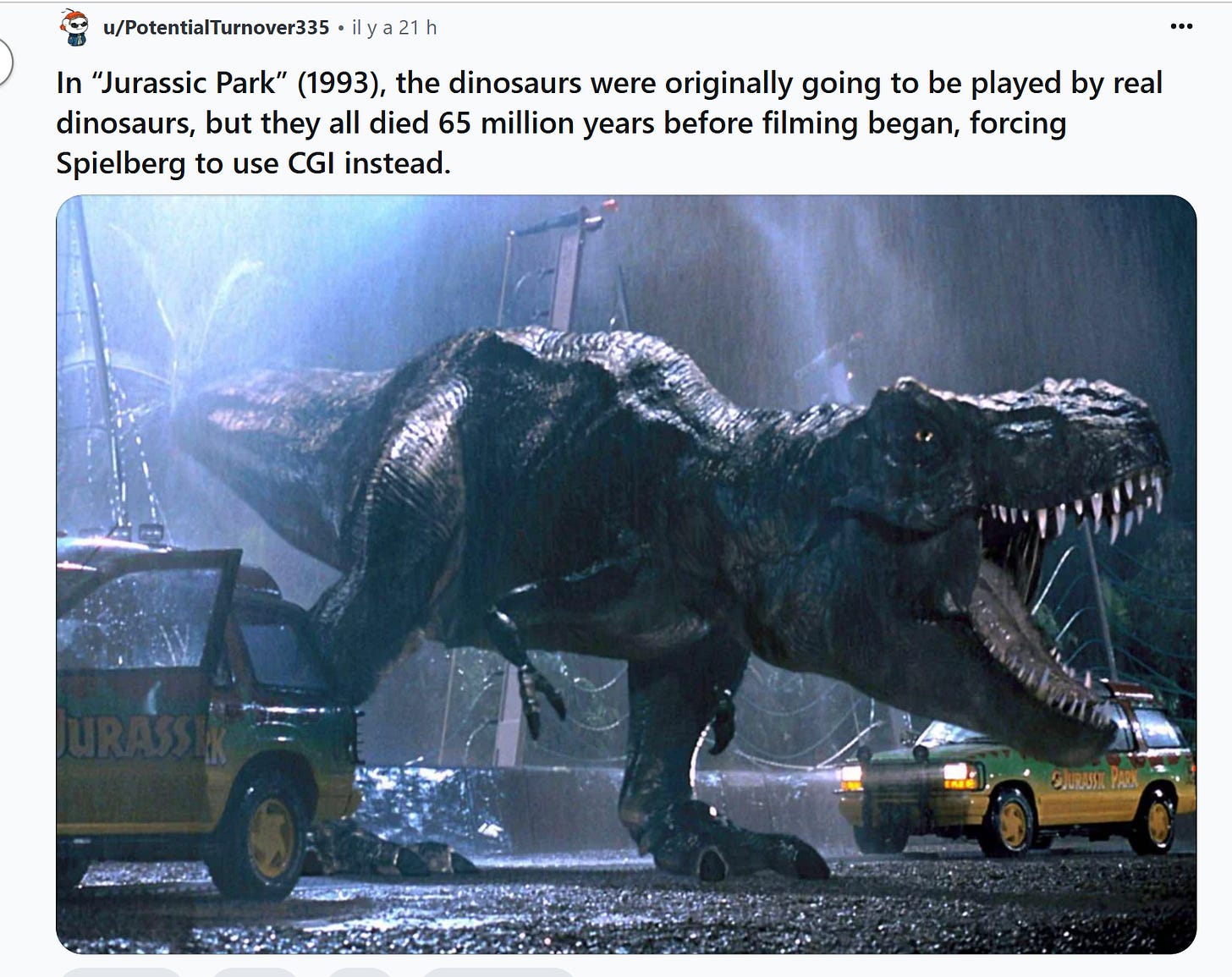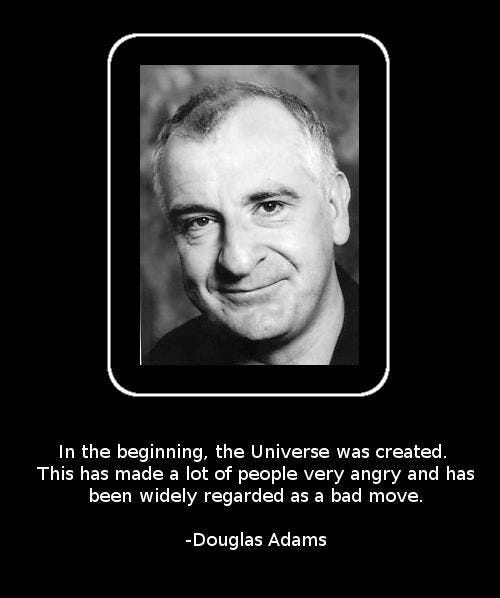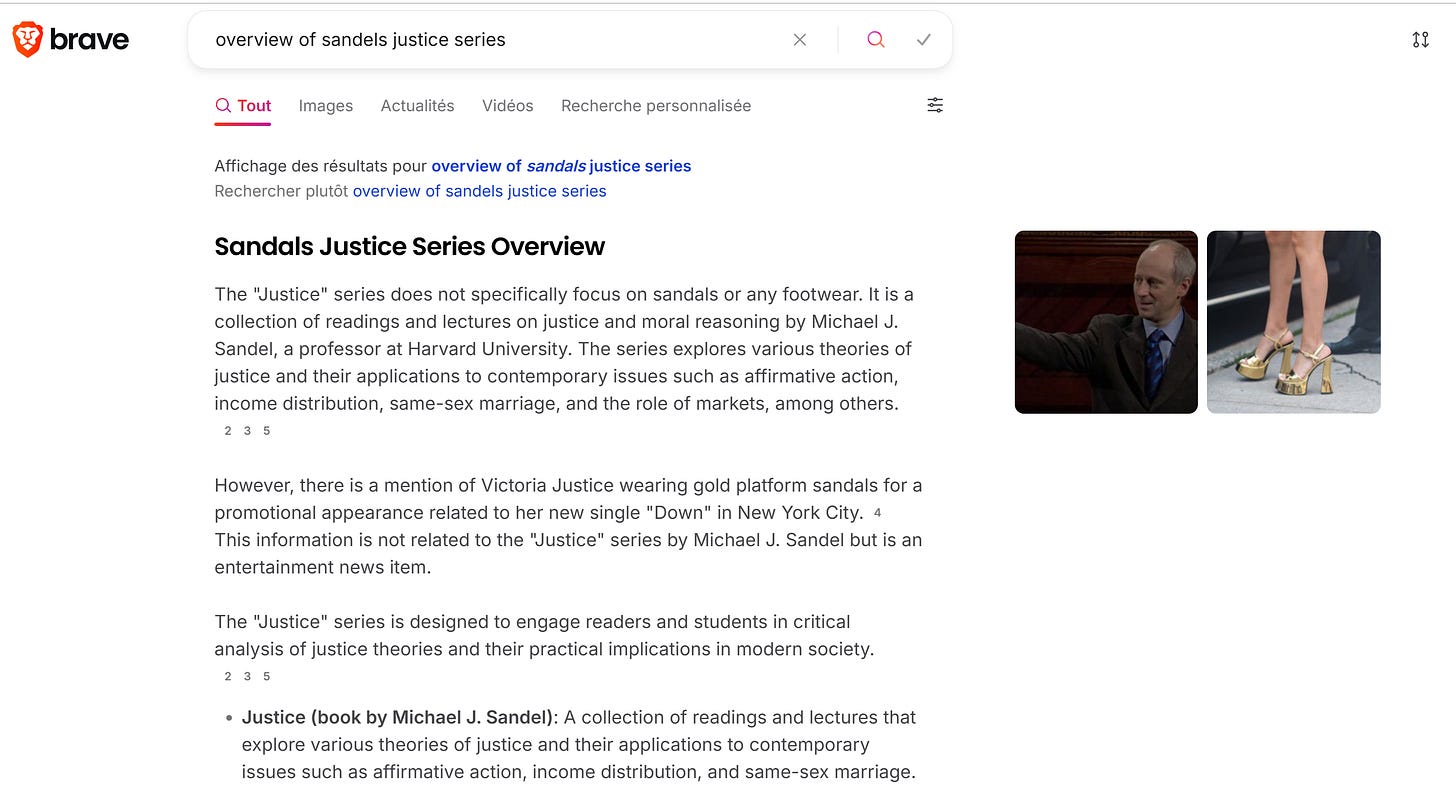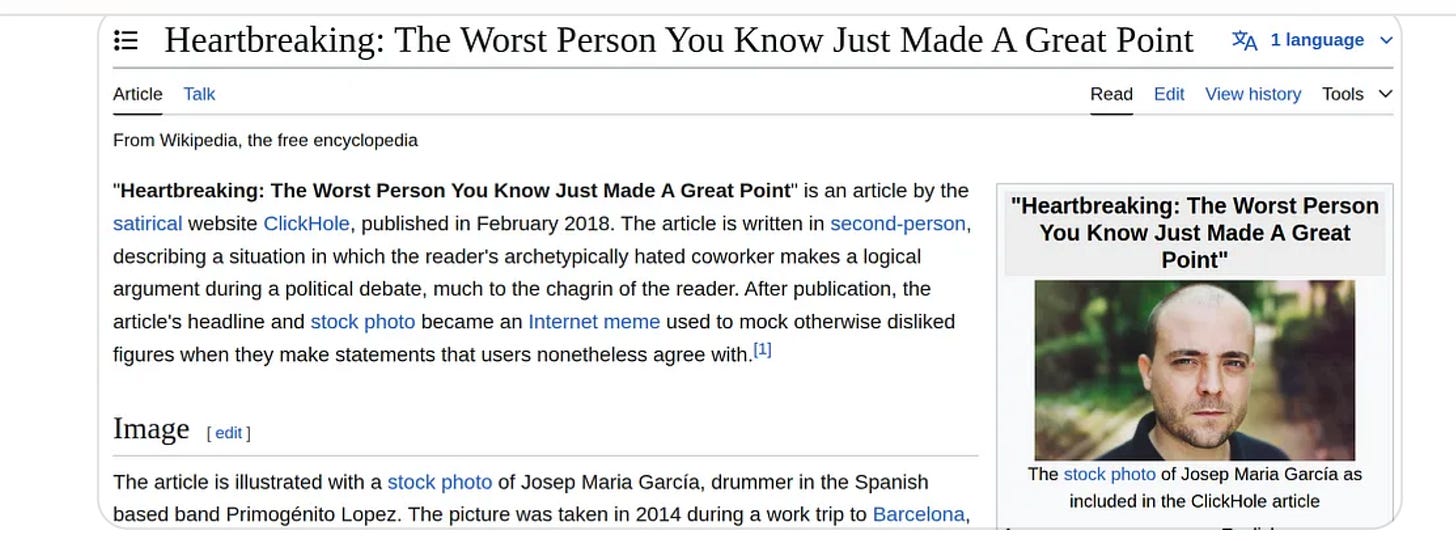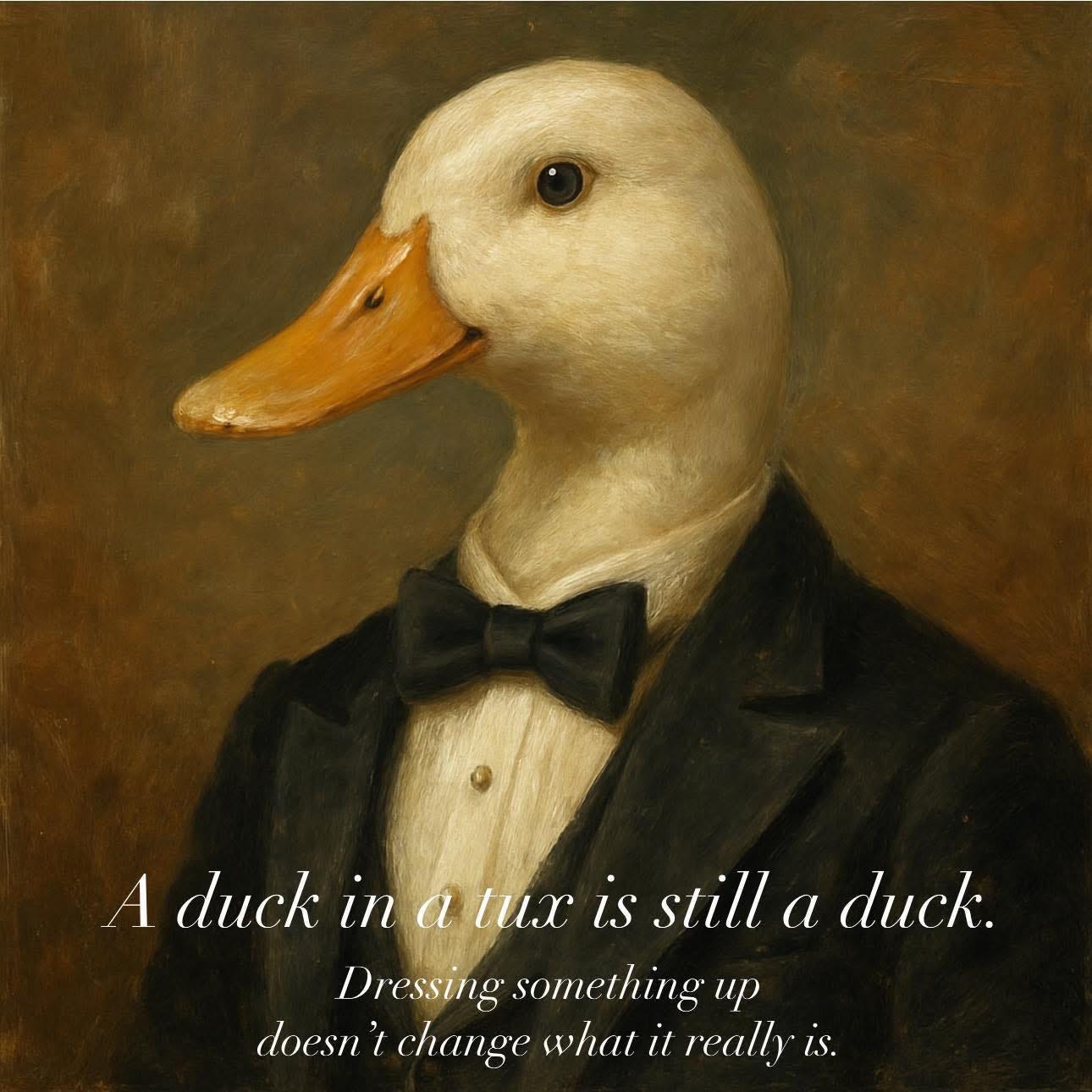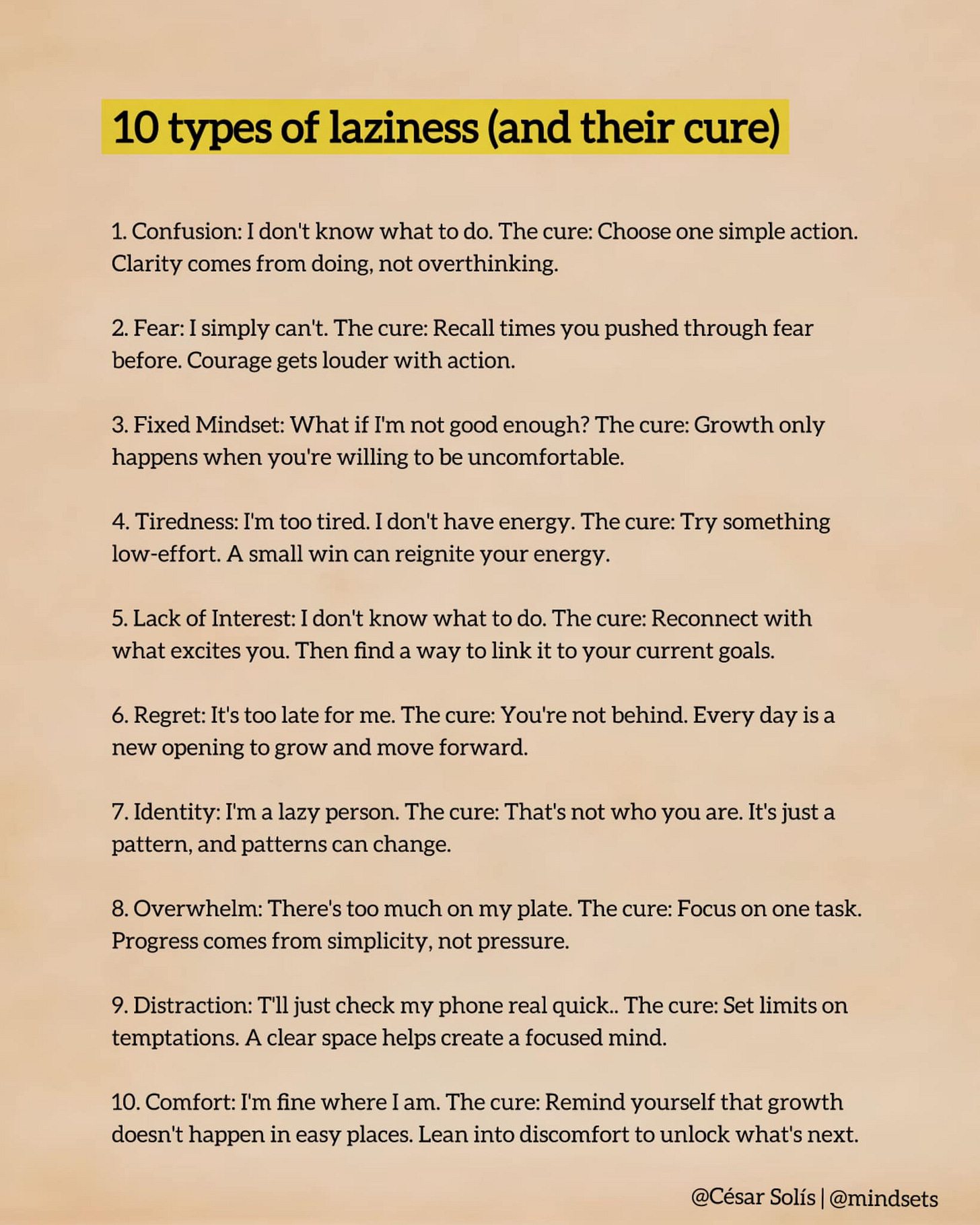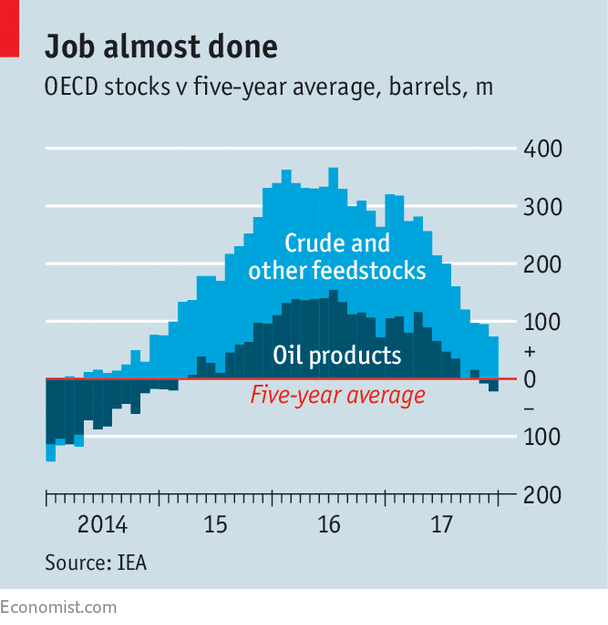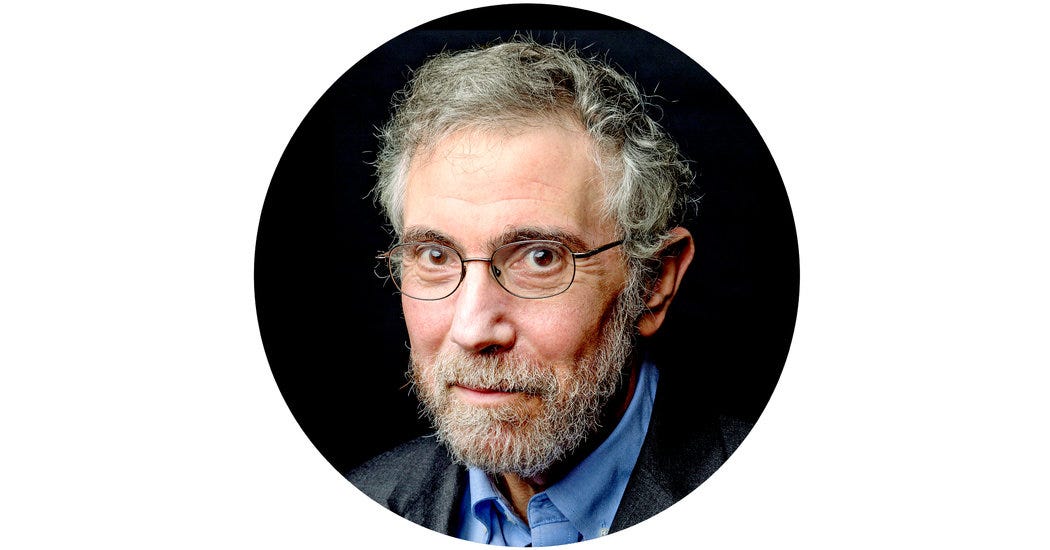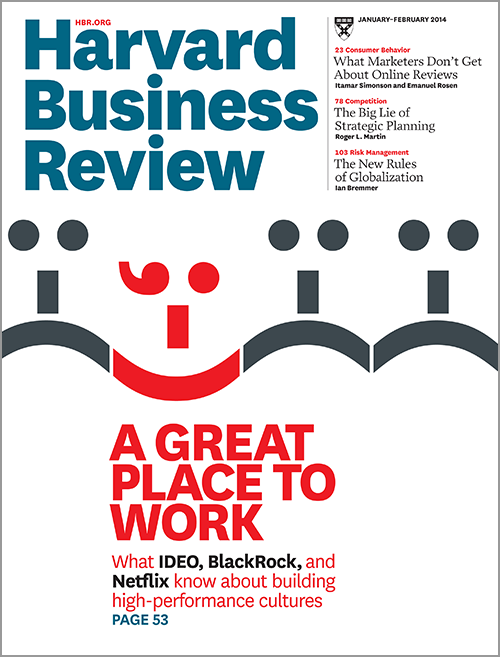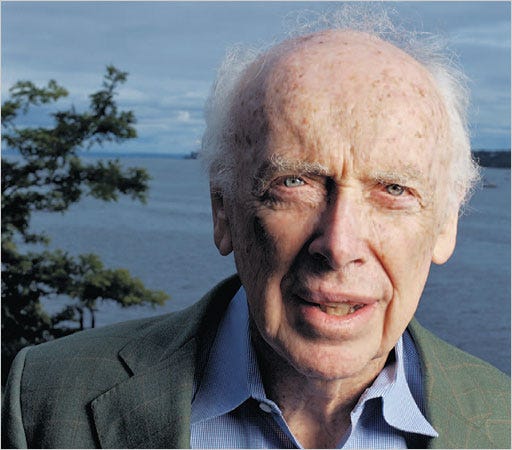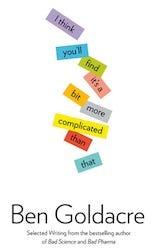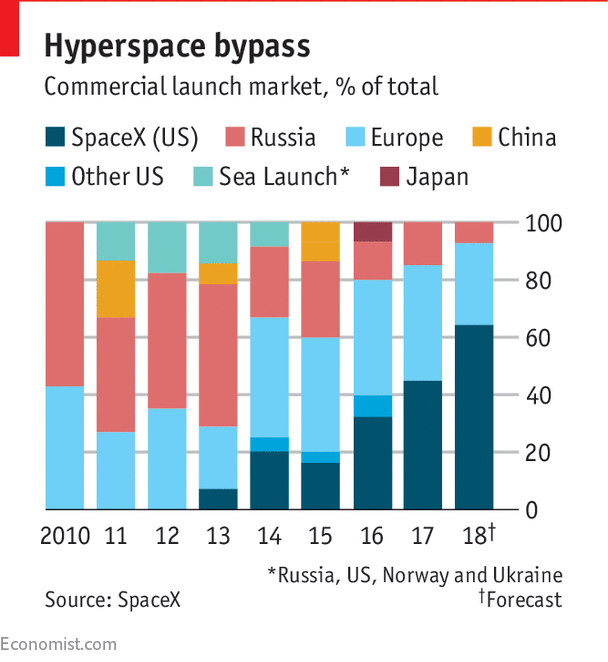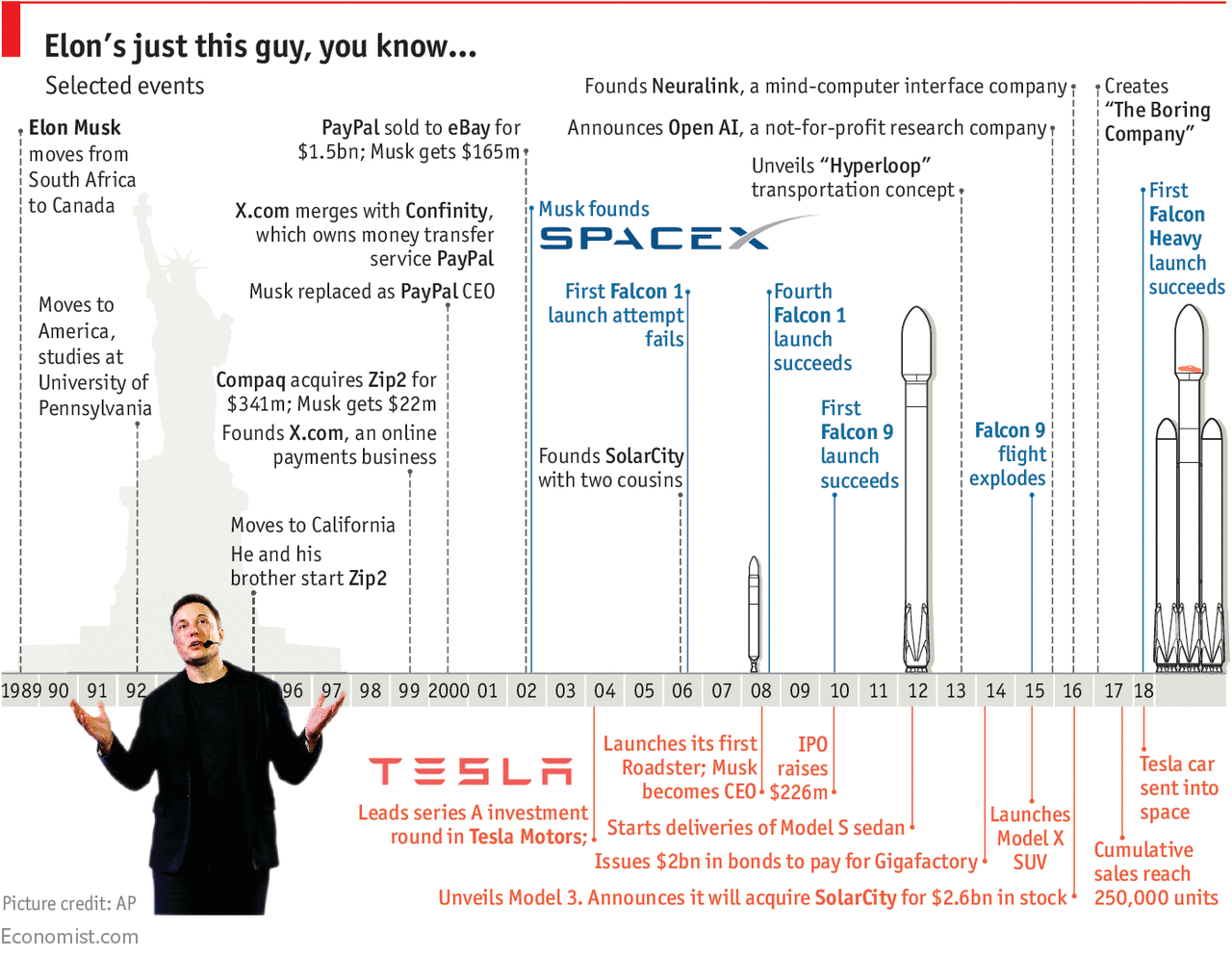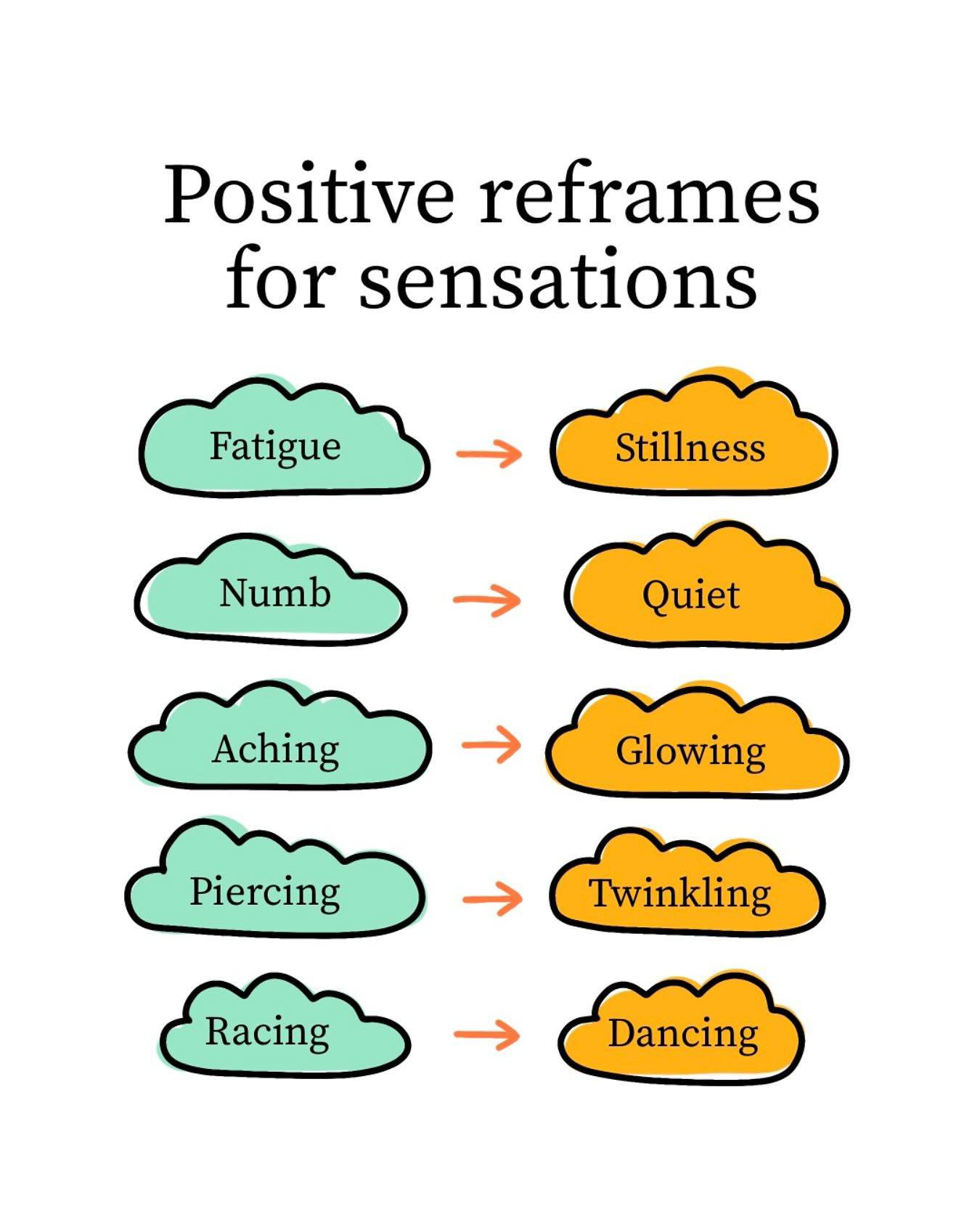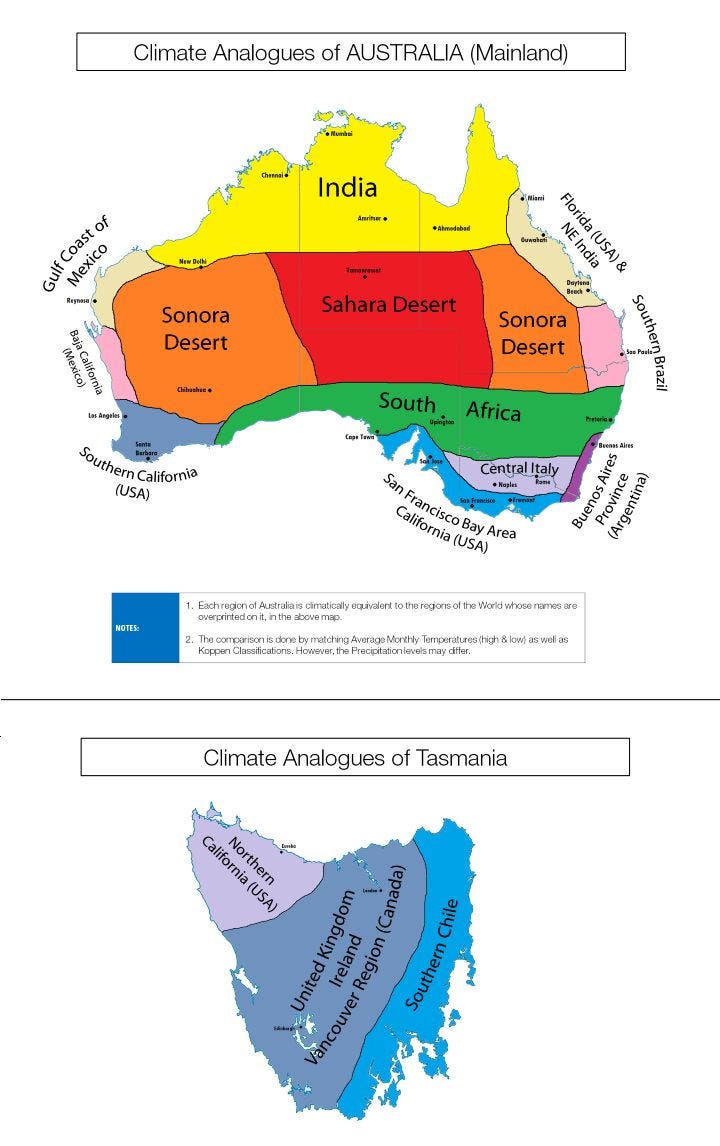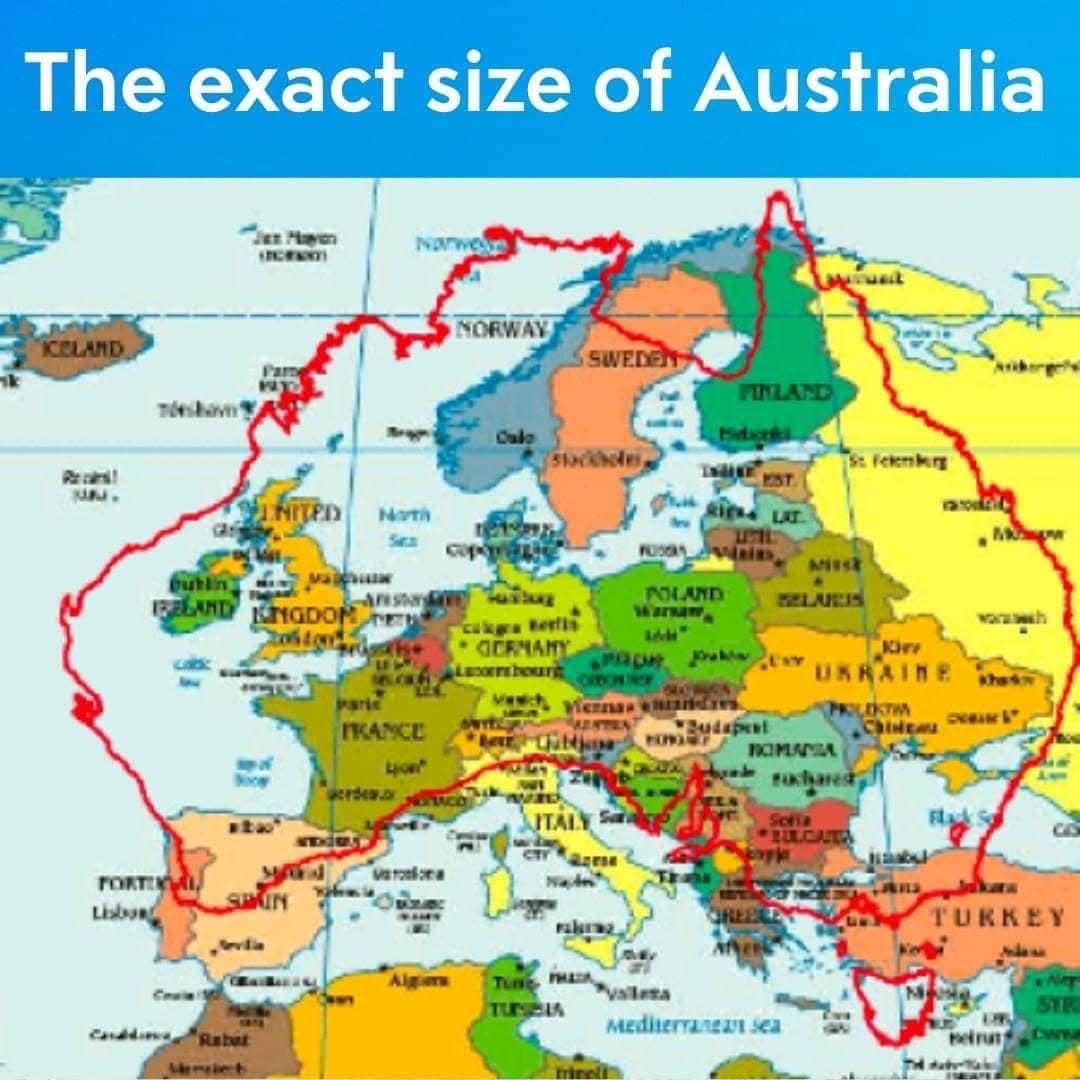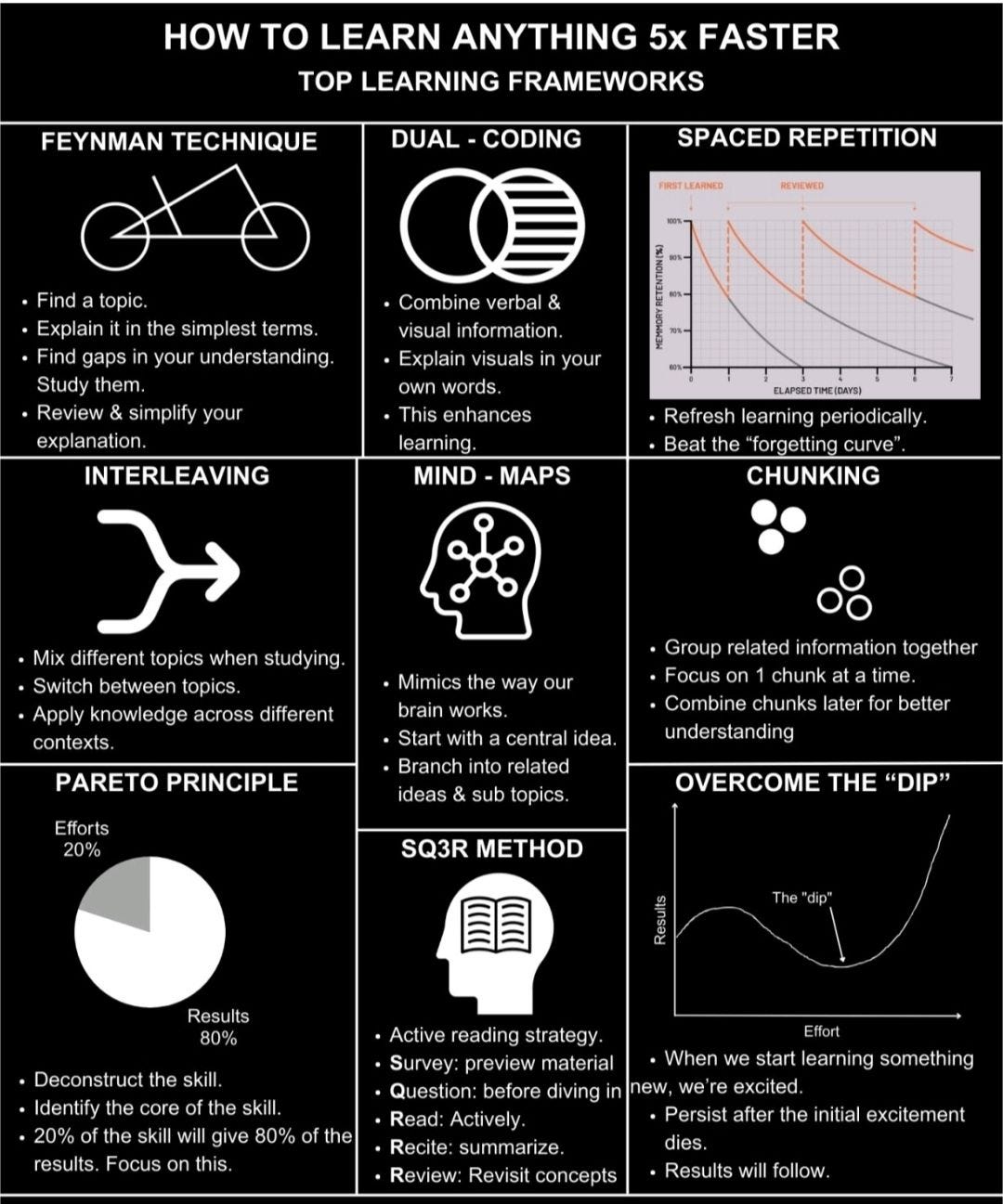A bit random
Feynman The meaning of it all
https://antilogicalism.com/wp-content/uploads/2018/11/meaning-of-it-all.pdf
**
noticing design
https://x.com/culturaltutor/status/1975600972056375541
**
elec https://chatgpt.com/share/68ede765-1fac-8010-9c24-e8ec9e232b6e
electricity
“Once upon a time, there were power companies that instead of electricity distributed power literally by pumping pressurized water through a network of pipes. In many ways water flow is exactly the same thing as the flow of electrons, only without generation of the electric and magnetic fields around the conductors.”
strange deaths https://www.reddit.com/r/AskReddit/comments/16enk8h/what_celebrity_death_seems_a_bit_too_suspicious/
There’s been a lot of recent debate about how to recognize the Antichrist, and I might have more to say about this later, but for now I think people are really sleeping on the forehead inscription.
do it now, momentum, Gen Z
https://substack.com/home/post/p-157766034
ethos https://stlcc.edu/student-support/academic-success-and-tutoring/writing-center/writing-resources/pathos-logos-and-ethos.aspx
https://www.studiobinder.com/blog/ethos-pathos-logos/
You are the sum of/the average of the 5 people you spend most time with.
truth and stats
from slate star William James did an experiment with nitrous oxide and write about it:
It is impossible to convey an idea of the torrential character of the identification of opposites as it streams through the mind in this experience. I have sheet after sheet of phrases dictated or written during the intoxication, which to the sober reader seem meaningless drivel, but which at the moment of transcribing were fused in the fire of infinite rationality. God and devil, good and evil, life and death, I and thous, sober and drunk, matter and form, black and white, quantity and quality, shiver of ecstasy and shudder of horror, vomiting and swallowing, inspiration and expiration, fate and reason, great and small, extent and intent, joke and earnest, tragic and comic, and fifty other contrasts figure in these pages in the same monotonous way. The mind saw how each term belonged to its contrast through a knife-edge moment of transition which it effected, and which, perennial and eternal, was the nunc stans of life. The thought of mutual implication of the parts in the bare form of a judgement of opposition, as “nothing–but,” “no more–than,” “only–if,” etc., produced a perfect delirium of the theoretic rapture. And at last, when definite ideas to work on came slowly, the mind went through the mere form of recognizing sameness in identity by contrasting the same word with itself, differently emphasized, or shorn of its initial letter. Let me transcribe a few sentences.
What’s mistake but a kind of take?
What’s nausea but a kind of -usea?
Sober, drunk, -unk, astonishment.
Everything can become the subject of criticism —
How criticise without something to criticise?
Agreement — disagreement!!
Emotion — motion!!!!
By God, how that hurts! By God, how it doesn’t hurt!
Reconciliation of two extremes.
By George, nothing but othing!
That sounds like nonsense, but it is pure onsense!
Thought deeper than speech…!
Medical school; divinity school, school! SCHOOL!
Oh my God, oh God; oh God!The most coherent and articulate sentence which came was this: There are no differences but differences of degree between different degrees of difference and no difference.
**
Derek Thompson “Show me the last 5 — or 25 — photos/screenshots you took of something interesting” is a fun window into the mind of strangers.
**
Zucman tax
a minimum tax on billionaires equal to 2% of their wealth would raise $200-$250 billion per year globally from about 3,000 taxpayers; extending the tax to centimillionaires would add $100-$140 billion; (iv) this international standard would effectively address regressive features of contemporary tax systems at the top of the wealth distribution; (v) it would not substitute for, but support domestic progressive tax policies, by improving transparency about top-end wealth, reducing incentives to engage in tax avoidance, and preventing a race to the bottom; (vi) its economic impact must be assessed in light of the observed pre-tax rate of return to wealth for ultra-high-net-worth individuals which has been 7.5% on average per year (net of inflation) over the last four decades, and of the current effective tax rate of billionaires, equivalent to 0.3% of their wealth.
from https://www.taxobservatory.eu/publication/a-blueprint-for-a-coordinated-minimum-effective-taxation-standard-for-ultra-high-net-worth-individuals/
***
astral codex
Wikipedia on impossible colors:
In 1983, Hewitt D. Crane and Thomas P. Piantanida performed tests using an eye-tracker device that had a field of a vertical red stripe adjacent to a vertical green stripe, or several narrow alternating red and green stripes (or in some cases, yellow and blue instead). The device could track involuntary movements of one eye (there was a patch over the other eye) and adjust mirrors so the image would follow the eye and the boundaries of the stripes were always on the same places on the eye's retina; the field outside the stripes was blanked with occluders. Under such conditions, the edges between the stripes seemed to disappear (perhaps due to edge-detecting neurons becoming fatigued) and the colors flowed into each other in the brain's visual cortex, overriding the opponency mechanisms and producing not the color expected from mixing paints or from mixing lights on a screen, but new colors entirely, which are not in the CIE 1931 color space, either in its real part or in its imaginary parts. For red-and-green, some saw an even field of the new color; some saw a regular pattern of just-visible green dots and red dots; some saw islands of one color on a background of the other color. Some of the volunteers for the experiment reported that afterward, they could still imagine the new colors for a period of time.
How is this just sitting hidden in a random Wikipedia article? How come there’s no science museum or amusement park where I can use the see-the-impossible-color machine?
5: Elizabeth VN: My Resentful Story Of Becoming A Medical Miracle. This is one of the best examples I’ve read of how a lot of medicine for chronic poorly understood complaints works; doctors shrug, you try dozens of purported miracle cures over the course of decades, if you’re extremely lucky then one of them works, you never learn why or become able to generalize it to other people.
6: Apparently there’s a video podcast with Jordan Peterson and Karl Friston, I haven’t seen it because I don’t watch videos, but it’s an interesting thing to have exist.
City Journal (quoted in Marginal Revolution) on the trend to bar scientists from accessing government datasets if their studies might get politically incorrect conclusions (obviously this isn’t how the policy’s proponents would describe it, they would probably say something about promoting equity and safety). Originally this was just about a few topics around race and IQ, but now it’s expanded to everything from genetic determinants of obesity to the way Alzheimers lowers IQ.
14: Aella on color synaesthesia. Lots of people report feeling like certain numbers are certain colors - but which ones?
here is a lot of debate over whether “critical race theory” is being taught in schools. Zack Goldberg and Eric Kaufmann surveyed 18-20 year-olds about what they were “taught in class or heard an adult say in school” and got nationally representative data. I assume that means we can shift to an exactly equally acrimonious debate over whether the specific things the survey found do or don’t qualify as “critical race theory”. In case it helps, here are some of their figures:
If they stop teaching CRT in schools and need to know what to replace it with, I recommend a lesson on making readable graphs.
**
food
from https://petermeglis.com/blog/hamzas-full-written-diet-guide/#the-obesity-pandemic
to do Scott
“I started with Does Class Warfare Have A Free-Rider Problem, and it took me way too long to figure out that this was one of the major questions sociology was asking, and that “an answer” would look less like “your game theory analogy is missing this one variable” and more like a whole library full of books on what the heck society was. Later the same engagement produced Conflict Vs. Mistake, “Obviously some questions are easier than others, but the disposition to view questions as hard or easy in general seems to separate into different people and schools of thought.”
The network, theoretically we all know this- but practically
see Einstein and Emmy Noether, Emilie du Chatelet,
Pay Pal mafia, YCombinator (Sam)
Open ai, spinoffs, Mira Murati, Anthropic,
Sam Altman - just come up with an idea
**
comparative advantage steel
https://x.com/Rainmaker1973/status/1961666441700319384
more slare star ACX
predictive coding theory of the brain. I started groping towards it (without knowing what I was looking for) in Mysticism And Pattern-Matching, reported the exact moment when I found it in It’s Bayes All The Way Up, and finally got a decent understanding of it after reading Surfing Uncertainty. At the same time, thanks to some other helpful tips from other rationalists, I discovered Behavior: The Control Of Perception, and with some help from Vaniver and a few other people was able to realize how these two overarching theories were basically the same. Discovering this area of research may be the best thing that happened to me the second half of this decade (sorry, everyone I dated, you were pretty good too).
Psychedelics are clearly interesting, and everyone else had already covered all the interesting pro-psychedelic arguments, so I wrote about some of my misgivings in my 2016 Why Were Early Psychedelicists So Weird?. The next step was trying to fit in an understanding of HPPD, which started with near-total bafflement. Predictive processing proved helpful here too, and my biggest update of the decade on psychedelics came with Friston and Carhart-Harris’ Relaxed Beliefs Under Psychedelics And The Anarchic Brain, which I tried to process further here. This didn’t directly improve my understanding of HPPD specifically, but just by talking about it a lot I got a subtler picture where lots of people have odd visual artifacts and psychedelics can cause slightly more (very rarely, significantly more) visual artifacts. I started the decade thinking that “psychedelic insight” was probably fake, and ended it believing that it is probably real, but I still don’t feel like I have a good sense of the potential risks.
In mental health, the field I am supposed to be an expert on, I spent a long time throwing out all kinds of random ideas and seeing what stuck – Boorsboom et al’s idea of Mental Disorders As Networks, The Synapse Hypothesis of depression, etc. Although I still think we can learn something from models like those, right now my best model is the one in Symptom, Condition, Cause, which kind of sidesteps some of those problems. Again, learning about predictive processing helped here, and by the end of the decade I was able to say actually useful things that explained some features of psychiatric conditions, like in Treat The Prodrome. Friston On Computational Mood might also be in this category, I’m still waiting for more evidence one way or the other.
I also spent a lot of time thinking about SSRIs in particular, especially Irving Kirsch (and others’) claim that they barely outperform placebo. I wrote up some preliminary results in SSRIs: Much More Than You Wanted To Know, but got increasingly concerned that this didn’t really address the crux of the issue, especially after Cipriani et al (covertly) confirmed Kirsch’s results (see Cipriani On Antidepressants). My thoughts evolved a little further with SSRIs: An Update and some of my Survey Results On SSRIs. But my most recent update actually hasn’t got written up yet – see the PANDA trial results for a preview of what will basically be “SSRIs work very well on some form of mental distress which is kind of, but not exactly, depression and anxiety”.
One place I just completely failed was in understanding the psychometrics of autism, schizophrenia, transgender, and how they all related to each other and to the normal spectrum of variation. I kind of started this program with Why Are Transgender People Immune To Optical Illusions? (still a good question!), fumbled around by first-sort-of-condemning and then sort-of-accepting the diametrical model of autism and schizophrenia, and then admitting I just didn’t know what was going on in this area and not talking about it much more. I still sometimes have thoughts like “Is borderline the opposite of autism?” or “Are schizoid people unusually charismatic, unusually uncharismatic, or somehow both?”, and I still have no idea how to even begin answering them. Autism And Intelligence: Much More Than You Wanted To Know at least helped address a very tangentially related question and is probably the closest thing to a high point this decade gave me here.
The Nurture Assumption shaped my 2000s views of genetics and development. Ten years later, I’m still trying to process it, and in particular to square the many behavioral genetics studies showing nonshared environment doesn’t matter with the many other studies suggesting it does (see eg The Dark Side Of Divorce and Shared Environment Proves Too Much). I think I started to get more of handle on attachment theory and cPTSD as both being different aspects of the same basic predictive processing concept of “a global prior on the world being safe” – see Mental Mountains and Evolutionary Psychopathology for two different ways of approaching this concept. This made me conclude that I might have been wrong about preschool (though see also Preschool: Much More Than You Wanted To Know). Honestly I am still confused about this. The one really exciting major good update I made about genetics this decade was understanding and fully internalizing the omnigenic model.
One of the big motivating questions I keep coming back to again and again is – what the heck is “willpower”? I started the decade so confused about this that I voluntarily bought and read Baumeister and Tierney’s book Willpower and expected it to be helpful. I spent the first few years gradually internalizing the lesson (which I learned in the 2000s) that Humans Are Not Automatically Strategic (see also The Blue-Minimizing Robot as a memorial to the exact second I figured this out), and that hyperbolic discounting is a thing. Since then, progress has been disappointing – the only two insights I can be even a little happy about are understanding perceptual control theory and Stephen Guyenet’s detailed account of how motivation works in lampreys. If I ever become a lamprey I am finally going to be totally content with how well I understand my motivational structure, and it’s going to feel great.
Speaking of Guyenet, if nothing else this last decade has taught us that Gary Taubes did not solve all of nutrition in 2004, that Atkins/paleo/keto are good for some people and bad for others, and that diet is still hard. See the various Guyenet vs. Taubes and Taubes vs. Guyenet posts, and my 2015 The Physics Diet on where I was at that point. So what is going on with diet? Compressing an entire decade’s worth of research into two words, the key phrase seems to be “set point” (which, credit to Taubes, he was one of the first people to popularize). See eg Anorexia And Metabolic Set Point and Del Giudice On The Self-Starvation Cycle. But what is the set point and how does it get dysregulated? See my book review of The Hungry Brain for the best answer to that I have now (not so good). This whole mess helped me get a better understanding of Contrarians, Crackpots, and Consensus, and eventually ended up with me Learning To Love Scientific Consensus.
In terms of x-risk: I started out this decade concerned about The Great Filter. After thinking about it more, I advised readers Don’t Fear The Filter. I think that advice was later proven right in Sandler, Drexler, and Ord’s paper on the Fermi Paradox, to the point where now people protest to me that nobody ever really believed it was a problem. AI has been the opposite – I feel like the decade began with people pooh-poohing it, my AI Researchers On AI Risk was part of a large-scale effort to turn the tide, and now it’s more widely accepted as an important concern. At the same time, the triumphs of deep learning has made things look a little different – see How Does Recent AI Progress Affect The Bostromian Paradigm? and Reframing Superintelligence – and I’ll be reviewing Human Compatible soon. I also got some really great insights on what “human-level intelligence” means from the good people at AI Impacts, which I wrote up as first Where The Falling Einstein Meets The Rising Mouse and later Neurons And Intelligence: A Bird-Brained Perspective (see also Cortical Neuron Number Matches Intuitive Perceptions Of Moral Value Across Animals and all the retractions and meta-retractions thereof). Overall I think I’ve updated a little (though not completely) towards non-singleton scenarios and not-super-fast takeoffs, which combined with the increased amount of effort being put into this area is cause for a little more optimism than I had in 2010. I know some smart people disagree with me on this.
In the 2000s, people debated Kurzweil’s thesis that scientific progress was speeding up superexponentially. By the mid-2010s, the debate shifted to whether progress was actually slowing down. In Promising The Moon, I wrote about my skepticism that technological progress is declining. A group of people including Patrick Collison and Tyler Cowen have since worked to strengthen the case that it is; in 2018 I wrote Is Science Slowing Down?, and late last year I conceded the point. Paul Christiano helped me synthesize the Kurzweillian and anti-Kurzweillian perspectives into 1960: The Year The Singularity Was Cancelled.
In 2017, I synthesized some thoughts that had been bouncing around about rising prices into Considerations On Cost Disease, still one of this blog’s most popular posts. I felt like early responses were pretty weak, although they brought up a few interesting points on veterinary medicine, cosmetic medicine, and other outliers that I still need to transform into a blog post; Alon Levy’s work on infrastructure in particular has also been great. The first would-be-general-answer that made me sit up and take notice was Alex Tabarrok’s book (link goes to my review) The Prices Are Too Damn High – but I explain there why I don’t think it can be the full answer. The most recent thing I learned (tragically underhighlighted in my wage stagnation post) is that a lot of apparent wage stagnation is due to cost disease – consumer services ballooning in cost means the consumer inflation index rises faster than the business inflation index, productivity gets measured by business inflation, wages get measured by consumer inflation, and so it looks like productivity is outpacing wages. This is still only half of the apparent decoupling, but it’s still a big deal.
The highlight/lowlight of the decade in social science was surely the replication crisis. My first inkling that something like this might exist was in December 2009, from the Less Wrong post Parapsychology: The Control Group For Science. There were a couple of years where people were trying to figure out how bad the damage was; of these, my 90% Of All Claims About Problems With Medical Studies Are Wrong was more optimistic, and my slightly later The Control Group Is Out Of Control was more pessimistic (I still stand by both). As the decade continued, I think we got better about realizing that many to most older studies were wrong, in a way that didn’t make us feel like total Cartesian skeptics or like we were going to have to throw out evolution or aspirin or any of the things on really sound footing. After that it just became fun: my “acceptance” stage of grief produced some gems like 5-HTTLPR: A Pointed Review.
On SSC, I particularly examined some of the replication issues of growth mindset. I started in 2015 by pointing out that the studies seemed literally unbelievable, but so far nobody had tried attacking them. I claim to have been way ahead of the curve on this one – if you don’t believe me, just read the kind of pushback I got. But by 2017, that situation had changed – Buzzfeed posted an article that called the field into question, but still without clear negative evidence. Finally, over the past few years, the negative studies have come pouring in, accented by supposedly “positive” studies by Dweck & co showing effect sizes only a tiny fraction of what they had originally claimed. The latest research (can’t find it right now) is that praising students for effort rather than for ability has no effect on how hard-working or successful they are, debunking the original headline result that got most people interested in the field and nicely closing the circle.
In 2010 I worked with a medical school professor who studied the placebo effect and realized I didn’t understand it at all. Over the past few years I gradually became more convinced of the heterodox position of Gøtzsche and Hróbjartsson, who believe placebo effect doesn’t apply to anything except pain and a few other purely mental phenomena (The Placebo Singers, Powerless Placebos). I’ve since become less convinced that’s true (just today I treated a patient who I’m pretty sure has psychosomatic vomiting from what he falsely believes was a medication side effect, and if belief can cause vomiting, surely it can also treat it). As with so many other things, it was predictive processing to the rescue – see section IV part 7 of my Surfing Uncertainty review. I now think I have a pretty good understanding of how placebos can treat both purely mental conditions and conditions heavily regulated by the nervous system, while still mostly sticking to Gøtzsche and Hróbjartsson’s findings.
I started this decade confused about how to understand ethics given all the paradoxes of utilitarianism. I’m still 90% as confused now as I was then, but I still feel like I’ve made some progress. A lot of my early thinking involved folk decision theory and contractualism – how would you act if you expected everyone else to act the same way? I explored the edges of this idea in You Kant Dismiss Universalizability and Invisible Nation. I’m not how much it helped my search for metaethical grounding, but it helped me get a more robust understanding of liberalism and clarify my views on some practical questions, eg Be Nice, At Least Until You Can Coordinate Meanness and The Dark Rule Utilitarian Argument For Science Piracy. In general I think this has given me a more cautious theory of decision-making that’s occasionally (and terrifyingly) set me against other more anti-Outside-View rationalists. I think the most important shift in my understanding of ethics this decade was the one I wrote up in Axiology, Morality, Law (formerly titled “Contra Askell On Moral Offsets”), which isn’t related to grounding utilitarianism at all but sure helps make the problem less urgent
Despite my better judgment, I waded into politics a lot this decade. I Can Tolerate Anything Except The Outgroup produced this blog’s first “big break”, but it admitted it didn’t really understand the factors underlying “tribe”. Since then Albion’s Seed helped provide another piece of the puzzle, and a better understanding of class provided another. I went a little further discussing why tribes have ideologies associated with them in The Ideology Is Not The Movement, how that is like/unlike religion in Is Everything A Religion?, and hammered it home unsubtle-ly in Gay Rites Are Civil Rites.
I wrote the Non-Libertarian FAQ sometime around 2012 and last updated it in 2017. Sometime, possibly between those dates, I read David Friedman’s A Positive Account Of Property Rights, definitely among the most important essays I’ve ever read, and got gold-pilled (is that a term? It should be a term). I’ve since been trying to sort this out with things like A Left-Libertarian Manifesto, and trying to move them up a level as Archipelago. James Scott’s Seeing Like A State and David Friedman’s Legal Systems Very Different From Ours were also big influences here. Like all platitudes, “government is a hallucination in the mind of the governed” is easy to understand on a shallow level but fiendlishly complicated on a deep level, but I feel like all of these sources have given me a deep understanding of exactly how it’s true.
The rightists (especially Moldbug) get the other half of the credit for helping me understand Archipelago, and also deserve kudos for teaching me about cultural evolution. My first attempts to engage with this topic were nervous and halting – see eg The Argument From Cultural Evolution. I got a much better feel for this after reading The Secret Of Our Success, and was able to bring this train of thought back to its right-wing roots Addendum To Enormous Nutshell: Competing Selectors. I’m grateful to the many rightists who argued about some of these points with me until they finally stuck.
I had more trouble engaging with leftists. I started with Does Class Warfare Have A Free-Rider Problem, and it took me way too long to figure out that this was one of the major questions sociology was asking, and that “an answer” would look less like “your game theory analogy is missing this one variable” and more like a whole library full of books on what the heck society was. Later the same engagement produced Conflict Vs. Mistake, which I am informed is still unfair and partially inaccurate, but which (take my word for it) is a heck of a lot better than the stuff I was thinking before I wrote it. More recently I’ve been trying to figure out a sympathetic account of activism (as opposed to the unsympathetic account that it’s virtue signaling and/or people who are really bad at figuring out what things are vs. aren’t effective). You can sketch the outline at Respectability Cascades and Social Censorship: The First Offender Model, and I’ll sketch the whole thing out sometime when I have enough emotional energy to deal with the kind of people who will have opinions on it.
I also had to grapple with the sudden rise of social justice ideology. I’m proud of my work on gender differences – both what I learned, how I wrote it up, and the few bits of original research I did (eg Sexual Harassment Levels By Field). My knowledge and claims started off kind of weak (Gender Differences Are Mostly Not Due To Offensive Attitudes), but I eventually feel like I got a really great evidence-based basically-airtight theory of what is going on with gender imbalances in different fields, which I posted most of in Contra Grant On Exaggerated Differences (I’m still thankful for the commenter who solved that one remaining paradox about math majors). And despite all the mobs and vitriol I think sound science has basically triumphed here – I was delighted to recently see as mainstream a blog as Marginal Revolution recently publish, without any caveats or double-talk, a post called Sex Differences In Personality Are Large And Important and get basically no pushback. I was a lot more pessimistic around 2017 or so and described some thoughts on how to make a strategic retreat in Kolmogorov Complicity And The Parable Of Lightning, which I still think is relevant in some areas. But I actually start the new decade really optimistic – I haven’t written up an explanation of why, but careful readers of New Atheism: The Godlessness That Failed may be able to figure it out, especially if they apply some of the same metrics I used there to track how social justice terms have been doing recently.
Upstream of politics, I think I got a better understanding of…game theory? Complex system dynamics? The most important post here was Meditations On Moloch; the sequel/expansion, whose thesis I have yet to write up in clear prose, is The Goddess Of Everything Else. Reading Inadequate Equilibria was also helpful here.
My understanding of “enlightenment” went from total mystical confusion to feeling like I have a pretty good idea what claims are being made, and mostly believing them. This line of thinking started with the Mastering The Core Teachings Of The Buddha review, and then was genuinely helped by Vinay Gupta’s contributions summed up in Gupta On Enlightenment, despite the disaster in the comments of that post. From there I progressed to reading The Mind Illuminated, and Is Enlightenment Compatible With Sex Scandals led me to discover The PNSE Paper, which as much as anything else helped ground my thinking here (the comments there were pretty good too).
And thanks to all of you who took the survey, I went from skepticism of birth order effects to saying Fight Me, Psychologists: Birth Order Effects Exist And Are Very Strong. This was bolstered by Eli Tyre and Bucky’s posts on Less Wrong about birth order in mathematicians and physicists respectively. Last year I expanded on that with a post on how birth order responded to age gaps (somewhat updated and modified here, thanks Bucky).
Not many of these were total 180 degree flips in my position (though birth order, preschool, psychedelic insight, and the rate of scientific progress are close).
166 Responses to What Intellectual Progress Did I Make In The
**
and some things that just made me smile
*
see courage
and the opposite- food companies and chemical companies, deliberately trying to make people obese and kill them
*
look upon my works, ye mighty
**
diamond peak oil ruppert
https://web.worldbank.org/archive/website01603/WEB/SYSTEMS_.HTM
musk
https://www.lesswrong.com/posts/CYTwRZtrhHuYf7QYu/a-case-for-courage-when-speaking-of-ai-danger
(Nate Soares)
but i didn't have the time
https://quoteinvestigator.com/2012/04/28/shorter-letter/
https://withoutbullshit.com/blog/paul-romer-set-reform-writing-world-bank-lost-job
http://timharford.com/articles/undercovereconomist/articles/otherwriting/
systems approach?
https://blogs.worldbank.org/publicsphere/what-systems-approach-anyway

What is a systems approach, anyway? | People, Spaces ...
“It makes me a little crazy when you keep saying systems.” – Jowhor Ile, in And After Many Days At home, we have a porchlight at the entrance to our house. If I ...
peterson you would be a nazi

Forgotten Hero | Hugh Thompson Jr.
Mary Harrington in Unherd
“One of the prevailing divisions can be crudely summed up as “nationalist” versus “globalist”. That is: on one side, a belief that groups of people are entitled to draw boundaries around an in-group, and confer privileges to that group based on internally determined measures of belonging. This is the worldview held, by and large, by the majority of Americans who support Trump’s deportation programme: citizenship means something, and you shouldn’t get to be an American citizen, with all its perks, just by crossing a border and existing in the country for a given period of time. For this group, deporting people in the country illegally is obviously the right course of action.
Against this stand a range of more or less utopian globalists, who believe national boundaries are variously arbitrary, cruel, racist and/or fascist, or simply bad for the economy. A cluster of such sentiments, for example, animates a recent Washington Post article lamenting the deportation from wealthy New England holiday island Martha’s Vineyard of “undocumented workers who form the backbone of the workforce”. The article’s hand-wringing over the impact of ICE raids on local pool maintenance and construction projects offers a clue as to the role played by “undocumented workers” in such elite playgrounds: a fortunate convergence of utopian ideals with economic interest.”
***
trends cremieux
***
https://x.com/weirddalle/status/1937080989638951055
performative?
https://x.com/UNGeneva/status/1929946397245051178
***
billions and trillions
https://x.com/elonmusk/status/1930146068286845200
***
More on Bayes
Eliezer wrote his famous essay back in 2003 (which Khalid Azad helpfully summarized in 2007), Steven Pinker in Rationality, Julia Galef speaks about it on BigThink,Nietzsche’s “Dionysian” vs. “Apollonian” modes, and to Claude Lévi-Strauss’s “the bricoleur” vs. “the engineer”, and to Alasdair MacIntyre’s critique of modernity. Erik Hoel’s “intrinsic” vs. “extrinsic” perspectives.
Kahneman’s “System 1” and “System 2” and Jonathan Haidt’s “the elephant” and “the rider”.
**
Don’t look to see if an issue is supported by the left or the right before deciding what your view is.
expanding universe
“We can only observe part of the universe—the "observable universe"—which is expanding.
It's possible the entire universe is infinite and has always been infinite, so asking "what it's expanding into" is meaningless. It's just getting less dense.
The boundary we talk about (46 billion light-years away) is not an edge—just the limit of what light has had time to reach us from.”
**
from fb
from fb
**
**
***
*****
In its original formulation, the "Ship of Theseus" paradox concerns a debate over whether or not a ship that has had all of its components replaced one by one would remain the same ship.[1] The account of the problem has been preserved by Plutarch in his Life of Theseus:[2]
The ship wherein Theseus and the youth of Athens returned from Crete had thirty oars, and was preserved by the Athenians down even to the time of Demetrius Phalereus, for they took away the old planks as they decayed, putting in new and strong timber in their places, insomuch that this ship became a standing example among the philosophers, for the logical question of things that grow; one side holding that the ship remained the same, and the other contending that it was not the same.
— Plutarch, Life of Theseus 23.1
Over a millennium later, the philosopher Thomas Hobbes extended the thought experiment by supposing that a ship custodian gathered up all of the decayed parts of the ship as they were disposed of and replaced by the Athenians, and used those decayed planks to build a second ship.[2] Hobbes then posed the question of which of the two resulting ships—the custodian's or the Athenians'—was the same ship as the "original" ship.[1]
from Philosophy matters on fb
***
from political compass
from Carrick Ryan
“It then uses a statistical model to predict the most likely next word based on the conversation so far, based on patterns it learned during training.
But it's not just guessing which word comes next in each sentence. It builds internal representations of meaning, relationships, logic, and style over long spans of text.
It can reason, summarise, infer, translate, solve problems, and write original code or essays; not because it "knows" or "understands" like a human, but because it has learned to model the patterns of language and thought so well it is almost indistinguishable from a human mind.
It doesn't tell us the truth, it makes a calculation on what the truth is statistically most likely to be based on the written records of our language.”
check out population density chart then Danes!
https://en.wikipedia.org/wiki/List_of_countries_and_dependencies_by_population_density
**
**Pension reform, art, ads, jokes,cathedrals,DNA metaphor, thirst,
rich list versus Farage promises, follow the money.
AI scott
women only F1 the Academy
****
cycling rowing- mixed sex rowing teams?
***
In 2023, scientists uncovered the secret behind ancient Rome’s enduring architecture: self-healing concrete. Unlike today’s brittle blends, Roman builders packed their mix with special lime chunks. When water seeps into a crack, these lime particles react and crystallize—effectively sealing the damage. This 2,000-year-old “liquid stone” quietly repairs itself over time.
It’s why structures like the Pantheon and aqueducts still stand tall, while modern concrete often crumbles in just decades. The Romans weren’t just master builders—they were materials scientists far ahead of their time. Their forgotten genius is now helping shape the future.
Sources: Science Advances (2023), MIT Materials Lab, "Roman Concrete: The Hidden Science" by Marie Jackson
**
equality equity Rawls here
“Rawls took issue with the idea that happiness should even be the focus of a theory of justice. Justice, he thought, was about distributing the benefits and burdens of cooperation, and happiness was not really a direct product of cooperation. The problem is that people formulate their own life plans, according to various conceptions of the good, and the success of these plans is a major determinant of their achieved happiness levels. So happiness seems like the wrong thing for “society” to be concerned about, because it is too much under the control of individuals. Instead of looking at the output of people’s life plans, Rawls argued, a theory of justice should focus instead on the inputs, which is to say, the various liberties and goods that they require in order to carry out their plans.
Because of this, Rawls claimed that the “basis of expectations” in a theory of justice should be a list of what he called “primary goods,” including most importantly income and wealth.”
Sandel on Rawls https://sandel.scholars.harvard.edu/justice
*
**
Macron and the tissue https://x.com/BasedMillwall/status/1921568572788076865
Cocaine https://x.com/DrWoofAus/status/1922209232222355785
**
Autres temps, autres moeurs
L'expression "autres temps, autres mœurs" signifie que les comportements et les coutumes changent avec le temps. Elle indique que les gens se comportent différemment selon l'époque dans laquelle ils vivent.234 Cette expression provient d'une œuvre de La Bruyère, publiée en 1693.5 Elle est utilisée pour exprimer l'idée que les mœurs évoluent et que ce qui était acceptable ou courant dans le passé ne l'est plus nécessairement aujourd'hui.
***
76-year-old French movie star Gérard Depardieu was found guilty of sexual assault and given an 18-month suspended prison sentence
76-year-old actor Fanny Ardant (who starred alongside Depardieu in François Truffaut’s The Woman Next Door) testified in support of her friend Depardieu. She made her entrance in a long black dress and white collar, and delivered a passionate monologue about the art of acting. “I know we are here to search for the truth, but I would like to broaden the debate and say why Gérard Depardieu is such a great actor. He is a genius at giving his characters depth and richness, and a complexity with its share of contradiction, good and evil, light and shadow. Any genius carries in them something extravagant, rebellious and dangerous (…) If he is loved all over the world it is because everyone can recognise themselves in the characters he plays. (…) Yes, he has a big mouth, yes, he shouts obscenities, yes, he plays the fool. Without taking risks, one is no more an artist, one is just a servant.”
Ardant ended: “I know the world has changed, I know we now find intolerable what we used to tolerate and that institutions are here to transform society, but fear should not become the new morality.” The court’s president thanked Ardant for “this beautiful portrait of Gérard Depardieu” and, implacable, reminded the actor that “we are not here for morality purposes; we are here to apply the law. And to look at facts of sexual assaults.” Indeed.
**
Buffett on debt
https://x.com/PrefShares/status/1907785340703609302
**
Language
exploding deer
https://x.com/welshbollocks/status/1904090758077923822
**
**
Europe at night from Brilliant maps
Jane Jacobs
https://x.com/atlanticesque/status/1909605326279553304
**
Taleb on jobs
https://x.com/TalebWisdom/status/1911412707271549323
As Oscar Wilde said, there is only one thing worse than being employed…
Jansen chair
https://x.com/Rainmaker1973/status/1906579711628616082
**
Stewart Lee taxi
****
Von der Leyen https://x.com/business/status/1922567146124493081
**
**
This is the best concise writeup of how to build a relationship that I’ve ever seen
How Relationships Actually Work
53
2
I love this list of hobbies! I am slowly learning to cultivate my own habit of hobbies that bring me joy.
adult hobbies worth trying
377
1
for anyone at a loss for “what to do” for community building - pls read this actionable guide ♥️
Deeply Human Guide to Social Circles That Make You Feel Alive Again
72
3
I've been writing this post for 10 years.
Ultra-Processed Minds: The End of Deep Reading and What It Costs Us
81
2
A Truly life changing Article. I have been left questioning everything I know since.
How To Understand Things
302
3
Excellent analysis. I was halfway through writing one but this is better. Recommended!
Review: AI 2027
10
2
A lot of information packed into a lovely, lucid essay.
How To Think Slowly
20
1
Just great
21 observations from people watching
55
4
***
Bonhoeffer didn’t become brave in a prison cell.
He became brave in early mornings, hard choices, honest prayers, and costly decisions.
Martyrdom doesn’t begin at the noose.
It begins the moment you choose truth over popular.
And most of us get that chance every single day.
**
**
Think different-ly (Steve Jobs) Do different?
credit where credit is due- Aristotle
Emily is right. What we are dealing with in education isn’t simply a problem with technology brought about because of ChatGPT, but a crisis of purpose that has been long in the making.
****
from substack here by Sam Kriss
“I’m not a listener, because I’m basically allergic to podcasts in general. Podcasts make you stupid. When you listen to one you’re not really listening; you’re just bathing in simulated friendly chatter to convince the monkey part of your brain that you’re not a terminally friendless loser, which you are. (Consider: you could watch a film or a TV show or even some YouTube bullshit with a friend or romantic partner, but never a podcast. Podcasts are only consumed alone.) But despite not being a listener, I’m aware of what Rogan is. He has the world’s most popular podcast because he’s provided a welcoming environment for fringe weirdos, and people like to hear from fringe weirdos.”
“Who needs to be told that their own side is composed of faultless angels who have never done anything wrong in their lives, while their enemies are all bubbling in a black ooze out of the deepest chasms of Hell?”
(“War- what is it good for? Absolutely nothng, say it again”)
“What, at root, is the difference between these Israeli Überfrauen and the ungrateful toddlers of London and New York? ‘Young Israelis do not have the luxury of deciding whether they like war or develop grand ideas such as “war doesn’t solve anything.”’ He’s not wrong! If you’re a young, non-Haredi Israeli Jew and you decide that your moral convictions forbid you to join the army, the state can arrest you and send you to prison. Older Israelis don’t have that luxury either; they’re routinely arrested for criticising the army or mourning its victims. I think I prefer the decadent West.”
“but what he says is true: the debate over assisted dying has been a significant one in Britain. It’s one I’m interested in, because I’ve been on both sides in quick succession. I thought I was implacably against until earlier this year, when I had to watch my mother slowly dying in a hospital ward, and learned first-hand what unassisted dying really means. Maybe one day I’ll write about it.”
**
More Sam Kriss here
“Jacques Derrida’s critics accused him of being an ovist too, which he denied — sort of. “What interests me about eggs,” he said, “is not the egg as origin, the thought that the existence of things can be explained by reference to the egg, but the egg — if indeed we can speak of an egg — as a series of infinite deferrals of origin, already containing in an absent presence all that it originates. But how can I speak of eggs when, in order to arrive, to be heard, first my speech must be, from its very origin, already hatched, that is, it must already have erased the egg of its originless origin?” “
***
*****
BOZE
Reading about the insane numbers of books that ordinary working people used to read a hundred years ago feels like seeing pictures of the Pacific Ocean back when it teemed with whales. It’s honestly shocking what an intellectual culture we had. On the floors of tailoring factories, workers debated Marxism. Old couples with no formal education read to each other in Latin. Jane Austen and George Eliot were posthumous celebrities. In his book The Intellectual Life of the British Working Classes, Jonathan Rose tells how publishers had to “churn out school editions of Scott, Goldsmith, Cowper, Bacon, Pope and Byron” to keep up with demand from students. Traveling preachers introduced farmers to Milton and Tolstoy. Shakespeare reduced prisoners to tears. Up to the 1950s, coal miners built and maintained their own lending libraries. Unschooled Irishmen “somehow picked up a broad knowledge of etymology.” A young woman scared away suitors by revealing that she had read In Search of Lost Time three times. And again, folks a century ago weren’t inherently more intelligent than we are. I believe we could revive a culture, not of intellectuals but of autodidacts. People who are curious about the world, who are excited to learn and study together in community.
4 k
137
559
Stephen Fry versus Julie Burchill
jk by Julie Burchill
https://x.com/WingsScotland/status/1937065414300668278
**
https://statmodeling.stat.columbia.edu/2025/03/27/solve-a-simpler-version-of-the-problem/
****
They are working on that, the problem is that so far the AI tends to make "predictions" rather than diagnoses:
https://healthcare-in-europe.com/en/news/ai-connect-knee-xray-beer-drinking-shortcut-learning.html
"Using knee X-rays from the National Institutes of Health-funded Osteoarthritis Initiative, researchers demonstrated that AI models could “predict” unrelated and implausible traits, such as whether patients abstained from eating refried beans or drinking beer. While these predictions have no medical basis, the models achieved surprising levels of accuracy, revealing their ability to exploit subtle and unintended patterns in the data.
“While AI has the potential to transform medical imaging, we must be cautious,” said Peter L. Schilling, MD, MS, an orthopaedic surgeon at Dartmouth Health’s Dartmouth Hitchcock Medical Center (DHMC), who served as senior author on the study. “These models can see patterns humans cannot, but not all patterns they identify are meaningful or reliable. It’s crucial to recognize these risks to prevent misleading conclusions and ensure scientific integrity.”
google search
x new mosques being built
try clicking on this link- it takes you to…
this website
https://www.hearstnetworks.com/
not this one
****
Hassabis
cure all disease in 10 years
a coal mine- manufacturing jobs
French study- right happier than left
**
Reform vs globalisation
China WTO complaints
***
single stairway buildings from vox
“A fight about stairs could reshape American cities
By Rachel Cohen
Vox
13 min
May 8, 2025
A fight about stairs could reshape American cities
Reformers say tweaking construction rules can unleash affordable housing.
May 8, 2025, 10:00 AM UTC

Rachel Cohen is a policy correspondent for Vox covering social policy. She focuses on housing, schools, homelessness, child care, and abortion rights, and has been reporting on these issues for more than a decade.
Michael Eliason was an undergraduate studying architecture at Virginia Tech University when he went to live for a year in Germany. While interning in Freiburg in 2003, he worked on projects including apartment buildings four or five stories tall. After returning to the US and graduating, Eliason began his architecture career in Seattle, where he soon noticed that all the buildings he worked on kept getting “bigger and bigger.” It felt to him “like the exact opposite of my experience working in Germany.”
Reviewing his portfolio years later, Eliason noticed a stark contrast: All the US apartment buildings were massive and deep, while the European ones were relatively thin, featured different unit layout sizes, and welcomed significantly more natural light. He couldn’t quite articulate the significance yet, but he began to recognize that the German approach seemed to be the standard for urban housing throughout Europe, South America, and Asia.
In 2019, Eliason moved back to Germany with his wife and children. Before the first day at his new job, he and his soon-to-be boss discussed a 12-story housing project that had recently won a competition. Eliason was confused by the blueprint.
“There needs to be a second stair, right?” he asked. “Because in the US we would require a second stair for anything over three stories.” His new employer was puzzled by the question and explained that adding a second staircase would make the project financially infeasible.
“That was really the turning point for me,” Eliason told Vox. “The realization that the way we do housing in the US is radically, radically different from the rest of the world.”
He began sharing his observations on Twitter (since renamed X) and was joined by Stephen Smith, a New York-based urbanist writer who also frequently posted about architecture and real estate. Eliason, Smith, and a group of like-minded thinkers soon formed an informal coalition (and a group chat), introducing the concept of single-stair housing to American audiences. Ever since, they’ve been making the case that modernizing US building codes to permit this design could unleash more affordable housing nationwide — and their approach is winning even in the face of opponents who warn it’s unsafe.
In the United States, abundant forests and rapid westward expansion made wood the building material of choice. Unlike Europe, where dense cities and a long history of urban fires pushed builders toward brick and stone, Americans prioritized speed and cost — decisions that shaped building safety norms for generations.
“The US just had a lot of land, and so our fire protection measures ended up relying more on space,” explains Alex Horowitz, the project director of Pew Research Center’s housing policy initiative. This strategy of spacing out homes meant that compact building just wasn’t as necessary in America as it was elsewhere. Even today, multifamily housing makes up less than a third of America’s housing stock.
For centuries, most American apartment buildings had a single interior staircase. Then came a devastating Manhattan tenement fire in 1860. In response, the New York legislature passed a law requiring fire escapes on new residential buildings. This second exit safety philosophy became deeply rooted in American construction culture. As National Fire Protection Association engineer Val Zeevris put it, “In the United States in particular, free egress is just one of the fundamental concepts that we use as fire protection engineers. … So there’s that underlying concern that when there’s only one exit stair, we’re taking away people’s choice.”
Tragedies like the Triangle Shirtwaist Factory fire only deepened this mindset. When a fire broke out on the upper floors of a 10-story factory in 1911, firefighters arrived quickly, but their ladders couldn’t reach the blaze. Dozens of workers — many of them young immigrant women — were trapped behind locked exit doors, a common anti-theft practice at the time. With no way out, some jumped from windows to escape the flames. In just 30 minutes, the fire killed 146 people.
Today, nearly all American cities require apartment buildings at least four stories tall to have two staircases, following standards set by the International Code Council (ICC), a nonprofit that develops building codes. This remains the case even as other modern safety features have made multifamily housing remarkably safe.
It typically costs less to rent in smaller buildings, yet such “missing middle” housing options — buildings with just two to 19 units — have become increasingly rare in the US, accounting for just a fifth of all housing units built since 2001.
Zoning restrictions, building code requirements, and pressure to maximize profits on expensive land help explain why. For advocates like Eliason and Smith, allowing single-stair construction for buildings up to six stories offers a practical solution.
According to research from Pew and the Center for Building North America (which Smith leads), adding a second stairway to a six-story apartment complex can require more than $300,000 in construction costs, while four-story buildings could face an estimated $258,000 increase. Eliminating this second staircase could cut costs by about 10 percent and encourage developers to build more desperately needed “missing middle” housing.
Beyond direct construction costs, the second stairway and its connecting corridor can also eat up a lot of space — taking up as much as 7 percent of a building’s floor area in small- and medium-sized buildings.
These constraints have real-world implications. Despite the influx of millennials to urban centers over the past 15 years, cities have struggled to retain families with children, sometimes due to limited housing options. Even in places with loosened zoning laws, most new construction favors studios, one- and two-bedroom apartments.
Single-stair buildings allow for more varied unit layouts, since the apartments can be arranged more freely around a central staircase. That flexibility could make it easier to build more family-friendly three- and four-bedroom units — now a rarity in 21st-century American construction.
The impact could be especially dramatic in dense cities, where many small lots remain undeveloped. Sean Jursnick, an architect in Colorado, found approximately 14,000 small lots in Denver where single-stair construction could make development more viable. Similar research identified 90,000 potential parcels in Portland, Oregon, and projected that 130,000 new homes could be added near transit in Boston.
Many housing policy ideas face resistance from existing homeowners, but single-stair advocates have found that their biggest opposition comes from fire safety officials. These leaders question the validity of international comparisons, and stress that decreased apartment fires in the US are largely due to safety protocols like second stairwells.
The International Association for Firefighters, representing unionized firefighters across the US and Canada, took a firm stance in their position statement this year:
While we understand and support the urgent need for additional affordable housing, [we] also believe that all housing must be safe housing. The removal of two exits—a critical safety design feature—is not an acceptable trade-off for additional housing.
Fire safety leaders are particularly frustrated by the new legislative approach to revising building codes, which involves giving less weight to third-party organizations like the International Code Council (ICC) and the National Fire Protection Association (NFPA). For decades, these groups have convened experts and industry leaders to develop safety recommendations that would then be codified into law.
“Most legislators don’t have the technical experience to evaluate these arguments,” Sean DeCrane, the IAFF’s assistant to the General President for Health and Safety, told me. “The [ICC] code process brings together technical experts to evaluate reports and consider trade-offs. How do you get the proper experts to all 50 states to have that discussion?”
But armed with research, persistent posting on social media, and mounting pressure from the housing crisis, single-stair advocates have continued to sway those in power. They argue that features like sprinklers make the design just as safe — and note that countries allowing single-stair buildings don’t report more fire deaths. Since fires are more common in single-family homes than in new apartments, they say current rules may actually steer people toward less safe housing. And for years, they add, US building codes have been dominated by single-family homebuilders, with little input from those focused on affordable apartments for families.
“We live in a democracy, and ultimately, politicians are the representatives of the people, not committee members at NFPA and the ICC,” Smith told Vox. “These experts make important contributions, but their organizations have their own politics. They are not neutral. They are not completely clear-minded engineers looking at facts without commercial interests.”
Eliason agrees, and suggests that opposition stems largely from comfort with the status quo. “Resistance to change is endemic to not just the fire industry but construction as a whole,” he said. “I think in the fire departments’ view, single-stair is such a radical departure from the way they’ve historically done things that they just don’t really understand the tradeoffs and benefits. There’s also this aspect of thinking that what we do in the US is superior to everywhere else.”
Despite the nationwide shift to double-stair requirements, several places have carved out exceptions. New York City first established its single-stairway allowance for mid-rise buildings in 1938, aiming to balance fire safety with the growing need for affordable housing on narrow lots, where adding a second staircase often wasn’t feasible. Seattle took its own approach in the 1970s, allowing single-stairway apartment buildings if they had safety features like an exterior stairway or a “smoke-proof tower.” Seattle’s code also later capped each single-stair building at six stories.
A handful of other jurisdictions have found their own middle ground: Honolulu adopted Seattle’s model in 2012, while Georgia, Vermont, and Puerto Rico all permit single-stairway buildings up to four stories tall.
Research led by Pew and the Center for Building in North America compared fire department statistics from Seattle and New York against the 100 US cities with the highest number of residential fires — and found no evidence of unique challenges or worse outcomes. This evidence, combined with the global prevalence of single-stair buildings, has fundamentally challenged the conversation around building codes in America.
Fire officials in other cities sometimes argue in favor of stricter building codes because they lack the fire safety resources of Seattle. But Smith pushes back, noting that many of these places don’t even allow four-story multifamily buildings — so the concern is moot, since those kinds of developments aren’t being built anyway. “Seattle is a very normal big city in America,” Smith added. “Seattle does not have a fire department head and shoulders above that of Jersey City, New Jersey, or Washington, DC.”
In fact, when policy experts approached Seattle fire officials about their markedly divergent building code, they were met with a surprising response: “‘I’m so sorry to tell you but to us this is just the code, this is how we do it,’” as Alex Armlovich, a housing analyst at the Niskanen Center think tank, recounts. “It was this emperor’s no clothes moment.” Seattle had been safely allowing single-stair buildings for decades without even considering it worth studying.
Smith sees a deeper logical flaw in how fire officials approach the issue: “The kind of logic that they’ll often use is, ‘We’re allowing things [in the code] that I already don’t like, so we can’t allow anything else that I don’t like.’ Whereas I look at it and say, ‘We should treat all buildings the same.’”
Fire safety experts and housing advocates are sharply divided over whether current evidence on safety is enough to justify revising the building codes.
Fire officials consistently argue that more research is essential. In September 2024, the National Fire Protection Association hosted an international symposium to explore the issue. (Smith was in attendance and gave a presentation.) Following the event, the group concluded there was a need for more detailed comparisons, for more granular and consistent data, and for more research into how people’s behavior, abilities, or circumstances affect fire risk. The NFPA announced plans to sponsor a research project through the Fire Protection Research Foundation to gather more information.
DeCrane of the IAFF was unimpressed with the symposium, calling it “very disappointing” and alleging it was “geared towards the proponents” of single-stair buildings. “It seemed that they wanted to come out with a process that appeased everybody,” he told me. “And we’re dealing with a life safety concern here, so we shouldn’t be appeasing everybody.”
The International Association of Fire Fighters has gone further, arguing that proponents haven’t shown how taller single-stair buildings deal with evacuation, fire operations, or resident safety.
The union outlined six specific research areas they believe need further study:
Simulations of evacuation times
Congestion in stairwells
Demographics of occupants
Stairway designs
Impact of smoke entering a stairwell
Movement patterns
Meanwhile, housing advocates and researchers argue that sufficient evidence already exists to move forward. Armlovich puts it bluntly: “We don’t have to take the NFPA people seriously on this because we have the entire world and NYC and Seattle.” He acknowledges there are still open questions around construction types that warrant further study. But he believes the existing evidence “is enough that I sleep soundly.”
Smith similarly recognizes there are some unresolved questions but considers them far less urgent than the IAFF suggests. “I definitely do have questions about how we would safely build a high-rise single-stair building. … I have some questions about the smoke control systems that are used in Europe, whether they really work that well or not,” he said. “But [American] standards for apartment buildings are already so intense...the alarm systems, the sprinklers — we have so much that they don’t have in Europe already.”
Smith notes a structural problem: In the US, building code research is often driven by private interests, unlike other countries where governments take the lead. “There’s no single-stair industry” to fund studies in America, he points out, unlike mass timber, which had single-family homebuilder backing.
The rapid momentum of the single-stair movement has surprised even its most ardent advocates.
To date, at least 15 states — including California, Minnesota, Montana, Tennessee, and Virginia — have passed laws or amended regulations to allow single-stair design in four- to six-story buildings, or are actively considering such changes. Most of these reforms have materialized just within the last two years. (Though some reformers have their eyes set long-term on greater heights — and indeed, legislation proposed in North Carolina this year would allow single-stair buildings up to eight stories — for now, the six-story push represents the path of least resistance.)
“It has been frankly a little faster than I expected,” Smith told me. “I think it’s because it’s a new topic that people did not realize was an issue. Building codes and standards can be so boring and dry. But what’s so interesting about single stairs is that it’s not just that it can be up to 10 percent of the cost of the building. The design implications are very exciting to people.”
The most “aggressive” state in adopting single-stair reform so far has been Tennessee, which passed legislation in 2024 to allow local jurisdictions to change their building codes. So far, at least three — Knoxville, Jackson, and Memphis — have done so.
“I guess success would be there’s no housing shortage, and we’ve developed super walkable neighborhoods with abundant housing and multigenerational housing.”
Minnesota took a different approach, investing over $200,000 into studying single-stair. A report on the findings is due by the end of the year.
Even in places that haven’t yet passed legislation, the conversation is advancing quickly. Steve Waldrip, senior housing adviser for Utah’s Republican Gov. Spencer Cox, told me that his team plans to make single-stair reform a priority in 2026 despite encountering initial resistance this year. “No one wants to be first, no one wants to be on the ledge, particularly when it comes to life safety issues,” he said. “But there’s a rising tide across the country that provides some security and safety in numbers.”
In Virginia, Democratic Delegate Adele McClure became a champion for single-stair reform after constituents from Northern Virginia approached her about the concept. She sponsored legislation last year to establish a study group of stakeholders to evaluate the idea, which passed unanimously.
While she initially encountered resistance from fire code officials, McClure found that including them in the process helped bring opponents on board. The experience also counters the notion that legislative approaches preclude technical expertise. For McClure, one of the biggest victories was simply getting people to consider an option that “hadn’t been considered at all prior.”
Even the ICC has shown some flexibility. The organization is likely to increase its single-stair height limit from three to four stories in its 2027 edition — a modest change, but significant given the conservatism of code development.
Housing advocates aren’t content to wait around. As Smith puts it, building codes are “a whole body of laws that have just traditionally flown totally under the radar, and as a result, [the field] developed some bad habits. I think those are sort of coming to light now.”
Twenty years from now, Eliason hopes their advocacy will have helped transform American cities. “I guess success would be there’s no housing shortage, and we’ve developed super walkable neighborhoods with abundant housing and multigenerational housing,” he said. “We need this broad array of housing types — social housing and market-rate housing and condos and co-ops. Single-stair, at least, helps to unlock some more opportunities.”
from vox
****
from The Sunday Times
Bella Ramsey, who stars in the post-apocalyptic television series The Last of Us, has said it is important separate gender awards are “preserved” to ensure female actors continue to gain recognition.
Ramsey, 21, who is non-binary but told The Louis Theroux Podcast “[I] don’t really care” about pronouns, did not take offence at being nominated for a Bafta and an Emmy in the female categories for HBO’s zombie drama.
Ramsey, who was born in Nottingham, said it was important to have male and female award categories to ensure women in the industry continue to be recognised
*
Matt Goodwin not pulling punches here to explain what he believes is responsible for the rise of Farage and reform.
(But why Farage????!!!!!)
“Consistently, everybody from Kemi Badenoch, who is leading the Tory party into oblivion, to the Financial Times, which has spent the last decade refusing to accept that many people might not want liberal globalism shoved down their throats, have described this revolt as “a protest” and Reform as “a protest party”.
“They are voting for the only thing that will also ensure they remain willing to support the welfare state and trust the system in the years ahead —a principle of ‘national preference’, whereby it is the hardworking, tax-paying, law-abiding majority that is prioritised and rewarded, not those who choose not to work, who do not pay tax, and who do not respect our laws.”
“they are voting for an alternative to this shocking sense of unfairness that now defines a country that has long considered fair-play a central aspect of its underlying identity. In this sense, they are voting for the thing they have always known and cherished, but which they now feel is being consistently violated and abused.”
“…vote for something other than the political, cultural, and media zeitgeist that has been imposed on this country in a highly authoritarian fashion ever since New Labour came to power nearly thirty years ago.
A pro-immigration, pro-globalisation, pro-liberalism, pro-Net Zero, pro-Woke, pro-trans, pro-London, pro-middle-class, pro-graduate consensus among the ruling class that chimes with the values of an elite minority, that at best represent no more than 15 per cent of the country, but angers and alienates the much larger forgotten majority.”
“a vote for an alternative to everything that Blair and pretty much everybody who has followed him into Number 10 Downing Street ever since, whether on the Left or Right, imposed on the country.
A big blob of social liberalism and technocratic progressivism mixed with an unfettered celebration of globalisation, identity politics, open borders, mass uncontrolled immigration, and universal liberalism, all of which has not only been backed up with authoritarian overreach (hate laws, non-crime incidents, expanded taboos, and concept creep to try and control and minimise dissent) but has also eroded the once distinctive foundations of this country and left its people deeply demoralised.
“It should be remembered, after-all, that the tendency to view populist parties merely as “protest parties”, first emerged in the 1980s and the 1990s, when scholars across Europe were struggling and largely failing to explain the first significant wave of public support for populist outsiders in post-war Europe.
It was only when these populist outsiders, from the French National Front to the Northern League in Italy and the Freedom Party of Austria, turned out to be far more durable and successful that the mainly left-wing scholars who studied them were forced to concede their voters might have clear and coherent motives of their own.”
from Matt Goodwin
**
Water Boards take on debt to pay CEOs and shareholders- who pays? Nationalize them again!!!!!!
**
French wine scam
“Cafes in tourist areas of Paris have been caught covertly pouring cheap wine in place of the premium glasses paid for by diners.
An investigation by Le Parisien newspaper found that wine fraud is rife in the French capital, with tourists often being the victims.
The outlet claims cafes are replacing fancy wines with budget alternatives. They discovered the fraud when sending two sommeliers to taste out the deception while pretending to be tourists.”
Of the wine ordered by the glass, investigators said that a pour of chablis or sancerre at around €9 (£7.65) was substituted for a sauvignon, the cheapest wine on the menu at around €5 (£4.25).
One of the undercover sommeliers, wine merchant Marina Giuberti, found a €7.50 sancerre had been replaced by a cheaper sauvignon priced at €5.60, but she was charged the higher rate.
human skin as leather
Steve QJ on women
blood
cycling Mikey
Learned helplessness
Reilly defends dancing not the person- the comment
what species is the fetus
perspective hot shower
terrorist subtitles
DNA how complex?
age of Viking DNA
misdirection https://x.com/Rainmaker1973/status/1917820762808885309
**
*Hanson songs overcoming bias
*
songs both sides now
Unchained Melody, Bobby Hatfield
the killing moon echo and the bunnymen
Mazzy star fade into you here
The killers Mr Brightside
**
ear muscle https://x.com/Rainmaker1973/status/1917822543160905761
‘Another said they were particularly aggrieved that the words appeared a critique of Starmer himself. “It looks like he is attacking Keir who has only just said climate action was in the DNA of the government.” ‘
https://www.theguardian.com/environment/2025/apr/30/downing-street-forces-tony-blair-to-row-back-from-net-zero-strategy-criticism
Tony Blair Guardian
**
"Preoccupation with efficacy is the main obstacle to a poetic, noble, elegant, robust, and heroic life." - Nassim Nicholas Taleb in The Bed of Procrustes
**
Finding a job
*
More Wilfred Reilly
Mayfair enclosures
average, median
https://en.wikipedia.org/wiki/List_of_British_billionaires_by_net_worth
https://sites.stat.columbia.edu/gelman/research/unpublished/graphics_bd.pdf
https://www.bbc.co.uk/history/british/architecture_cathedral_01.shtml
****
**
great list here
https://statmodeling.stat.columbia.edu/2009/05/24/handy_statistic/
list of recommends https://statmodeling.stat.columbia.edu/blogs-i-read/
Wells Cathedral
“700 years later, it is safe to say that these measures have been successful in preserving the tower for posterity. The cathedral boasts some of the finest medieval stained glass to be found in England which, miraculously, survived the Reformation and the Civil War. The 'Jesse' or 'Golden Window' dates back to 1340 and, thanks to its height, avoided the stones of the mob. The window traces the ancestry of Christ through Mary to Jesse, the father of King David, in the shape of a genealogical tree.”
from bbc history
*
Aaron Robotham · SotpodenrsM5h9rg2869a2: 40 fm133a ta1iatf37l5cll8f0ft29m21hh ·
Sometimes I worry about normal human/computer answers to captchas... Like here, the green region I think we'd agree with, but I know the square with the orange question mark definitely contains a bike, we just can't see it. So the Bayesian in me says "yes", then the normal human says "no", but I'm not sure how dumb or smart the computer might be
**
sayings that don’t exist
from
**
French pension reform
““I have worked since student jobs at 16 and began my working career aged 21 and I haven’t stopped since. The reform has hit our generation because we thought we were nearer retirement than we are and at the same time all we hear is that our pensions will also be less.”
from https://www.theguardian.com/world/2025/apr/29/disgruntled-french-workers-encouraged-to-arrive-late-in-protest-over-pension-age-rise
Bayrou abuse school https://www.bbc.com/news/articles/cvgp8kd7x18o
*
Cultural
Nick Hornby here
https://www.thebeliever.net/stuff-ive-been-reading-winter-2024/
“All That Glitters is the story of Whitfield’s relationship with Philbrick, from the time they studied together at Goldsmiths in London until the time of Philbrick’s disappearance, when it all got to be too much for him—he had told too many lies, promised too many things to too many people, owed too much money. And yet all his crimes seem to be a quite straightforward consequence of the way the contemporary art market operates: borderline criminality is baked in.
Here is how Philbrick and Whitfield operated. Walking home one evening, Philbrick spots what is now known to everyone as “a Banksy,” a piece of street art on a pair of metal doors. It depicts a rat wearing a baseball cap and carrying a beatbox. He sends a photo to Whitfield, who joins him at the site, and they plan what to do—because, of course, something has to be done. You can’t just leave it there for the enjoyment or indifference of passing foot traffic. The next morning, Philbrick hears back from a London auction house, and his contact there tells him that the auction house would pay eighty grand for it. This is right at the beginning, before the beginning, even, of our protagonists’ careers as gallerists in the art world. They are both still students.
If Banksy’s rat belongs to anyone, apart from the public, then it belongs to the owners of the building, so Philbrick suggests they bung the building manager fifteen grand and pay to replace the doors. They don’t have the fifteen grand, of course, but that doesn’t seem to matter. A conversation with the night manager is unsatisfactory. They show him what they are interested in doing, but he won’t let them speak to his boss. And before they know it, the Banksy is gone and the doors are being replaced. Philbrick calls Whitfield. “They fucked us! The fuckers. They fucking fucked us, dude. The door. It’s fucking gone.” I am not sure that Philbrick and Whitfield were fucking fucked, really. The thing they wanted to steal was stolen by someone else, is all.
But this is a world full of thieves, chancers, con artists. An artist called Adam installs a glass divider in their gallery—that is his entire show. (“A previous show of his, in New York, consisted of a woman he hired from Craigslist to travel to the vicinity of the gallery twice a week. No one but the woman knew when or if she would be there.”) When the billionaire collector Marc Steinberg sent his business manager to do an audit of the art fund Philbrick ran for him, Philbrick had to reproduce one of the works of art, because he’d sold the original, and the money had been “transferred out of the fund.” Luckily, the artwork in question was a bunch of rubber welcome mats, so Philbrick sourced a hundred of the same ones from a hardware store and re-created the piece. He got away with it. The business manager “had no idea what the fuck he was looking at,” Philbrick said, chortling, but one has sympathy for the guy. Who can tell, really, which rubber welcome mats are phony and which are real?
Did you know it was possible to own only a percentage of an artwork? I was naive enough to believe that if you purchased something, it was yours, but the rich don’t do things like that. They are interested only in the value of a thing, not in the thing itself. (And the value of most contemporary art is created and then inflated entirely by the important art dealers. Did you ever have the dream that a piece of art by a young artist you bought would, over the course of time, become worth a lot more than you paid for it? Well, it won’t. Not unless Jay Jopling, founder of the uber-influential gallery White Cube, or Larry Gagosian, says so.)
Sometimes you can own 50 percent of a piece, or more, or less. Does that mean you have to hand it over every few months to its co-owner, so they can put it on their wall? No, of course not. They are not interested in displaying the art, just as they are not interested in displaying their hedge funds, so it sits around in a climate-controlled customs warehouse. One of Philbrick’s crimes was to sell more than 100 percent of an artwork. On at least one occasion, co-owners thought their painting was in their warehouse. It is amazing how important the “post-conceptual” artist Christopher Wool—whose works are worth several million—is to their schemes. Wool’s work often consists of large words on a canvas. HYPOCRITE. AUTHORITY. PRANKSTER. They do not, to my mind, reveal their meanings slowly.”
Anonymous on April 28, 2025 9:39 AM at 9:39 am said:
Surprising Andrew did not mention the Hopf fibration, suitably oriented to yield the Bloch sphere. Qubit topology tells us to expect probability of rain nearer zero or one. Simply, if it didn’t rain as predicted at one point in time, it almost surely did at another.
There is no reason nature need comply with our expectations.
comments Eric on April 28, 2025 10:45 AM at 10:45 am said:
In ‘The Signal and the Noise’, Nate Silver discussed theories of prediction of natural events (weather, but also earthquakes, etc., at some length. He also wrote that some forecasting organizations use ‘value-added’ forecasts – forecasts adjusted to reduce any animosity listeners might feel about poor forecasts.
*****
Private eye
https://x.com/HJoyceGender/status/1917666194196246802
gaslighting
https://x.com/platotheteddy/status/1917695748029776042
‘“should have been curious as to why suddenly, left wing lesbian feminists had turned into 'far right bigots!'
https://x.com/SiobhanLloyd5/status/1917676061187321984
homophobia or transphobia?
https://x.com/rpears64/status/1917695442806075756
cowards? Was it my fight?
https://x.com/DearRebelAda/status/1917668695700127971
Death threats
https://x.com/sarahstuartxx/status/1917701787726827736
“Foucault described the classic Greek parrhesiastes as someone who takes a risk by speaking honestly, even when it might lead to negative consequences. This risk isn't always about life-threatening situations. For instance, when you tell a friend they're doing something wrong, knowing it might make them angry and harm your friendship, you're acting as a parrhesiastes. Parrhesia is closely tied to having the courage to speak the truth despite potential dangers, including social repercussions, political scandal, or even matters of life and death.[20]: 15–16 “
*
But who has that courage? And is really prepared to face the consequences? Perhaps the lesson here is that debate is important and anyone who refuses to debate should not be trusted?
https://x.com/WillHeFeckers/status/1917706500266680672
***
**********
adblock fail
http://www.funnyordie.com/videos/b2fc974d1d/between-two-ferns-with-zach-galifianakis-hillary-clinton
Pacing and Leading: Trump always takes the extreme position on matters of safety and security for the country, even if those positions are unconstitutional, impractical, evil, or something that the military would refuse to do. Normal people see this as a dangerous situation. Trained persuaders like me see this as something called pacing and leading. Trump “paces” the public – meaning he matches them in their emotional state, and then some. He does that with his extreme responses on immigration, fighting ISIS, stop-and-frisk, etc. Once Trump has established himself as the biggest bad-ass on the topic, he is free to “lead,” which we see him do by softening his deportation stand, limiting his stop-and-frisk comment to Chicago, reversing his first answer on penalties for abortion, and so on. If you are not trained in persuasion, Trump look scary. If you understand pacing and leading, you might see him as the safest candidate who has ever gotten this close to the presidency. That’s how I see him.
So when Clinton supporters ask me how I could support a “fascist,” the answer is that he isn’t one. Clinton’s team, with the help of Godzilla, have effectively persuaded the public to see Trump as scary. The persuasion works because Trump’s “pacing” system is not obvious to the public. They see his “first offers” as evidence of evil. They are not. They are technique.
And being chummy with Putin is more likely to keep us safe, whether you find that distasteful or not. Clinton wants to insult Putin into doing what we want. That approach seems dangerous as hell to me.
6. Persuasion: Economies are driven by psychology. If you expect things to go well tomorrow, you invest today, which causes things to go well tomorrow, as long as others are doing the same. The best kind of president for managing the psychology of citizens – and therefore the economy – is a trained persuader. You can call that persuader a con man, a snake oil salesman, a carnival barker, or full of shit. It’s all persuasion. And Trump simply does it better than I have ever seen anyone do it.
The battle with ISIS is also a persuasion problem. The entire purpose of military action against ISIS is to persuade them to stop, not to kill every single one of them. We need military-grade persuasion to get at the root of the problem. Trump understands persuasion, so he is likely to put more emphasis in that area.
Most of the job of president is persuasion. Presidents don’t need to understand policy minutia. They need to listen to experts and then help sell the best expert solutions to the public. Trump sells better than anyone you have ever seen, even if you haven’t personally bought into him yet. You can’t deny his persuasion talents that have gotten him this far.
In summary, I don’t understand the policy details and implications of most of either Trump’s or Clinton’s proposed ideas. Neither do you. But I do understand persuasion. I also understand when the government is planning to confiscate the majority of my assets. And I can also distinguish between a deeply unhealthy person and a healthy person, even though I have no medical training. (So can you.)
—
I will be live streaming my viewing of the debate Monday night, with my co-host and neighbor, Kristina Basham. Tune your television to the debate and use your phone or iPad with the Periscope app, and look for me at @ScottAdams
kondo
https://www.theguardian.com/books/2017/jan/02/did-marie-kondos-spark-bring-me-joy-
OIL bears beware. On February 20th Suhail al-Mazrouei, OPEC’s rotating president and energy minister of the United Arab Emirates, said the 14-member producers’ group is working on a plan for a formal alliance with ten other petrostates, including Russia, aimed at propping up oil prices for the foreseeable future. If it comes to anything, it could be OPEC’s most ambitious venture in decades.
The result will not be, he insists, a “supergroup”. The notion of Saudi Arabia and Russia joining forces as the Traveling Wilburys of the oil world may be a bit jarring. It remains an idea in “draft” form. But whatever its chances, it attempts to shift a belief widely held by participants in oil markets: that non-American oil producers are helpless against the shale revolution.
That belief has strengthened because of a renewed flood of American shale production in the latter part of 2017 after prices of West Texas Intermediate climbed above $50 a barrel. The International Energy Agency (IEA), the industry’s forecaster-in-chief, says America could overtake the two biggest producers, Russia and Saudi Arabia, this year. Such countries, it added, faced the “sobering thought” that America’s rise to the super league was reminiscent of the first wave of shale growth that ended with an oil-price crash in 2014.
The shale resurgence comes at a delicate time for OPEC, Russia and the rest. It is largely their actions that have pushed up prices. In 14 months they have come close to their goal of curtailing oil production in order to return the oversupply of global crude to its more manageable five-year average (see chart). They still have about 74m barrels to go. As yet, Mr Mazrouei says, there is no “exit strategy” for when the agreement is reviewed in June.
Fareed Mohamedi, chief economist at Rapidan Energy Group, an American consultancy, likens their task to central bankers unwinding ultra-easy monetary policy. They risk spooking the markets if they send the wrong signal. So the proposal of a pact lasting into the foreseeable future is a way to reassure the market that the grown-ups will continue to regulate supply. “They’re saying, ‘Daddy is back’.”
A shift is under way in relations between Saudi Arabia and Russia, the two leaders of the OPEC/non-OPEC cabal. They appear to have set aside a mistrust, bordering on enmity, that was exacerbated by their support for opposing sides in the Syrian civil war. “The Russia-Saudi relationship is real. ‘Put a ring on it’, to quote Beyoncé,” says Helima Croft, an oil analyst at RBC Capital Markets. She says both countries need high prices to soothe tensions at home.
Since King Salman of Saudi Arabia visited Moscow for the first time in October, the two countries’ oil ministers have frequently popped over to each other’s capitals. Mr Mohamedi says Muhammad bin Salman, the Saudi crown prince, needs oil at $70-80 a barrel to keep the economy steady as he enacts reforms, in particular the partial privatisation of Saudi Aramco, the state oil company. He believes Russia can help with that. Vladimir Putin, Russia’s president, who faces elections in March, sees eye-to-eye with Prince Muhammad.
Furthermore, the two countries are discussing unprecedented investments in each other’s oil industries. A Russian sovereign wealth fund is considering buying shares in the Aramco listing. Aramco is mulling a stake in a vast liquefied-natural-gas project in the Russian Arctic.
The possibility of long-term co-operation between the two countries to support oil prices also has a defensive logic. Not only is rising American oil production a threat, but in the coming decades demand for oil is expected to wane as it is replaced by cleaner sources of energy. This could cause a race to the bottom as big producers try to sell their oil before it becomes worthless. Restraining production is a way to postpone such feral competition, at least until Russia and Saudi Arabia can wean their economies off oil.
But the perils of such a strategy may outweigh its benefits. If it works, and prices rise sharply above $70 a barrel, it will flush out yet more production in America and other big producing countries such as Brazil, as happened before 2014. That would reinforce what the IEA calls the risk of history repeating itself. So OPEC and non-OPEC producers would need strategies to keep prices from rising too high as well as falling too low. Bassam Fattouh of the Oxford Institute for Energy Studies, a think-tank, says that might require joint investment approaches, which are “extremely difficult, if not impossible”.
If prices tumble, countries would need to cut production further. In OPEC’s history Saudi Arabia has reluctantly played the role of swing producer, regulating its output to keep the market in balance. A successful long-term arrangement would need Russia and OPEC members to share more of the burden, which they have mostly been loth to do.
A further concern is Saudi Arabia’s OPEC strategy once Aramco sells shares to investors. Mohamed Ramady, the author of a new e-book, “Saudi Aramco 2030”, says that relations between partially privatised oil companies and their governments become strained when the interests of governments clash with those of shareholders. “Privatising Aramco could then become a double-edged sword for the kingdom,” he writes.
At present, Saudi Arabia’s rulers appear to believe that the risks are worth taking. They may have more to fear from a restive population at home than shale producers abroad. But they underestimate the risk of shale, and overestimate their own ability to manage the market, at their peril.
This article appeared in the Finance and economics section of the print edition under the headline"A bigger gig"
https://en.wikipedia.org/wiki/Fractional-reserve_banking
Components of US money supply (currency, M1, M2, and M3) since 1959. In January 2007, the amount of "central bank money" was $750.5 billion while the amount of "commercial bank money" (in the M2 supply) was $6.33 trillion. M1 is currency plus demand deposits; M2 is M1 plus time deposits, savings deposits, and some money-market funds; and M3 is M2 plus large time deposits and other forms of money.
Subject: Re: insee homeless musk again homeless medicine hat liddle oxfam musk climate change g madmen ads causative cash wall e james levin peterson dow jones nazi rational investment moyo gates dykes 3 billboards dwarfs lessing nobel hr netflix lifesaving poems
9/11 was a conspiracy, and I'm not saying it was an inside job either. But the official story says it was a radical Islamist conspiracy...all conspiracy means is a group of people made a plan, secretly, and then carried it out. I don't think it's the least bit far-fetched to expect governments to do this on a very regular basis, so to call somebody a conspiracy theorist should be a compliment.
http://twoicefloes.com/the-pendulum-part-one-retreat-to-high-ground/
The Pendulum – Part One – Retreat to High Ground | Two Ice ...
twoicefloes.com
The Pendulum - Part One Retreat to High Ground By High Desert Missing in the mix of hundreds of bug-out stories is a forth right and candid self appraisal of lessons ...
https://en.wikipedia.org/wiki/Michael_Ruppert
en.wikipedia.org
Early life and education. Michael Ruppert was born on February 3, 1951 in Washington, D.C. His father, Ernest Charles Edward Ruppert III, had been a pilot in the US ...
Criticisms of textbook descriptions of the monetary system[edit]
Sir Mervyn King, former Governor of the Bank of England said "Textbooks assume that money is exogenous"... "In the United Kingdom, money is endogenous".[27]
Glenn Stevens, governor of the Reserve Bank of Australia, said of the "money multiplier", "most practitioners find it to be a pretty unsatisfactory description of how the monetary and credit system actually works."[28]
Lord Adair Turner, formerly the UK's chief financial regulator, said "Banks do not, as too many textbooks still suggest, take deposits of existing money from savers and lend it out to borrowers: they create credit and money ex nihilo – extending a loan to the borrower and simultaneously crediting the borrower’s money account".[29]
Former Deputy Governor of the Bank of Canada William White said "Some decades ago, the academic literature would have emphasised the importance of the reserves supplied by the central bank to the banking system, and the implications (via the money multiplier) for the growth of money and credit. Today, it is more broadly understood that no industrial country conducts policy in this way under normal circumstances." [30]
Criticisms on the basis of instability[edit]
In 1935, economist Irving Fisher proposed a system of 100% reserve banking as a means of reversing the deflation of the Great Depression. He wrote: "100 per cent banking ... would give the Federal Reserve absolute control over the money supply. Recall that under the present fractional-reserve system of depository institutions, the money supply is determined in the short run by such non-policy variables as the currency/deposit ratio of the public and the excess reserve ratio of depository institutions."[31][page needed]
Criticisms on the basis of legitimacy[edit]
Austrian School economists such as Jesús Huerta de Soto and Murray Rothbardhave also strongly criticized fractional-reserve banking, calling for it to be outlawed and criminalized. According to them, not only does money creation cause macroeconomic instability (based on the Austrian Business Cycle Theory), but it is a form of embezzlement or financial fraud, legalized only due to the influence of powerful rich bankers on corrupt governments around the world.[32][33] Politician Ron Paul has also criticized fractional reserve banking based on Austrian School arguments.[34]
See also
what did I really know about manipulated financial markets, mono-agriculture, fiat currency, systemic corruption and more importantly, what to do when all the complex systems began to collapse due to their inherent chaos.
https://www.wikizero.com/en/Michael_Ruppert
https://www.theguardian.com/money/2008/oct/04/buyingtolet.property
https://www.ft.com/content/7f000b18-ca44-11e3-bb92-00144feabdc0
Strip private banks of their power to create money - ft.com
www.ft.com
I explained how this works two weeks ago. Banks create deposits as a byproduct of their lending. In the UK, such deposits make up about 97 per cent of the money supply.
Printing counterfeit banknotes is illegal, but creating private money is not. The interdependence between the state and the businesses that can do this is the source of much of the instability of our economies. It could – and should – be terminated.
I explained how this works two weeks ago. Banks create deposits as a byproduct of their lending. In the UK, such deposits make up about 97 per cent of the money supply. Some people object that deposits are not money but only transferable private debts. Yet the public views the banks’ imitation money as electronic cash: a safe source of purchasing power.
Banking is therefore not a normal market activity, because it provides two linked public goods: money and the payments network. On one side of banks’ balance sheets lie risky assets; on the other lie liabilities the public thinks safe. This is why central banks act as lenders of last resort and governments provide deposit insurance and equity injections. It is also why banking is heavily regulated. Yet credit cycles are still hugely destabilising.
What is to be done? A minimum response would leave this industry largely as it is but both tighten regulation and insist that a bigger proportion of the balance sheet be financed with equity or credibly loss-absorbing debt. I discussed this approach last week. Higher capital is the recommendation made by Anat Admati of Stanford and Martin Hellwig of the Max Planck Institute in The Bankers’ New Clothes.
A maximum response would be to give the state a monopoly on money creation. One of the most important such proposals was in the Chicago Plan, advanced in the 1930s by, among others, a great economist, Irving Fisher. Its core was the requirement for 100 per cent reserves against deposits. Fisher argued that this would greatly reduce business cycles, end bank runs and drastically reduce public debt. A 2012 study by International Monetary Fund staff suggests this plan could work well.
Similar ideas have come from Laurence Kotlikoff of Boston University in Jimmy Stewart is Dead, and Andrew Jackson and Ben Dyson in Modernising Money. Here is the outline of the latter system.
First, the state, not banks, would create all transactions money, just as it creates cash today. Customers would own the money in transaction accounts, and would pay the banks a fee for managing them.
Second, banks could offer investment accounts, which would provide loans. But they could only loan money actually invested by customers. They would be stopped from creating such accounts out of thin air and so would become the intermediaries that many wrongly believe they now are. Holdings in such accounts could not be reassigned as a means of payment. Holders of investment accounts would be vulnerable to losses. Regulators might impose equity requirements and other prudential rules against such accounts.
Third, the central bank would create new money as needed to promote non-inflationary growth. Decisions on money creation would, as now, be taken by a committee independent of government.
Finally, the new money would be injected into the economy in four possible ways: to finance government spending, in place of taxes or borrowing; to make direct payments to citizens; to redeem outstanding debts, public or private; or to make new loans through banks or other intermediaries. All such mechanisms could (and should) be made as transparent as one might wish.
The transition to a system in which money creation is separated from financial intermediation would be feasible, albeit complex. But it would bring huge advantages. It would be possible to increase the money supply without encouraging people to borrow to the hilt. It would end “too big to fail” in banking. It would also transfer seignorage – the benefits from creating money – to the public. In 2013, for example, sterling M1 (transactions money) was 80 per cent of gross domestic product. If the central bank decided this could grow at 5 per cent a year, the government could run a fiscal deficit of 4 per cent of GDP without borrowing or taxing. The right might decide to cut taxes, the left to raise spending. The choice would be political, as it should be.
Opponents will argue that the economy would die for lack of credit. I was once sympathetic to that argument. But only about 10 per cent of UK bank lending has financed business investment in sectors other than commercial property. We could find other ways of funding this.
Our financial system is so unstable because the state first allowed it to create almost all the money in the economy and was then forced to insure it when performing that function. This is a giant hole at the heart of our market economies. It could be closed by separating the provision of money, rightly a function of the state, from the provision of finance, a function of the private sector.
This will not happen now. But remember the possibility. When the next crisis comes – and it surely will – we need to be ready.
Only the ignorant live in fear of hyperinflation
Failure to understand the monetary system has made it more difficult for central banks to act
Read next
Ukraine nationalises its largest lender
4 HOURS AGO
254Print this page
Save
APRIL 10, 2014
by: Martin Wolf
Some years ago I moderated a panel at which a US politician insisted that the Federal Reserve’s money printing would soon cause hyperinflation. Yet today the Fed’s main concern is rather how to get inflation up to its target. Like many others, he failed to understand how the monetary system works.
Unfortunately ignorance is not bliss. It has made it more difficult for central banks to act effectively. Fortunately the Bank of England is providing much needed education. In its most recent Quarterly Bulletin, its staff explain the monetary system. So here are seven fundamental points about how it really works as opposed to how people think it does.
First, banks are not just financial intermediaries. The act of saving does not increase deposits in banks. If your employer pays you, the deposit merely shifts from its account to yours. This does not affect the quantity of money; additional money is instead a byproduct of lending. What makes banks special is that their liabilities are money – a universally acceptable IOU. In the UK, 97 per cent of broad money consists of bank deposits mostly created by such bank lending. Banks really do “print” money. But when customers repay, it is torn up.
Second, the “money multiplier” linking lending to bank reserves is a myth. In the past when bank notes could be freely exchanged for gold, that relationship might have been close. Strict reserve ratios could yet re-establish it. But that is not how banking operates today. In a fiat (or government-made) monetary system, the central bank creates reserves at will. It will then supply the banks with the reserves they need (at a price) to settle payments obligations.
Third, expected risks and rewards determine how much banks lend and so how much money they create. They need to consider how much they have to offer to attract deposits and how profitable and risky any additional lending might be. The state of the economy – itself strongly affected by their collective actions – will govern these judgments. Decisions of non-banks also affect banks directly. If the former refuse to borrow and decide to repay, credit and so money will shrink.
The act of saving does not increase deposits. If your employer pays you, the deposit merely shifts from its account to yours
Fourth, the central bank will influence the decisions of banks by adjusting the price it charges (the interest rate) on extra reserves. That is how monetary policy works in normal times. Since it is the monopoly supplier of bank reserves and since the banks need deposits at the central bank to settle with one another, the central bank can in this way determine the short-term interest rate in the economy. No sane bank would lend at a rate lower than it must pay the central bank, which is the banks’ bank.
Fifth, the authorities can also affect the lending decisions of banks by regulatory means – capital requirements, liquidity requirements, funding rules and so forth. The justification for such regulation is that bank lending creates spillovers or “externalities”. Thus, if many banks lend against the same activity – property purchase, for example – they will raise demand, prices and activity, so justifying yet more lending. Such a cycle might lead – indeed often has led – to a market crash, a financial crisis and a deep recession. The justification for systemic regulation is that it will, or at least should, attenuate these risks.
Sixth, banks do not lend out their reserves, nor do they need to. They do not because non-banks cannot hold accounts at the central bank. They need not because they can create loans on their own. Moreover, banks cannot reduce their aggregate reserves. The central bank can do so by selling assets. The public can do so by shifting from deposits into cash, the only form of central bank money the public is able to hold.
Finally, quantitative easing – the purchase of assets by the central bank – will expand the broad money supply. It does so by replacing, say, government bonds held by the public with bank deposits and in the process expands the reserves of the banks at the central bank. This will increase broad money, other things being equal. But since there is no money multiplier, the impact on the money supply can be – and indeed has recently been – modest. The main impact of QE is on the relative prices of assets. In particular, the policy raises the prices of financial assets and lowers their yield. The justification for this is that at the zero lower bound normal monetary policy is no longer effective. So the central bank tries to lower yields on a wider range of assets.
This is not just academic. Understanding the monetary system is essential. One reason is that it would eliminate unjustified fears of hyperinflation. That might occur if the central bank created too much money. But in recent years the growth of money held by the public has been too slow not too fast. In the absence of a money multiplier, there is no reason for this to change.
A still stronger reason is that subcontracting the job of creating money to private profit-seeking businesses is not the only possible monetary system. It may not be even the best one. Indeed, there is a case for letting the state create money directly. I plan to address such possibilities in a future column.
http://www.bbc.com/news/business-15748696
BBC News - Eurozone debt web: Who owes what to whom?
www.bbc.com
Europe is struggling to find a way out of the eurozone crisis amid mounting debts, stalling growth and widespread market jitters. After Greece, Ireland, and Portugal ...
http://positivemoney.org/how-money-works/how-banks-create-money/

positivemoney.org
97% of money in the modern economy is created by banks when they make loans. The government only create 3% of money.
http://www.nytimes.com/2015/02/09/opinion/paul-krugman-nobody-understands-debt.html
Nobody Understands Debt - The New York Times
www.nytimes.com
Many economists, including Janet Yellen, view global economic troubles since 2008 largely as a story about “deleveraging” — a simultaneous attempt by ...
http://saber.worldbank.org/index.cfm?indx=8&pd=5
ted
http://superteachers.pl/20-or-more-great-sites-with-ted-lesson-plans/
esther duflo
https://www.ted.com/talks/esther_duflo_social_experiments_to_fight_poverty/transcript#t-332121
medicine hat
https://www.theguardian.com/commentisfree/2013/nov/05/homelessness-paris-france-rough-sleepers-european-captitals *$
I would have written less but i didn't have the time
https://quoteinvestigator.com/2012/04/28/shorter-letter/
https://withoutbullshit.com/blog/paul-romer-set-reform-writing-world-bank-lost-job
http://timharford.com/articles/undercovereconomist/articles/otherwriting/
the atlantic
http://blogs.lawrence.edu/economics/tag/from-the-atlantic
https://www.nytimes.com/2017/02/26/world/canada/homeless-canada-medicine-hat-housing-first.html
Medicine Hat, Alberta. A “housing first” strategy offers people homes without preconditions for sobriety and other self-improvement that keep many on the street elsewhere. CreditAaron Vincent Elkaim for The New York Times
MEDICINE HAT, Alberta — Kurt Remple, a toothless, unemployed, struggling alcoholic in Medicine Hat, the curiously named prairie town in Alberta, is a success story of sorts. Five years ago, he was living under a bridge and surviving on free meals from charities.
Today, he lives in a small but tidy one-bedroom apartment in a stucco bungalow.
“It was November and it was getting cold when I met this worker at the Champion Center,” he said, referring to a local establishment that serves breakfast to the poor. “She said, ‘Come to my office and we’ll see if you can find a place.’ ”
Medicine Hat is on the leading edge of a countrywide effort to end homelessness through the “housing first” strategy, developed nearly 25 years ago by a Canadian in New York by which anyone identified as homeless is offered a home without preconditions for sobriety and other self-improvement that keep many people on the street elsewhere.
Alcoholic? Here’s a one-bedroom apartment where you can live — even if you’re still drinking. Drug addict? Here’s a studio with heat and hot water — even if you’re still getting high. Mentally ill? Here’s a place to feel safe and call your own — and where caseworkers can find you.
The theory is that only after people are in stable housing can they begin to address their other challenges.
Continue reading the main story
RELATED COVERAGE
A Canadian City Thrives on Gas, Like a ‘Wealthy Little Country’ FEB. 15, 2017
The strategy has been widely adopted in Europe and Australia. In the United States, it has found its most striking success in reducing homelessness among military veterans in cities like New Orleans, Salt Lake City and Phoenix. But no country has embraced the approach as firmly as Canada.
Photo
Jaime Rogers leads the Homeless and Housing Development Department of the Medicine Hat Community Housing Society. CreditAaron Vincent Elkaim for The New York Times
And nowhere in Canada has as much progress been made as in Medicine Hat, a small energy-rich city on the South Saskatchewan River. In November 2015, the city declared that it had succeeded in ending homelessness, bringing accolades and attention from all over the world.
But Medicine Hat’s claim points to the fuzzy logic of the problem: The end of homelessness is a state, not a moment. There will always be people who become homeless, and there will always be people who prefer to remain homeless, even in Medicine Hat.
“I like moving around — I can’t explain it,” said Gordon Thompson, a cheerful homeless man of 72, sitting in a Medicine Hat Salvation Army day room where clusters of people gather to pass the time and get a hot meal. He jokes with the caseworkers who come by imploring him to accept a home but stays instead in shelters or on the street, one among a hard-core cohort that shuns assistance.
As elsewhere in the world, Canada’s homelessness problem grew in recent decades as rising rents pushed the country’s most vulnerable citizens into the streets. The oil boom fed the real estate bubble in Alberta.
Calgary, the center of Alberta’s energy industry, had the worst homelessness in the province. In 2006, the province gave the city money to test the housing first approach, which had been pioneered more than a decade earlier by a Canadian psychologist, Sam Tsemberis, while he was working in New York.
With parallel projects popping up in British Columbia and Ontario, the Mental Health Commission of Canada got involved, lobbying for federal money to study the strategy. The commission started a clinical trial in five cities across Canada — Vancouver, Winnipeg, Toronto, Montreal and Moncton — in which 2,200 homeless people with either mental illness or an addiction were randomly assigned to either housing first or treatment as usual.
ALBERTA
SASKATCHEWAN
Saskatchewan R.
Edmonton
Saskatoon
S. Saskatchewan R.
BRITISH
COLUMBIA
Medicine Hat
WASH.
MONTANA
200 Miles
ORE.
IDAHO
By The New York Times
The results were startling, validating the housing first model and showing that the cost of housing the homeless was far less than the cost of the emergency services needed by the homeless while they were living on the street.
“The reduction in days in jail alone pays for the program,” said Jaime Rogers, a Medicine Hat housing official. She cited studies that said the average homeless person costs taxpayers 120,000 Canadian dollars a year, or $91,600, in services, while it costs just 18,000 Canadian dollars a year, or $13,740, to house someone and provide the necessary retention support.
That kind of evidence persuaded the conservative government of former Prime Minister Stephen Harper to pursue housing first as a national policy.
“This is where it went to a scale that I have not seen in any other country,” Dr. Tsemberis said in a telephone interview.
Under Canada’s subsequent Homeless Partnering Strategy, the federal government now distributes about 176 million Canadian dollars a year, or about $134 million, among 61 communities to fund services for the homeless. About 40 percent of that money must be spent on housing first interventions.
Seven Alberta cities — Calgary, Edmonton, Lethbridge, Grande Prairie, Red Deer, Wood Buffalo and Medicine Hat — formed a loose coalition and in 2007 each wrote its own 10-year plan to end homelessness. The province now spends more than 83 million Canadian dollars, or about $63 million, a year to carry out the plans, and came up with a 10-year plan of its own.
Photo
Hamid Vejvani, who has been homeless since 2009, at the Salvation Army’s hot meal program in Medicine Hat, Alberta, last month. CreditAaron Vincent Elkaim for The New York Times
Progress has been promising. In 2014, when Alberta conducted a “point in time” count — giving a snapshot of people who are homeless on a particular night — the total in the seven cities studied was 6,663. In 2016, the number had fallen nearly 20 percent, to 5,378.
Results in Medicine Hat were even more striking: The number of homeless counted fell by nearly half to 33 from 61. The number of participants in the housing first program, meanwhile, doubled to 120.
Medicine Hat leapt ahead, in part, because the problem is more manageable here. It is easier to deal with homelessness in a town of 63,000, where social workers know the names of almost everyone who is down and out. It is also easier when members from the agencies working on the problem are so few that they can sit down around a table.
Newsletter Sign Up
Continue reading the main story
Canada Letter
Every week, receive a handpicked selection of news and opinion plus exclusive commentary from New York Times journalists.
Sign Up
You agree to receive occasional updates and special offers for The New York Times's products and services.
OPT OUT OR CONTACT US ANYTIME
But Medicine Hat has another advantage that could point the way for other cities: a centralized office that manages both housing stock and support programs. The Homeless and Housing Development Department of the Medicine Hat Community Housing Society is led by Ms. Rogers.
Recognizing that some people will always lose their homes, and with no national consensus of what “ending homelessness” means, Ms. Rogers and her team came up with their own definition: In Medicine Hat, it means connecting anyone identified as homeless with a caseworker and putting him or her on a waiting list for a housing program within 10 days.
That turned out to be a stroke of public relations genius, because when they reached their goal, word that Medicine Hat had “ended homelessness” ricocheted from Argentina to Germany to Japan. The once-skeptical mayor, whose office plays only a marginal role in the plan, has since given as many as 200 interviews on the subject to news media from all over the world.
Photo
Gordon Thompson has declined offers for an apartment and instead stays in shelters or on the street, one among a hard-core cohort that shuns assistance. CreditAaron Vincent Elkaim for The New York Times
The question, of course, is: How long do people remain homeless before being housed? Because of adequate federal and provincial funding and a good supply of local housing, few people in Medicine Hat remain truly homeless for more than a few months, Ms. Rogers said.
She added that it took time to help homeless people get their papers straightened out and arrange for government assistance. Then, they are offered at least three potential homes. Some prefer to wait in a shelter until they are happy with what is available.
Ms. Rogers said it cost less in the long run if the process was slow and deliberate because the goal is to house people permanently rather than rush them to unsuitable housing and have them return to the street.
Of course, a housing first strategy in larger cities becomes exponentially more complex, cautioned Dr. Stefan Kertesz, an associate professor at the University of Alabama at Birmingham School of Medicine, who has studied housing first challenges in the United States.
Only some major metropolitan centers are equipped with the leadership, manpower or structure necessary to coordinate a multiagency effort.
“Cities with tight housing markets need a very substantial amount of work, both in terms of front-line staff and organizational leadership, put toward recruiting landlords and even rehabbing buildings,” Dr. Kertesz said by email. “It means a major organizational undertaking with all pistons firing.”
Photo
Kurt Remple has a sparsely furnished apartment inside this stucco bungalow, obtained through the “housing first” approach. CreditAaron Vincent Elkaim for The New York Times
In Canada, there is now a move to define on a national scale what it means to end homelessness, providing a benchmark for success.
Alina Turner, a fellow at the University of Calgary’s School of Public Policy and one of the lead researchers pushing for a definition, said current programs should aim for “functional zero,” which recognizes that there will always be some people without homes.
Under the currently proposed definition, functional zero would mean a 90 percent decrease in people experiencing homelessness in a community.
“Housing is the easy part,” said Ms. Rogers, who acknowledged that by Dr. Turner’s definition, Medicine Hat still had a way to go. “Keeping them housed will always be the difficult part.”
Indeed, Mr. Remple, sitting in his sparsely furnished apartment, said this was the fifth place he had lived in during the five years since he connected with the housing first program.
“I kept taking in homeless friends,” he said blankly. “I’d have two or four people living and drinking and partying with me until I’d get evicted.”
Frustrating as such people might be, most eventually manage to settle down, social workers say. The stability of a home allows people to gradually address their problems.
Mr. Remple’s caseworker, Allysa Larmor, said he had been sober since January and seems determined to change his ways. She has helped mediate with his landlord and connect him with services like addiction counseling and a food bank, and she will soon start working with him on developing “meaningful daily activities” to fill the time that was once taken up drinking.
Correction: February 27, 2017
An earlier version of this article misspelled the given name of a former Canadian prime minister. He is Stephen Harper, not Steven. And an earlier version of a picture caption with this article misspelled the surname of an alcoholic who is taking part in the housing program. He is Kurt Remple, not Rempel.
Correction: February 27, 2017
An earlier version of this article misstated the equivalent United States dollar amount for 176 million Canadian dollars. It is $134 million, not $134.
Correction: March 7, 2017
An article on Wednesday about Canada’s “housing first” strategy to end homelessness, which provides housing without preconditions for sobriety or other self-improvement and is showing great promise in Medicine Hat, a small city in Alberta Province, erroneously attributed a distinction to Alberta. While the province conducted a “point in time” head count — a snapshot of people who are homeless on a particular night — in 2014, it was not the first such count in Canada. (A point-in-time count was done as far back as 2005, by Vancouver.)
https://www.reddit.com/r/medicinehat/comments/477jsq/has_medicine_hat_really_ended_homelessness/
false friends
https://www.thoughtco.com/french-english-false-cognates-faux-amis-1364675
malta epigenetics concentration camp rna dna
https://news.nationalgeographic.com/2015/10/151005-ten-science-discovery-without-nobel/
crispr nobel prize
https://qz.com/1092758/nobel-prize-2017-why-is-there-no-nobel-prize-in-technology/

Nobel Prize 2017: Why is there no Nobel Prize in ...
qz.com
As the world focuses its attention on this year’s recipients of the planet’s most prestigious prize, the Nobel, it feels like something’s missing from the list ...
Study of Holocaust survivors finds trauma passed on to ...
www.theguardian.com
Genetic changes stemming from the trauma suffered by Holocaust survivors are capable of being passed on to their children, the clearest sign yet that one person’s ...
Why I'm sceptical about the idea of genetically inherited ...
www.theguardian.com
A recent scientific paper claiming that the children of Holocaust survivors showed evidence of inherited stress was deeply flawed - here’s why
Amy Cuddy’s power pose research is the latest example of ...
www.slate.com
As practicing statisticians who work in social science, we have a dark secret to reveal: Some of the most glamorous, popular claims in the field are no ...
Malta car bomb kills Panama Papers journalist
www.theguardian.com
Daphne Caruana Galizia, a blogger whose investigations focused on corruption, was described as a ‘one-woman WikiLeaks’
Men, you want to treat women better? Here's a list to start with
www.theguardian.com
Over the last week, there’s been a lot of talk about how women are treated in the workplace – and elsewhere. TV writer Nicole Silverberg argues that if men want to step up, they can
https://www.theguardian.com/commentisfree/2017/oct/14/sexual-assault-report-women-culture-of-silence
The voices of Weinstein’s accusers have torn the fabric of ...
www.theguardian.com
This outpouring could be a turning point. It’s time to name those who have abused us, and treat sexual crimes with the seriousness they deserve
https://www.theguardian.com/commentisfree/2017/oct/16/me-too-victims-perpetrators-sexual-assault
#MeToo named the victims. Now, let's list the perpetrators | Jessica Valenti
www.theguardian.com
If there’s anyone who deserves to be counted right now, it’s the monsters. So why not do that next? writes the Guardian columnist Jessica Valenti
https://www.theguardian.com/commentisfree/2017/oct/16/harvey-weinstein-women-sexual-assault-me-too
It’s not just one monster. ‘Me too’ reveals the ubiquity of sexual assault | Suzanne Moore
www.theguardian.com
Is it too much to hope that the revelations about Harvey Weinstein – and the rage they have unleashed, will bring about a shift in the culture, asks Guardian columnist Suzanne Moore

Perspective | Women have always tried to warn each other about dangerous men. We have to.
www.washingtonpost.com
And society's reaction is always the same: to try to prevent it.
decision making
http://www.time-management-guide.com/decision-making-skills.html
superhero
https://www.pinterest.fr/pin/AQchbja_HY7XEw2atOEty_1Tq8DLVn4Z30Gu3k3KFNebiTkrWXvyhkA/
fb
7
https://medium.com/personal-growth/77-important-truths-ive-learned-about-life-2476f940f12d
future shape fadell
https://www.futureshapellc.com/images/uploads/Why_I_Started_Future_Shape_-_Tony_Fadell.pdf
neuro
https://www.hassonlab.com/people
doerr
doerr books
https://www.goodreads.com/list/show/34363.GSB_recommendations_to_John_Doerr
radical creativity
slide decks
Reply|
https://blog.ted.com/10-tips-for-better-slide-decks/
ads
http://www.thejournal.ie/mad-men-ads-864545-Apr2013/
https://www.hollywoodreporter.com/news/mad-mens-best-advertising-campaigns-784699
https://hbr.org/2013/05/six-components-of-culture
groups
trials
http://www.alltrials.net/
?
https://www.dignityindying.org.uk/
https://www.outsideonline.com/2144781/6-best-environmental-groups-donate-better-world
politico
https://www.onthemarket.com/farms-land/property/scotland/
https://www.quora.com/Can-one-buy-land-in-the-Sahara-Desert
trials
20 000 years every week
our values??? 16.52 Musk 9.52
18.19 sophia citizenship 34.31
Elon Musk is the most famous engineer alive today, is the inspiration behind the modern image of “Iron Man”, and is responsible for running five companies (Tesla, SpaceX, Solar City, The Boring Company, Neurolink). There is a lot that we can learn from him. His original highlights include selling a videogame at age 12, double majoring at UPenn, co-founding Zip2 and selling for $307M in 1991, and co-founding PayPal and selling for $1.5B to eBay. This final success left him with $180M after taxes, and Tesla / SpaceX / Solar City were born after that.
Everyone told Musk he was crazy, he’d lose all his money, and none of the ventures would be successful. Tesla had a rough start, SpaceX had three rocket explosions (including a live payload lose), and Solar City began when solar panels were no where near as cool as they are today. But all three survived. Elon is famous for his futuristic vision, work ethic, and his ability to create a team to literally accomplish anything. Here are the top 11 lessons from Elon Musk!
1.Never Give Up
During a 60 Minutes interview with Scott Pelley, Musk was asked:
“When you had that third [rocket] failure in a row, did you think, “I need to pack this in?”
“Never.”
“Why not?
“I don’t ever give up. I mean, I’d have to be, dead or completely incapacitated.“
2. Work Hard
During his USC Marshall School of Business Commencement address in 2014, Musks provided a preview into his view on what “hard work” really is:
“When my brother and I were starting up our first company, instead of getting an apartment, we just rented a small office, and we slept on the couch. We showered at the YMCA, and we were so poor, we had just one computer, so the website was up during the day, and I was coding at night. Seven days a week, all the time. And I sort of briefly had a girlfriend in that period, and in order to be with me, she had to sleep in the office. Work hard every waking hour. If you do simple math, like somebody else is working 50 hours, and you’re working 100, you’ll get twice as much done in the course of a year as the other person.”
3. Have Passion for your Work
During a BBC interview with Jeremy Clarkson, Elon tells us what get him excited:
“You want to do projects that are inspiring, and that make people excited about the future. Life’s got to be about more than solving projects. You have to get up in the morning and say “Yes, I’m looking forward to that thing happening.”
4. Have Confidence
In order to instill trust, belief, and utmost confidence in our team, we must provide the highest level of conviction when we communicate our views. Elon expands idea this during a Business Insider interview:
“Really believe in what you are doing, but not just from a blind faith standpoint. To have really thought about it and say okay, this is true, I’m convinced it’s true, and I’ve tried every angle to figure out if it’s untrue, and sought negative feedback to figure out if I’m maybe wrong, and after all that, okay it still seems this is the right way to go. then that I think gives one a fundamental conviction and an ability to convey that conviction to others.”

5. Take Risks
The USC business class of 2014 receive more amazing words from Elon. It’s often stated the biggest risk in life is not taking any risks. Elon expresses his view on the matter:
“Now is the time to take risks. You don’t have kids, but as you get older, your obligations increase. And once you have a family, you start taking risks not only for yourself, but for your family as well. It gets much harder to do things that might not work out. So now is the time to do that, before you have those obligations. So I would encourage you to take risks now. Do something bold. You won’t regret it.”
6. Be Inspired
While on stage with Chris Anderson during TED Vancouver, Elon tells us what inspires him:
“I think it’s important to have a future that’s inspiring an appealing, I mean… I just think that there have to be reasons to get up in the morning, and you want to live. Like, why do you want to live? What’s the point, what inspires you? What do you love about the future? And if we’re not out there, if the future does not include being out there among the stars, and being a multi planet species, I find that incredibly depressing, if that’s not the future we’re going to have.”
7. Add Value
Elon famously said when he was younger, there were five problems that he thought were most important to work on. For the record, those were “the internet; sustainable energy; space exploration, in particular the permanent extension of life beyond Earth; artificial intelligence; and reprogramming the human genetic code”. The Y Combinator founder Sam Altman asks Elon:
“If you were 22 today, what five problems would you want to work on?”
“I think if somebody is doing something that is useful to the rest of society, I think that’s a good thing. It doesn’t have to change the world. You know. If you’re doing something that has high value to people, um, and frankly, even if it’s something like um, just a little game um, or you know, some improvement in photo sharing. If it has a small amount of good for a large number of people, that’s, I think that’s fine. Stuff doesn’t need to be changing the world just to be good.”
8. Deploy “First Principles”
Digg founder Kevin Rose interviewed Elon for Foundation, where he asks about his problem solving approach:
“I think it’s also important to reason from “First Principles” rather than by analogy. So the normal way that we conduct our lives is we reason by analogy. We’re doing this because, “it’s like something else that was done” or “it’s like other people are doing”. Me too type ideas. Yeah. It’s like, slight permutations, on a theme. And uh, and it’s, kind of mentally easier to reason by analogy rather than through first principles, but first principles is sort of a physics way of looking at the world. And what that really means is, you kind of boil things down to the most fundamental truths. And say, okay what’re we sure is true, or as sure as possible is true, and then reason up from there.”
9. You Can Learn Anything
Another stellar moment during his 60 Minutes interviwe, Elon reveals how he is qualified to be CTO of SpaceX. His response may shock you, however, it’s quite revealing as to what you can accomlish if you believe in yourself:
Scott Pelley: “How did you get the expertise to be the Chief Technology Officer of a rockship company?”
Musk: “Well, I do have a physics background, let’s helpful as a foundation, um and then I read a lot of books and talked to a lot of smart people.”
Scott Pelley: “You’re self taught?!?!”
Musk: “Yeah. Well self taught meaning, I don’t have an aerospace degree.”
Scott Pelley: “So how did you go about acquiring the knowledge?”
Elon: “Well, like I said, I read a lot of books, and talked to a lot of people, and have a great team…”
10. Be Ambitious, Don’t Worry about Money
During an INC Magazine interview, VC Steve Jurvetson asks Elon about the source of his ambition. Elon responds with a very insightful story:
“When I started the first internet company, Zip2, with my brother and another person, Greg Curry, it wasn’t really with the thought of being wealthy. I have nothing against being wealthy, it was just from the standpoint of wanting to be part of the internet. I figured if we could make enough money to just get by, that would be okay. When we started off, we literally only had one computer, so it would be our web server during the day, and I’d be coding at night. And we just got a small office, in Palo Alto back when rent was not insane, um, and it cost us like $350 a month. It was cheaper than an apartment, so we just slept in the office, and then showered at the YMCA on Page Mill & El Camino. So we’d walk over there and shower.”
11. Think Big, Change the World
During a CNN interview with Fareed Zakaria, Elon was asked about his vision to turn the human race a multi-planetary species:
“So the first order of business is to figure out how to get there, and it needs to be, in a way that enables large numbers of people and cargo. It can’t just be like a handful of people, because that’s obviously not going to create a self sustaining civilization. An Apollo was an amazing inspiring thing for all of humanity, but the last time we went to the moon was like 1973 or 4 I believe, so, we don’t want to just have flags and footprints, and then never go to Mars again. If we just have one mission, that will also be a super inspiring thing, but it’s not going to fundamentally change the future of humanity.”
These quotes are compiled into a video here: 11 Lessons from Elon Musk
Author:
Jake Voorhees
1% Engineer
How to Hire the Best Performers
San Francisco State’s John Sullivan says hiring isn’t an art. Rather, it’s a science.
How Netflix Reinvented HR
FROM THE JANUARY–FEBRUARY 2014 ISSUE
VIEW MORE FROM THE
January–February 2014 Issue
hbr.org
First 90 Days, by Michael Watkins, a proven guide for leaders in career transition, offers strategies for getting up to speed quickly in your new role.
RECOMMENDED
The High Potential's Advantage: Get...
LEADERSHIP & MANAGING PEOPLE BOOK
30.00 ADD TO CART
LEADERSHIP & MANAGING PEOPLE HBR ARTICLE
8.95 ADD TO CART
ORGANIZATIONAL DEVELOPMENT HBR DIGITAL ARTICLE
8.95 ADD TO CART
ARTWORK: FREEGUMS, GOOD VIBRATIONS, 2011, ACRYLIC ON WOOD, 8′ X 15′
Sheryl Sandberg has called it one of the most important documents ever to come out of Silicon Valley. It’s been viewed more than 5 million times on the web. But when Reed Hastings and I (along with some colleagues) wrote a PowerPoint deck explaining how we shaped the culture and motivated performance at Netflix, where Hastings is CEO and I was chief talent officer from 1998 to 2012, we had no idea it would go viral. We realized that some of the talent management ideas we’d pioneered, such as the concept that workers should be allowed to take whatever vacation time they feel is appropriate, had been seen as a little crazy (at least until other companies started adopting them). But we were surprised that an unadorned set of 127 slides—no music, no animation—would become so influential.
Culture from Reed Hastings
People find the Netflix approach to talent and culture compelling for a few reasons. The most obvious one is that Netflix has been really successful: During 2013 alone its stock more than tripled, it won three Emmy awards, and its U.S. subscriber base grew to nearly 29 million. All that aside, the approach is compelling because it derives from common sense. In this article I’ll go beyond the bullet points to describe five ideas that have defined the way Netflix attracts, retains, and manages talent. But first I’ll share two conversations I had with early employees, both of which helped shape our overall philosophy.
Crafting a Culture of Excellence
READ MORE
The first took place in late 2001. Netflix had been growing quickly: We’d reached about 120 employees and had been planning an IPO. But after the dot-com bubble burst and the 9/11 attacks occurred, things changed. It became clear that we needed to put the IPO on hold and lay off a third of our employees. It was brutal. Then, a bit unexpectedly, DVD players became the hot gift that Christmas. By early 2002 our DVD-by-mail subscription business was growing like crazy. Suddenly we had far more work to do, with 30% fewer employees.
One day I was talking with one of our best engineers, an employee I’ll call John. Before the layoffs, he’d managed three engineers, but now he was a one-man department working very long hours. I told John I hoped to hire some help for him soon. His response surprised me. “There’s no rush—I’m happier now,” he said. It turned out that the engineers we’d laid off weren’t spectacular—they were merely adequate. John realized that he’d spent too much time riding herd on them and fixing their mistakes. “I’ve learned that I’d rather work by myself than with subpar performers,” he said. His words echo in my mind whenever I describe the most basic element of Netflix’s talent philosophy: The best thing you can do for employees—a perk better than foosball or free sushi—is hire only “A” players to work alongside them. Excellent colleagues trump everything else.
The second conversation took place in 2002, a few months after our IPO. Laura, our bookkeeper, was bright, hardworking, and creative. She’d been very important to our early growth, having devised a system for accurately tracking movie rentals so that we could pay the correct royalties. But now, as a public company, we needed CPAs and other fully credentialed, deeply experienced accounting professionals—and Laura had only an associate’s degree from a community college. Despite her work ethic, her track record, and the fact that we all really liked her, her skills were no longer adequate. Some of us talked about jury-rigging a new role for her, but we decided that wouldn’t be right.
So I sat down with Laura and explained the situation—and said that in light of her spectacular service, we would give her a spectacular severance package. I’d braced myself for tears or histrionics, but Laura reacted well: She was sad to be leaving but recognized that the generous severance would let her regroup, retrain, and find a new career path. This incident helped us create the other vital element of our talent management philosophy: If we wanted only “A” players on our team, we had to be willing to let go of people whose skills no longer fit, no matter how valuable their contributions had once been. Out of fairness to such people—and, frankly, to help us overcome our discomfort with discharging them—we learned to offer rich severance packages.
With these two overarching principles in mind, we shaped our approach to talent using the five tenets below.
Hire, Reward, and Tolerate Only Fully Formed Adults
Over the years we learned that if we asked people to rely on logic and common sense instead of on formal policies, most of the time we would get better results, and at lower cost. If you’re careful to hire people who will put the company’s interests first, who understand and support the desire for a high-performance workplace, 97% of your employees will do the right thing. Most companies spend endless time and money writing and enforcing HR policies to deal with problems the other 3% might cause. Instead, we tried really hard to not hire those people, and we let them go if it turned out we’d made a hiring mistake.
Adultlike behavior means talking openly about issues with your boss, your colleagues, and your subordinates. It means recognizing that even in companies with reams of HR policies, those policies are frequently skirted as managers and their reports work out what makes sense on a case-by-case basis.
Let me offer two examples.
When Netflix launched, we had a standard paid-time-off policy: People got 10 vacation days, 10 holidays, and a few sick days. We used an honor system—employees kept track of the days they took off and let their managers know when they’d be out. After we went public, our auditors freaked. They said Sarbanes-Oxley mandated that we account for time off. We considered instituting a formal tracking system. But then Reed asked, “Are companies required to give time off? If not, can’t we just handle it informally and skip the accounting rigmarole?” I did some research and found that, indeed, no California law governed vacation time.
So instead of shifting to a formal system, we went in the opposite direction: Salaried employees were told to take whatever time they felt was appropriate. Bosses and employees were asked to work it out with one another. (Hourly workers in call centers and warehouses were given a more structured policy.) We did provide some guidance. If you worked in accounting or finance, you shouldn’t plan to be out during the beginning or the end of a quarter, because those were busy times. If you wanted 30 days off in a row, you needed to meet with HR. Senior leaders were urged to take vacations and to let people know about them—they were role models for the policy. (Most were happy to comply.) Some people worried about whether the system would be inconsistent—whether some bosses would allow tons of time off while others would be stingy. In general, I worried more about fairness than consistency, because the reality is that in any organization, the highest-performing and most valuable employees get more leeway.
The company’s expense policy is five words long: “Act in Netflix’s best interests.”
We also departed from a formal travel and expense policy and decided to simply require adultlike behavior there, too. The company’s expense policy is five words long: “Act in Netflix’s best interests.” In talking that through with employees, we said we expected them to spend company money frugally, as if it were their own. Eliminating a formal policy and forgoing expense account police shifted responsibility to frontline managers, where it belongs. It also reduced costs: Many large companies still use travel agents (and pay their fees) to book trips, as a way to enforce travel policies. They could save money by letting employees book their own trips online. Like most Netflix managers, I had to have conversations periodically with employees who ate at lavish restaurants (meals that would have been fine for sales or recruiting, but not for eating alone or with a Netflix colleague). We kept an eye on our IT guys, who were prone to buying a lot of gadgets. But overall we found that expense accounts are another area where if you create a clear expectation of responsible behavior, most employees will comply.
Tell the Truth About Performance
Many years ago we eliminated formal reviews. We had held them for a while but came to realize they didn’t make sense—they were too ritualistic and too infrequent. So we asked managers and employees to have conversations about performance as an organic part of their work. In many functions—sales, engineering, product development—it’s fairly obvious how well people are doing. (As companies develop better analytics to measure performance, this becomes even truer.) Building a bureaucracy and elaborate rituals around measuring performance usually doesn’t improve it.
Traditional corporate performance reviews are driven largely by fear of litigation. The theory is that if you want to get rid of someone, you need a paper trail documenting a history of poor achievement. At many companies, low performers are placed on “Performance Improvement Plans.” I detest PIPs. I think they’re fundamentally dishonest: They never accomplish what their name implies.
ANOTHER TAKE
It’s Time to Split HR
HUMAN RESOURCE MANAGEMENT ARTICLE
Ram Charan
It’s radical, says Charan, but grounded in practicality.
One Netflix manager requested a PIP for a quality assurance engineer named Maria, who had been hired to help develop our streaming service. The technology was new, and it was evolving very quickly. Maria’s job was to find bugs. She was fast, intuitive, and hardworking. But in time we figured out how to automate the QA tests. Maria didn’t like automation and wasn’t particularly good at it. Her new boss (brought in to create a world-class automation tools team) told me he wanted to start a PIP with her.
I replied, “Why bother? We know how this will play out. You’ll write up objectives and deliverables for her to achieve, which she can’t, because she lacks the skills. Every Wednesday you’ll take time away from your real work to discuss (and document) her shortcomings. You won’t sleep on Tuesday nights, because you’ll know it will be an awful meeting, and the same will be true for her. After a few weeks there will be tears. This will go on for three months. The entire team will know. And at the end you’ll fire her. None of this will make any sense to her, because for five years she’s been consistently rewarded for being great at her job—a job that basically doesn’t exist anymore. Tell me again how Netflix benefits?
“Instead, let’s just tell the truth: Technology has changed, the company has changed, and Maria’s skills no longer apply. This won’t be a surprise to her: She’s been in the trenches, watching the work around her shift. Give her a great severance package—which, when she signs the documents, will dramatically reduce (if not eliminate) the chance of a lawsuit.” In my experience, people can handle anything as long as they’re told the truth—and this proved to be the case with Maria.
When we stopped doing formal performance reviews, we instituted informal 360-degree reviews. We kept them fairly simple: People were asked to identify things that colleagues should stop, start, or continue. In the beginning we used an anonymous software system, but over time we shifted to signed feedback, and many teams held their 360s face-to-face.
HR people can’t believe that a company the size of Netflix doesn’t hold annual reviews. “Are you making this up just to upset us?” they ask. I’m not. If you talk simply and honestly about performance on a regular basis, you can get good results—probably better ones than a company that grades everyone on a five-point scale.
Managers Own the Job of Creating Great Teams
Discussing the military’s performance during the Iraq War, Donald Rumsfeld, the former defense secretary, once famously said, “You go to war with the army you have, not the army you might want or wish to have at a later time.” When I talk to managers about creating great teams, I tell them to approach the process in exactly the opposite way.
In my consulting work, I ask managers to imagine a documentary about what their team is accomplishing six months from now. What specific results do they see? How is the work different from what the team is doing today? Next I ask them to think about the skills needed to make the images in the movie become reality. Nowhere in the early stages of the process do I advise them to think about the team they actually have. Only after they’ve done the work of envisioning the ideal outcome and the skill set necessary to achieve it should they analyze how well their existing team matches what they need.
If you’re in a fast-changing business environment, you’re probably looking at a lot of mismatches. In that case, you need to have honest conversations about letting some team members find a place where their skills are a better fit. You also need to recruit people with the right skills.
We faced the latter challenge at Netflix in a fairly dramatic way as we began to shift from DVDs by mail to a streaming service. We had to store massive volumes of files in the cloud and figure out how huge numbers of people could reliably access them. (By some estimates, up to a third of peak residential internet traffic in the U.S. comes from customers streaming Netflix movies.) So we needed to find people deeply experienced with cloud services who worked for companies that operate on a giant scale—companies like Amazon, eBay, Google, and Facebook, which aren’t the easiest places to hire someone away from.
Our compensation philosophy helped a lot. Most of its principles stem from ideals described earlier: Be honest, and treat people like adults. For instance, during my tenure Netflix didn’t pay performance bonuses, because we believed that they’re unnecessary if you hire the right people. If your employees are fully formed adults who put the company first, an annual bonus won’t make them work harder or smarter. We also believed in market-based pay and would tell employees that it was smart to interview with competitors when they had the chance, in order to get a good sense of the market rate for their talent. Many HR people dislike it when employees talk to recruiters, but I always told employees to take the call, ask how much, and send me the number—it’s valuable information.
In addition, we used equity compensation much differently from the way most companies do. Instead of larding stock options on top of a competitive salary, we let employees choose how much (if any) of their compensation would be in the form of equity. If employees wanted stock options, we reduced their salaries accordingly. We believed that they were sophisticated enough to understand the trade-offs, judge their personal tolerance for risk, and decide what was best for them and their families. We distributed options every month, at a slight discount from the market price. We had no vesting period—the options could be cashed in immediately. Most tech companies have a four-year vesting schedule and try to use options as “golden handcuffs” to aid retention, but we never thought that made sense. If you see a better opportunity elsewhere, you should be allowed to take what you’ve earned and leave. If you no longer want to work with us, we don’t want to hold you hostage.
We continually told managers that building a great team was their most important task. We didn’t measure them on whether they were excellent coaches or mentors or got their paperwork done on time. Great teams accomplish great work, and recruiting the right team was the top priority.
Leaders Own the Job of Creating the Company Culture
After I left Netflix and began consulting, I visited a hot start-up in San Francisco. It had 60 employees in an open loft-style office with a foosball table, two pool tables, and a kitchen, where a chef cooked lunch for the entire staff. As the CEO showed me around, he talked about creating a fun atmosphere. At one point I asked him what the most important value for his company was. He replied, “Efficiency.”
“OK,” I said. “Imagine that I work here, and it’s 2:58 PM. I’m playing an intense game of pool, and I’m winning. I estimate that I can finish the game in five minutes. We have a meeting at 3:00. Should I stay and win the game or cut it short for the meeting?”
“You should finish the game,” he insisted. I wasn’t surprised; like many tech start-ups, this was a casual place, where employees wore hoodies and brought pets to work, and that kind of casualness often extends to punctuality. “Wait a second,” I said. “You told me that efficiency is your most important cultural value. It’s not efficient to delay a meeting and keep coworkers waiting because of a pool game. Isn’t there a mismatch between the values you’re talking up and the behaviors you’re modeling and encouraging?”
When I advise leaders about molding a corporate culture, I tend to see three issues that need attention. This type of mismatch is one. It’s a particular problem at start-ups, where there’s a premium on casualness that can run counter to the high-performance ethos leaders want to create. I often sit in on company meetings to get a sense of how people operate. I frequently see CEOs who are clearly winging it. They lack a real agenda. They’re working from slides that were obviously put together an hour before or were recycled from the previous round of VC meetings. Workers notice these things, and if they see a leader who’s not fully prepared and who relies on charm, IQ, and improvisation, it affects how they perform, too. It’s a waste of time to articulate ideas about values and culture if you don’t model and reward behavior that aligns with those goals.
The second issue has to do with making sure employees understand the levers that drive the business. I recently visited a Texas start-up whose employees were mostly engineers in their twenties. “I bet half the people in this room have never read a P&L,” I said to the CFO. He replied, “It’s true—they’re not financially savvy or business savvy, and our biggest challenge is teaching them how the business works.” Even if you’ve hired people who want to perform well, you need to clearly communicate how the company makes money and what behaviors will drive its success. At Netflix, for instance, employees used to focus too heavily on subscriber growth, without much awareness that our expenses often ran ahead of it: We were spending huge amounts buying DVDs, setting up distribution centers, and ordering original programming, all before we’d collected a cent from our new subscribers. Our employees needed to learn that even though revenue was growing, managing expenses really mattered.
The third issue is something I call the split personality start-up. At tech companies this usually manifests itself as a schism between the engineers and the sales team, but it can take other forms. At Netflix, for instance, I sometimes had to remind people that there were big differences between the salaried professional staff at headquarters and the hourly workers in the call centers. At one point our finance team wanted to shift the whole company to direct-deposit paychecks, and I had to point out that some of our hourly workers didn’t have bank accounts. That’s a small example, but it speaks to a larger point: As leaders build a company culture, they need to be aware of subcultures that might require different management.
Sometimes men deserve to be paid more
In my time at the BBC male producers had higher salaries. But it was nothing to do with institutionalised sexism

10 February 2018
9:00 AM
READ ON

Let’s face it: the Presidents Club was on to something
It is 100 years since women got the vote and I have been joining in the celebrations, on public transport — lightly tapping attractive women on the knee or gently massaging their lovely shoulders and saying, cheerfully, ‘Well done, babes!’ Some react with anger and irritation to my heartfelt congratulations, especially when I ask for their phone numbers so that we might discuss suffrage further — which is, I suppose, an indication they did not really want the vote in the first place. Certainly it imposes a terrible pressure upon them — they are forced, every five years, to make a clear decision.
The statistics suggest many resent this imposition deeply, with women twice as likely as men to remain ‘don’t knows’ until the final minute: you can see them all, on polling days, making their way to the booth in a pretty little cloud of confusion. They are actually more likely to vote than men, and much less likely to know what they are voting about or for. I think, then, that this represents progress of a kind. It is also 100 years since working-class men got the vote, but nobody seems terribly bothered about that.
The BBC has been in one of its fairly frequent states of oestrus over the event (much as it was when Nelson Mandela died and the organisation wore black armbands and kept showing black people singing ‘Nkosi Sikelel’ iAfrika’, which means‘Shoot the white farmer and rape his wife’, I think). I took part in a debate on the World at One about the #MeToo business, but I was up against four women, so was restricted in attempting to promulgate my considered thesis that #MeToo is basically affluent, entitled women whining about next to nothing.
The next day the Today programme was an exclusive women-only zone — presented and produced by women and with only female guests, an interesting idea presumably taken from the BBC’s Brexit coverage where only Remainers are allowed to ask questions or answer them. I wondered if this innovation might be developed and extended so that we might have a BBC programme entirely produced by, presented by and the interviews consisting solely of cretins. But then I remembered — hey, there’s PM!
The Today show included a rather fractious interview with a female comedian in which the question was posed: can women really be funny? I thought this might prove time for some laughs. Hell, of course they can be funny — they’re frequently hilarious. Just give them a map, or watch them parking. But the comedian, the least humorous person on Planet Earth including Philip Hammond, just screeched back: ‘That’s not funny! You shouldn’t even ask the question!’ Perhaps the woman comedian was approaching her menses and thus possessed of an irrational fury. If so, I think the presenter, the excellent Sarah Montague, should have let us all know. ‘And joining us on the line from Hades is Roz Harridan, who is about to come on.’
Sign up to the Lunchtime Espresso email
The day’s must-read political developments and Coffee House essentials
Sign up
I say Today was an entirely women-only zone, but it wasn’t quite. At the end of the show they read out the names of the programme editors and studio producer — and there was a bloke’s name there. As a former boss of the show, I had a guess at why this would be. When I was there the staff were pretty much split 50-50 between men and women, perhaps with a slight female bias. And women were represented equally throughout each of the BBC’s ludicrous grading system on the programme.
But in my time, the male producers earned considerably more than the female producers. Why was this? Institutionalised sexism and unfairness on the part of me, the editor? No. The staff on Today work three kinds of shifts. A tiny minority work a congenial nine-to-five shift on a planning desk. But the rest of the producers do either an 11-hour day or a 13-hour night. Those night shifts are a killer, literally and metaphorically. Working through the night is seriously injurious to health and can be catastrophic for family life — and so the extra money paid to the people who did these horrible shifts seems to me entirely just.
Now, both sexes were meant to do the night shift —after all, you can’t put a decent edition of Today out without a team working overnight. But during my time, more and more women presented compelling (to the BBC) reasons for why they couldn’t work overnight — mostly, but by no means exclusively, because of child care. And so they were made exempt. One after another came to me and said: ‘I’m pregnant, can’t do nights, sorry.’ Or, ‘I’ve got kids — can’t do nights’. Or even simply — ‘The doctor says I can’t do nights’.
The Today hand-over meeting between the two teams was at eight o’clock in the evening. And I would watch as the largely female day team greeted the sallow, red-eyed, zombified young men turning up for their third of three consecutive night shifts. I ought to add that some women were happy to do nights, but far fewer. So that’s why men, back in 2003, earned more money than women: they did the same job, but at a different, much less congenial, time.
And so after three hours of women-only interviews on the Todayprogramme last Tuesday morning, perhaps the most revelatory and informative nugget of information came right at the end, just before the pips: they had a bloke working overnight, because that’s what blokes do. And very few people will have picked it up.
A great shame, really, because it is just one — among a million — examples as to why the gender pay gap is a myth, a fabrication. There is an earnings gap between men and women, but not a pay gap. Do the same job as men and you will be paid the same amount of money.
Spectator.co.uk/Rodliddle
The argument continues online.
http://www.bbc.com/news/world-latin-america-14514905
The government has ordered Oxfam to hand over files on charity staff who paid for sex in earthquake-torn Haiti. The demand follows an investigation by The Times that revealed Oxfam covered up the use of prostitutes by senior aid workers.
Matt Hancock, the culture secretary who is responsible for charity regulation, said: “These allegations are deeply shocking and Oxfam must now provide the Charity Commission with all the evidence they hold of events that happened in Haiti as a matter of urgency.
“The reported historic behaviour of senior aid workers is abhorrent and completely unacceptable. Charities must ensure that they have the highest standards of transparency and safeguarding procedures in place to protect vulnerable people and maintain the trust of the public.”
A Times investigation found that Oxfam, which receives £300 million a year in British government funds and public donations, allowed three men to resign and sacked four for gross misconduct after an inquiry into sexual exploitation, the downloading of pornography, bullying and intimidation.
A confidential report by the charity said that there had been “a culture of impunity” among some staff in Haiti and concluded that children may have been among those sexually exploited by aid workers. The 2011 report stated: “It cannot be ruled out that any of the prostitutes were under-aged.”
Oxfam was part of a massive international relief effort in Haiti after the earthquake in Port-au-Prince in 2010, which killed 220,000 people, injured 300,000 and left 1.5 million homeless.
The revelations have caused international concern and triggered widespread coverage in the press throughout Europe. This morning Liz Truss, the chief secretary to the Treasury, called the revelations “shocking, sickening and depressing”.
Gavin Shuker, Labour MP for Luton South, said: “In case you were wondering, teenage girls, in one of the poorest countries in the world, immediately following an earthquake don’t by any measure ‘choose’ prostitution.”
One of the men allowed to resign without disciplinary action was Oxfam’s country director there, Roland van Hauwermeiren. The report said that Mr Van Hauwermeiren, 68, admitted using prostitutes at the villa rented for him by Oxfam with charitable funds.
Despite the admission, the charity’s chief executive at the time, Dame Barbara Stocking, offered the Belgian “a phased and dignified exit” because sacking him would have “potentially serious implications” for the charity’s work and reputation. After the internal inquiry, two other men in management were able to resign while four were dismissed for gross misconduct, including over the use of prostitutes at the apartment block where Oxfam housed them.
Oxfam allowed staff to resign to avoid damaging the charity’s reputationJONATHAN TORGOVNIK/ GETTY IMAGES
A number of sources with knowledge of the case said they had concerns that some of the prostitutes were under age. One said that men had invited groups of young prostitutes to their guesthouse and held sex “parties”. The source claimed to have seen footage from a night there that was “like a full-on Caligula orgy”, with girls wearing Oxfam T-shirts. The charity is understood to have no record of the footage being given to the investigation.
Prostitution is illegal in Haiti and the age of consent is 18. Paying for sex is against Oxfam’s staff code of conduct and in breach of United Nations statements on the behaviour of aid workers, which the charity supported. Oxfam said that it did not report any of the incidents to the Haitian authorities because “it was extremely unlikely that any action would be taken”. None of those accused has been arrested or faced any criminal charges.
The charity said that it disclosed the sexual misconduct to the Charity Commission but the regulator told The Times last night that it never received the final investigation report and Oxfam “did not detail the precise allegations, nor did it make any indication of potential sexual crimes involving minors”. The commission said that it was asking Oxfam to review what happened and “provide us with assurance that it has learnt lessons from past incidents and is taking all necessary steps to ensure risks are minimised”.
An appendix to the investigation report raised a lengthy list of management concerns over the situation in Haiti and asked: “How far back and why did the culture of impunity in Haiti develop . . . Were there signals that could have been picked up earlier?”
The charity acknowledged that staff in Haiti had felt intimidated and unable to raise the alarm. Sources with knowledge of the investigation alleged that the report had been “watered down” and one claimed that Oxfam bosses “deemed it unnecessary to pursue some of the allegations if we could get enough to simply dismiss the individuals”.
Oxfam announced in September 2011 that a small number of staff had left after a misconduct investigation. It stressed that the issues did not concern fraud over its £70 million aid budget in Haiti but did not disclose sexual misconduct. The charity said yesterday: “Oxfam treats any allegation of misconduct extremely seriously. As soon as we became aware of a range of allegations — including of sexual misconduct — in Haiti in 2011 we launched an internal investigation. The investigation was announced publicly and staff members were suspended pending the outcome.” It added that the allegations “that under-age girls may have been involved were not proven”.
Oxfam was founded by Quakers, social campaigners and academics in Oxford in 1942. It is Britain’s fifth largest charity, with an income of £392 million last year. Its British arm employs 5,300 people worldwide and works with 22,000
https://www.thetimes.co.uk/edition/news/top-oxfam-staff-paid-haiti-quake-survivors-for-sex-mhm6mpmgw
what is a systems approach?
https://blogs.worldbank.org/publicsphere/what-systems-approach-anyway

What is a systems approach, anyway? | People, Spaces ...
blogs.worldbank.org
https://blogs.worldbank.org/en/developmenttalk/what-s-latest-systems-research-quality-governance
this one still live
“It makes me a little crazy when you keep saying systems.” – Jowhor Ile, in And After Many Days At home, we have a porchlight at the entrance to our house. If I ...
peterson you would be a nazi
space X rocket
6.48
https://englishwithjennifer.wordpress.com/2010/10/18/student-stumper-24-causative-verbs/
QUESTION: What are causative verbs? Can you give me a list of them?
ANSWER: “Causative verbs […] indicate that some person or thing helps to bring about a new state of affairs” (Biber, Conrad & Leech 108). In other words, we use a causative verb to show that someone or something somehow causes something to happen. The verb might be strong in meaning and imply force, for example, I make students rewrite their work. The verb might be soft in meaning and imply facilitating or permitting, for instance, I let them turn in their homework late. In contrast to definining causative verbs, providing a complete list may prove to be more of a challenge.
A student recently sent e-mail asking me to identify all causative verbs in English. She had learned only four (let, make, have, get), but another classmate told her there were many more. She wanted to know what those others were. This forced me to search my books for a supposedly complete list of causative verbs. All the sources I consulted named only a few examples beyond the more common ones: let, make, have, and get. Hmm…
I suppose the choice of presenting only the four abovementioned causative verbs is based on their high frequency and their relatively unique grammar, at least in the case of let, make, and have, as in “Let them enter.” = causative verb + object + base verb. This pattern isn’t followed by get or most other verbs in the same semantic class, such as allow, enable, or require. Compare: “Allow them to enter.” = causative verb + object + infinitive. Fuchs and Bonner offer a list of verbs using this second pattern (A-3, Chart 5). This list includes 32 verbs:
advise, allow, ask, cause, challenge, choose, convince, enable, encourage, expect, forbid, force, get, help, hire, invite, need, order, pay, permit, presuade, promise, remind, request, require, teach, tell, urge, want, warn, wish, would like
Note that the list is not titled “Causative Verbs” but rather “Verbs Followed by Objects and the Infinitive”. The very title makes me consider causative verbs from two different standpoints. First and foremost, we should view them as a semantic class of verbs. We’re grouping them by their common meaning and purpose in speech, which is to express how an event is somehow caused. However, attention needs to be given to the different grammatical patterns they follow. The Longman Grammar of Spoken and Written English divides causative verbs into two groups:
Causative verbs with nominalized direct objects = “This information enables the formulation of precise questions” (363).
Causative verbs with following complement clauses = “What caused you to be ill?” (363) / “Police and council leaders agreed to let a court decide the fate of the trees” (363).
Based on the examples given, I see the second group breaking down further into at least two subgroups, clauses using the infinitive and clauses using the base verb. Would you agree?
I’m still not certain if I could offer a truly complete list of causative verbs, but I think it would be sufficient to work with a dozen or less of the more common ones. If I weren’t able to teach this topic based on a textbook unit and the choice of presentation rested solely with me, it would seem logical to first present a good mix (4-6) of causative verbs in a cohesive context and encourage students to grasp the common semantic thread in all the examples. After this, I’d present groups of causative verbs based on the patterns they follow.
I’ll offer an activity or two for causative verbs in my next post.
Sources:
Biber, D., Conrad, S., and Leech, G. (2002). Longman student grammar of spoken and written English. Essex, England: Pearson Longman.
Biber, D., Johansson, S., Leech, G., Conrad, S. and Finnegan, E. (1999). Longman grammar of spoken and written English. Essex, England: Pearson Longman.
Fuchs, M. and Bonner, M. (2006). Focus on grammar 4: an integrated skills approach. White Plains, NY: Pearson Longman.
From: stuart wiffin <stuartwiffin@hotmail.com>
Sent: 08 February 2018 12:28
To: stuart wiffin
Subject: Re: cash wall e james levin peterson dow jones nazi rational investment moyo gates dykes 3 billboards dwarfs lessing nobel
78
Musk can pay me if he wants me to advertise his company. My dad used to turn supermarket carrier bags inside out for the same reason!
I have a perfectly serviceable cap with a peak which folds in the centre, thus allowing it to fit in any pocket, even in shorts.Share
6566
Fascinating, any other headgear related stories to share?
Share
5455
What is your favourite spoon and do you have any spoon related stories to share with us?
Share
2324
I have a lined green wooly hat for very cold weather, a slightly less warm black wooly hat for coldish weather and a wide-rimmed straw hat for very hot weather. You're welcome!
Share
Show 16 more replies
23
Musk. Hmmmm.
17.01
Johnny Cash mannequin
https://www.ted.com/talks/elon_musk_the_mind_behind_tesla_spacex_solarcity
1.06- 2.06
9 inch nails
wall e
running on empty
intentionality of evil
The Intentionality of Evil[ English
As children we’re fed a steady diet of comic books (and now, movies based off of them) in which brave heros save the planet from evil people. It’s become practically conventional wisdom that such stories wrongly make the line between good and evil too clear — the world is more nuanced than that, we’re told — but this isn’t actually the problem with these stories. The problem is that the villains know they’re evil.
And people really grow up thinking things work this way: evil people intentionally do evil things. But this just doesn’t happen. Nobody thinks they’re doing evil — maybe because it’s just impossible to be intentionally evil, maybe because it’s easier and more effective to convince yourself you’re good — but every major villain had some justification to explain why what they were doing was good. Everybody thinks they’re good.
And if that’s the case, then intentionality doesn’t really matter. It’s no defense to say (to take a recently famous example) that New York bankers were just doing their jobs, convinced that they were helping the poor or something, because everybody thinks they’re just doing their jobs; Eichmann thought he was just doing his job.
Eichmann, of course, is the right example because it was Hannah Arendt’s book Eichmann in Jerusalem: A Report on the Banality of Evil that is famously cited for this thesis. Eichmann, like almost all terrorists and killers, was by our standards a perfectly normal and healthy guy doing what he thought were perfectly reasonable things.
And if that normal guy could do it, so could we. And while we could argue who’s worse — them or us — it’s a pointless game since its ouractions that we’re responsible for. And looking around, there’s no shortage of monstrous crimes that we’ve committed.
So the next time you mention one to someone and they reply “yes, but we did with a good intent” explain to them that’s no defense; the only people who don’t are characters in comic books.
avoid boring people
http://www.nytimes.com/2007/11/25/books/review/Johnson-t.html
Here is Watson in the new book recalling an early visit to the California Institute of Technology: “In the evenings we would often go into central Pasadena to a restaurant where we had earlier spotted two striking blondes about my age. They, however, never reappeared.” Nor did a drive to the beach “prove more fruitful for girl-gazing. But at least by then I had accomplished my summer lab objective of showing that peroxide-treated phages had biological properties identical to those killed by X-ray-irradiated phage lysates.”
Photo
James D. Watson CreditMax Gerber
Soon after, we find the young scientist at dinner in Copenhagen pleased not to be seated near the great Niels Bohr, “who was likely to be expressing thoughts that no one around him, Danish or foreign, could understand.” In another scene, Watson, now 34, is off to Stockholm to receive a Nobel Prize. But wouldn’t you know it: At the royal banquet, other laureates, including Crick and John Steinbeck, get to sit with Swedish princesses. Watson is seated by two honorees’ wives. Later on, he manages to steer the youngest princess, Christina, to enroll at Radcliffe while he’s at Harvard. He waltzes with her one night, but she discovers he can’t dance.
Imagine more than 300 pages of this. Gossiping at the Piping Rock Club on Long Island with a Neiman Marcus heiress. Sleeping over at Abby Rockefeller’s and admiring Daddy’s Derain. Motoring to a book party at Woods Hole, Mass., “with a pretty Radcliffe senior with short blond hair called Joshie Pashler, who also had something to celebrate in the recent discovery of her first RNA phage R17 mutant.” When you decide to call your third book about yourself “Avoid Boring People,” you’re kind of asking for it. What worked wonderfully in Watson’s earlier books has worn translucently thin.
Rather than mellowing with age, Watson has become harsher in his judgments. Last month he canceled a book tour and stepped down as chancellor of Cold Spring Harbor Laboratory on Long Island after making widely publicized remarks about race and intelligence. Now and then he offers a self-deprecating aside, but he seems his sincerest when he is putting others down.
Newsletter Sign Up
Continue reading the main story
Book Review
Be the first to see reviews, news and features in The New York Times Book Review.
Sign Up
You agree to receive occasional updates and special offers for The New York Times's products and services.
OPT OUT OR CONTACT US ANYTIME
The excuse for recounting these tales is to dispense advice in the form of “remembered lessons,” ticked off at the end of each chapter like bullet points in a self-help book: Sit in the front row at lectures that intrigue you, he advises. (“Not being bored, you do not risk the embarrassment of falling asleep.”) “Channel rage through intermediaries.” “Have friends close to those who rule.” “Don’t take up golf.” “Never dye your hair or use collagen.” And, of course, “Avoid boring people.”
If you find yourself winning a Nobel, Watson is ready with advice. “Buy, don’t rent, a suit of tails,” and “Don’t anticipate a flirtatious Santa Lucia girl.” Nobel Week concludes on St. Lucia’s Day, and the prizewinners are awakened in their hotel rooms by a Swedish miss in a white robe with a crown of candles. “Alas,” Watson warns, “she will not be alone.”
Worse than not getting the girl, the great curse of Watson’s life, as he recalls it, has been excruciating conversations with duller minds. “Unless you have reason to anticipate a very good meal or the presence of a fetching face,” he admonishes, “take care not to accept outright any invitations to senior faculty’s homes.”
He is aware there is a second way to parse his title, with “boring” serving as a verb instead of an adjective: “Not boring others, of course, requires that you take pains not to become boring, as often happens when you begin to bore yourself.”
AVOID BORING PEOPLE
Lessons From a Life in Science.
By James D. Watson.
Illustrated. 347 pp. Alfred A. Knopf. $26.95.
Correction: December 9, 2007
A review on Nov. 25 about “Avoid Boring People,” a memoir by James D. Watson, misstated the subject of a 1953 article in the journal Nature, written by Watson and Francis Crick, that the reviewer once happened across at the University of New Mexico. It was about the structure of DNA; only in the last sentence is there any reference to DNA’s self-replicating potential.
clive james on levin
Similarly he is good on unions. Levin has been personally active in the freelance branch of the journalists’ union, the NUJ, where by his energies he has done a lot to frustrate the plans of those giftless radicals who wait around at meetings until there is no one left to interfere with a unanimous vote. Levin published lists which helped write-in voters to support sane candidates. He did the same with regard to the actors’ union, Equity, thereby materially helping to stop that organisation passing into the control of the zanier members of the Redgrave family. For a writer it is not a very exalted level on which to be politically effective, but it counts, especially when you consider how few writers are politically effective on any level.
Besides, it is good copy. Levin’s Trot-busting activities invariably yield rich plunder in the form of the enemy’s own verbal communications. Levin is adept at collating such material and letting it speak for itself to a wider world. For a find like the marvellous senior librarian Keith Harrison; we can only be grateful. Keith, it transpires, is a leading light in an outfit called Librarians for Social Change. ‘It’s books that I’m into,’ says Keith.
Keith is so deeply into books that he would like to see all racist, sexist and élitist literature cleared from the library shelves, so as to leave more room for the kind of books he is into. Eliot once said that the translators of the New English Bible were atheists without knowing it. Keith is a censor without knowing it, and Levin is good on censors of any kind. His review of The Longford Report is an exemplary job of demolition, made all the more convincing by his generous willingness to regard Lord Longford as something better than a buffoon.
peterson
assumptions
4th 3rd reich
music
3.55 fight
socio cultural and economic
ordinary germans
projectionist
https://taxfoundation.org/how-breast-implant-size-relevant-tax-policy/
How Breast Implant Size is Relevant to Tax Policy - Tax ...
taxfoundation.org
In filing one’s taxes, it may be necessary to distinguish between breast implants that are merely “large,” and breast implants that are “extraordinarily large ...
12 Rules for Life: An Antidote to Chaos by Jordan B ...
www.theguardian.com
Just a few years ago, I was an unknown professor writing academic books that nobody read. Then, with God’s help, I decided to stop feeling sorry for myself and ...
12 Rules for Life: An Antidote to Chaos by Jordan B ...
www.theguardian.com
News, sport and opinion from the Guardian's US edition ...
www.theguardian.com
Latest US news, world news, sports, business, opinion, analysis and reviews from the Guardian, the world's leading liberal voice
Just a few years ago, I was an unknown professor writing academic books that nobody read. Then, with God’s help, I decided to stop feeling sorry for myself and ... Two years ago, he was a popular professor at the University of Toronto and a practising clinical psychologist who offered self-improvement exercises on YouTube. He published his first book, Maps of Meaning: The Architecture of Belief, in 1999 and appeared in Malcolm Gladwell’s bestseller David and Goliath, talking about the character traits of successful entrepreneurs. The tough-love, stern-dad strand of his work is represented in 12 Rules for Life, which fetes strength, discipline and honour.
Nazis godwin
https://www.theguardian.com/politics/2018/feb/03/brexit-civil-service-1930s-germany?utm_source=esp&utm_medium=Email&utm_campaign=GU+Today+main+NEW+H+categories&utm_term=262846&subid=20907581&CMP=EMCNEWEML6619I2
Brexit attacks on civil service are reminiscent of 'pre-war Nazi Germany’
www.theguardian.com
Ex-cabinet secretary attacks tactics of leading Brexiters who have accused Whitehall of sabotaging UK’s exit from EU
Brexit attacks on civil service are reminiscent of 'pre-war Nazi Germany’
www.theguardian.com
News, sport and opinion from the Guardian's US edition ...
www.theguardian.com
Latest US news, world news, sports, business, opinion, analysis and reviews from the Guardian, the world's leading liberal voice
Ex-cabinet secretary attacks tactics of leading Brexiters who have accused Whitehall of sabotaging UK’s exit from EU Leading Brexiters who accuse civil servants of sabotaging Britain’s exit from the EU are adopting dangerous tactics similar to those of rightwing German nationalists between the two world wars, a former head of the civil service has warned.
https://i.guim.co.uk/img/media/0fcd5dff58c9ca73181b3bbbca837a6968a696d8/0_0_2083_1250/2083.jpg?w=460&q=55&auto=format&usm=12&fit=max&s=d5e52d4d36a166509895503a7a5880b8
Guardian Today: the headlines, the analysis, the debate - sent direct to you
Read more In a stark assessment of the acute tensions developing over the issue, Andrew Turnbull, who led the civil service under Tony Blair, said that Whitehall officials had become the victims of “pre-emptive scapegoating” by Brexiters who feared they were losing the argument.
Jacob Rees-Mogg, the new leader of the European research group of Eurosceptic Tory MPs, has suggested that Treasury officials could be deliberately trying to frustrate Brexit. Yesterday he repeated a claim that the Treasury was “fiddling the figures” to emphasise the downside of a “hard” Brexit in which Britain would leave both the single market and customs union.
Former chancellor Nigel Lawson also recently claimed that officials would attempt to frustrate Brexit because they were opposed to “radical change”.
Lord Turnbull is among a number of senior figures concerned about attacks on the civil service, with many worried that the atmosphere will deteriorate further as more difficulties emerge.
Robin Butler, another former cabinet secretary, said he believed the actions were part of a deliberate “Brexiteer process of intimidation”.
Turnbull told the Observer that the attacks on Whitehall were reminiscent of the “stab-in-the-back” myth, which emerged in Germany after the first world war and was later taken up by the Nazis.
https://i.guim.co.uk/img/media/7b7c9fffae825c85697af66a47c828d1b55cd8b8/1260_1180_3143_1886/master/3143.jpg?w=300&q=55&auto=format&usm=12&fit=max&s=8dcdcc276b11ffae9ec3af16229ebafd
FacebookTwitterPinterest Tory Brexiter Jacob Rees-Mogg has suggested Treasury officials could be deliberately trying to frustrate Brexit. Photograph: David Levenson/Getty Images “‘Dolchstoss’ means ‘stab in the back’,” he said. “After the first world war there was an armistice, but the German army was then treated as the losers. Then, at the start of the Nazi era, the ‘stab-in-the back’ theme developed.
“It argued that ‘our great army was never defeated, but it was stabbed in the back by the civilians, liberals, communists, socialists and Jews’. This is what I think these critics are trying to do. They are losing the argument in the sense that they are unable to make their extravagant promises stack up, and so they turn and say: ‘Things would be OK if the civil service weren’t obstructing us’.
“When you don’t succeed, you find someone to blame for your failure.”
US stocks took a further steep plunge on Monday, with the Dow Jones industrial average dropping 1,175 points, the largest one-day points fall on record and erasing all the gains made so far this year. https://i.guim.co.uk/img/media/aee79a97141134c714f4cc14d3e5dc36bcd4df51/0_50_3402_2042/master/3402.jpg?w=460&q=55&auto=format&usm=12&fit=max&s=796d25380abc36b593feaacd9d76c1e1
Whck markets falling?
Read more The drop came after another bad day on global markets as investors reacted to global equity losses overnight and concern that central banks will increase interest rates in response to inflationary pressures from surging global economies.
The Dow dropped 1,600 points in one instance before bouncing back. The index is now off more than 1,800 points over two days of trading. Global stock markets have shown little volatility over the last few years amid a period of unprecedented low interest rates that followed in the wake of the great recession.
US stocks have now lost $1tn in value in the first five days of February. However, the White House, responding to the market drop insisted on Monday night that long-term economic fundamentals “remain exceptionally strong”.
The index of Britain’s top 100 companies stretched its longest losing streak since last November into a fifth day, following a 1.3% fall. The FTSE 100 index tumbled to 7,345, having peaked at almost 7,800 last month.
https://i.guim.co.uk/img/media/aee79a97141134c714f4cc14d3e5dc36bcd4df51/0_50_3402_2042/master/3402.jpg?w=460&q=55&auto=format&usm=12&fit=max&s=796d25380abc36b593feaacd9d76c1e1
Why are global stock markets falling?
Read more Hussein Sayed, the chief market strategist at currency dealer FXTM, said investors were nervous about the prospect of higher interest rates. “The era of cheap money is ending, and for markets who got addicted to it, it’s undoubtedly bad news,” he said.
Greg McBride, chief financial analyst at Bankrate, said: “Markets have been addicted to low interest rates and global central banks pumping money into the financial system. As economies around the world are improving, this means higher interest rates and less stimulus from central banks. That’s why investors are throwing a hissy-fit. Not because anything is wrong.”
jordan
https://www.bing.com/th?id=OVF.rVc%2bY%2fV3fqAZ63p45gRMWQ&pid=Api
marcia barbosa
justine musk
godwin's law hitler
stab in the back
anamik nagrik
why is india so filthy
https://singjupost.com/why-is-india-so-filthy-by-the-ugly-indian-at-tedxbangalore-transcript/2/
Why is India So Filthy by The Ugly ... - The Singju Post
singjupost.com
Gandhiji famously said, “Be the change you want to see.” There’s a slight problem with that, with due respect to Gandhiji. If the situation is hopeless, you ...
Why is India so filthy? | The Ugly Indian | TEDxBangalore
www.youtube.com
Never miss a talk! SUBSCRIBE to the TEDx channel: http://bit.ly/1FAg8hB This talk was given at a local TEDx event, produced independently of the TED Conferences. The ...
https://www.bing.com/th?id=OVP.4mKtO17ATwUjlrA9yAofIAJYFR&pid=Api
Why is India so filthy? | The Ugly Indian | TEDxBangalore
www.youtube.com
www.youtube.com
Enjoy the videos and music you love, upload original content, and share it all with friends, family, and the world on YouTube.
Never miss a talk! SUBSCRIBE to the TEDx channel: http://bit.ly/1FAg8hB This talk was given at a local TEDx event, produced independently of the TED Conferences. The ...
bit.ly
TEDx is an international community that organizes TED-style events anywhere and everywhere -- celebrating locally-driven ideas and elevating them to a global...
it
peterson
gender non binary
10.04 ms mrs political term
"They're only TWO Genders!" Jordan Peterson
"
12.18 gender genocide
14.56 gender assualt
15.43 i didn't see anything
16.35 abuse hate speech
https://www.bing.com/th?id=OVP.p42-glRlnBmSPixRN-z3eQEsCl&pid=Api
"
THREE BILLBOARDS OUTSIDE EBBING, MISSOURI | Official Red Band Trailer | FOX Searchlight
www.youtube.com
THREE BILLBOARDS OUTSIDE EBBING, MISSOURI is a darkly comedic drama from Academy Award® winner Martin McDonagh (IN BRUGES). After months have passed without a ...
https://www.bing.com/th?id=OVP.c1qXjrosUjnnDIXyjmKpVQHfFn&pid=Api
THREE BILLBOARDS OUTSIDE EBBING, MISSOURI | Official Red Band Trailer | FOX Searchlight
www.youtube.com
www.youtube.com
Enjoy the videos and music you love, upload original content, and share it all with friends, family, and the world on YouTube.
THREE BILLBOARDS OUTSIDE EBBING, MISSOURI is a darkly comedic drama from Academy Award® winner Martin McDonagh (IN BRUGES). After months have passed without a ...
https://www.theguardian.com/film/2018/feb/01/three-billboards-portrayal-of-dwarfism-is-reductive-and-ableist-and-i-would-know
Three Billboards' portrayal of dwarfism is reductive and ...
www.theguardian.com
Peter Dinklage hailed the script. But as a woman with dwarfism, it wasn’t just the cheap gags at his character’s expense that I found troubling
Three Billboards' portrayal of dwarfism is reductive and ableist, and I would know | Eva Squire
www.theguardian.com
News, sport and opinion from the Guardian's US edition ...
www.theguardian.com
Latest US news, world news, sports, business, opinion, analysis and reviews from the Guardian, the world's leading liberal voice
Peter Dinklage hailed the script. But as a woman with dwarfism, it wasn’t just the cheap gags at his character’s expense that I found troubling
https://en.wikipedia.org/wiki/Dambisa_Moyo
https://upload.wikimedia.org/wikipedia/commons/thumb/e/e7/Dambisa_Moyo3.jpg/1200px-Dambisa_Moyo3.jpg
Dambisa Moyo - Wikipedia
en.wikipedia.org
Dambisa Moyo (born () 2 February 1969) is a Zambian-born international economist and author who analyzes the macroeconomy and global affairs. She currently serves on ...
Dambisa Moyo: Responding to Criticism from Jeffrey Sachs
www.youtube.com
Zambian economist Dambisa Moyo explains why she was upset with Jeffrey Sachs's criticism of her book "Dead Aid" and says that, for African economies to be successful ...
moyo on fire
dykes
https://en.wikipedia.org/wiki/Bechdel_test#/media/File:Dykes_to_Watch_Out_For_(Bechdel_test_origin).jpg
moyo
gates
Africa’s chiefs are more trusted than its politicians Traditional leaders have little formal power, so they have to earn trust
But how can seeing a false reality be beneficial to an organism’s survival?
There’s a metaphor that’s only been available to us in the past 30 or 40 years, and that’s the desktop interface. Suppose there’s a blue rectangular icon on the lower right corner of your computer’s desktop — does that mean that the file itself is blue and rectangular and lives in the lower right corner of your computer? Of course not. But those are the only things that can be asserted about anything on the desktop — it has color, position and shape. Those are the only categories available to you, and yet none of them are true about the file itself or anything in the computer. They couldn’t possibly be true. That’s an interesting thing. You could not form a true description of the innards of the computer if your entire view of reality was confined to the desktop. And yet the desktop is useful. That blue rectangular icon guides my behavior, and it hides a complex reality that I don’t need to know. That’s the key idea. Evolution has shaped us with perceptions that allow us to survive. They guide adaptive behaviors. But part of that involves hiding from us the stuff we don’t need to know. And that’s pretty much all of reality, whatever reality might be. If you had to spend all that time figuring it out, the tiger would eat you.
So everything we see is one big illusion?
We’ve been shaped to have perceptions that keep us alive, so we have to take them seriously. If I see something that I think of as a snake, I don’t pick it up. If I see a train, I don’t step in front of it. I’ve evolved these symbols to keep me alive, so I have to take them seriously. But it’s a logical flaw to think that if we have to take it seriously, we also have to take it literally.
If snakes aren’t snakes and trains aren’t trains, what are they?
Snakes and trains, like the particles of physics, have no objective, observer-independent features. The snake I see is a description created by my sensory system to inform me of the fitness consequences of my actions. Evolution shapes acceptable solutions, not optimal ones. A snake is an acceptable solution to the problem of telling me how to act in a situation. My snakes and trains are my mental representations; your snakes and trains are your mental representations.
How did you first become interested in these ideas?
As a teenager, I was very interested in the question “Are we machines?” My reading of the science suggested that we are. But my dad was a minister, and at church they were saying we’re not. So I decided I needed to figure it out for myself. It’s sort of an important personal question — if I’m a machine, I would like to find that out! And if I’m not, I’d like to know, what is that special magic beyond the machine? So eventually in the 1980s I went to the artificial intelligence lab at MIT and worked on machine perception. The field of vision research was enjoying a newfound success in developing mathematical models for specific visual abilities. I noticed that they seemed to share a common mathematical structure, so I thought it might be possible to write down a formal structure for observation that encompassed all of them, perhaps all possible modes of observation. I was inspired in part by Alan Turing. When he invented the Turing machine, he was trying to come up with a notion of computation, and instead of putting bells and whistles on it, he said, Let’s get the simplest, most pared down mathematical description that could possibly work. And that simple formalism is the foundation for the science of computation. So I wondered, could I provide a similarly simple formal foundation for the science of observation?
A mathematical model of consciousness.
That’s right. My intuition was, there are conscious experiences. I have pains, tastes, smells, all my sensory experiences, moods, emotions and so forth. So I’m just going to say: One part of this consciousness structure is a set of all possible experiences. When I’m having an experience, based on that experience I may want to change what I’m doing. So I need to have a collection of possible actions I can take and a decision strategy that, given my experiences, allows me to change how I’m acting. That’s the basic idea of the whole thing. I have a space X of experiences, a space G of actions, and an algorithm D that lets me choose a new action given my experiences. Then I posited a W for a world, which is also a probability space. Somehow the world affects my perceptions, so there’s a perception map P from the world to my experiences, and when I act, I change the world, so there’s a map A from the space of actions to the world. That’s the entire structure. Six elements. The claim is: This is the structure of consciousness. I put that out there so people have something to shoot at.
But if there’s a W, are you saying there is an external world?
Here’s the striking thing about that. I can pull the W out of the model and stick a conscious agent in its place and get a circuit of conscious agents. In fact, you can have whole networks of arbitrary complexity. And that’s the world.
A hunger for books
Last night Doris Lessing, aged 88, was awarded the Nobel Prize for Literature. In her acceptance speech she recalls her childhood in Africa and laments that children in Zimbabwe are starving for knowledge, while those in more privileged countries shun reading for the 'inanities' of the internet
Doris Lessing
Sat 8 Dec 2007 23.54 GMTFirst published on Sat 8 Dec 2007 23.54 GMT
View more sharing options
Shares
86
Iam standing in a doorway looking through clouds of blowing dust to where I am told there is still uncut forest. Yesterday I drove through miles of stumps, and charred remains of fires where, in 1956, there was the most wonderful forest I have ever seen, all now destroyed. People have to eat. They have to get fuel for fires.
https://i.guim.co.uk/img/media/aefbb95d412e62514bb3a5c9bdb47f23127f75ad/1826_0_1399_840/master/1399.png?w=460&q=55&auto=format&usm=12&fit=max&s=e1b44d43ba71b8dc61949ea4f1f5f51a
Sign up for the Bookmarks email
Doris Lessing
Read more This is north-west Zimbabwe early in the 80s, and I am visiting a friend who was a teacher in a school in London. He is here "to help Africa", as we put it. He is a gently idealistic soul and what he found in this school shocked him into a depression, from which it was hard to recover. This school is like every other built after Independence. It consists of four large brick rooms side by side, put straight into the dust, one two three four, with a half room at one end, which is the library. In these classrooms are blackboards, but my friend keeps the chalks in his pocket, as otherwise they would be stolen. There is no atlas or globe in the school, no textbooks, no exercise books or Biros. In the library there are no books of the kind the pupils would like to read, but only tomes from American universities, hard even to lift, rejects from white libraries, detective stories, or titles like Weekend in Paris and Felicity Finds Love.
There is a goat trying to find sustenance in some aged grass. The headmaster has embezzled the school funds and is suspended. My friend doesn't have any money because everyone, pupils and teachers, borrow from him when he is paid and will probably never pay it back. The pupils range from six to 26, because some who did not get schooling as children are here to make it up. Some pupils walk many miles every morning, rain or shine and across rivers. They cannot do homework because there is no electricity in the villages, and you can't study easily by the light of a burning log. The girls have to fetch water and cook before they set off for school and when they get back.
As I sit with my friend in his room, people shyly drop in, and everyone begs for books. "Please send us books when you get back to London," one man says. "They taught us to read but we have no books." Everybody I met, everyone, begged for books.
I was there some days. The dust blew. The pumps had broken and the women were having to fetch water from the river. Another idealistic teacher from England was rather ill after seeing what this "school" was like.
On the last day they slaughtered the goat. They cut it into bits and cooked it in a great tin. This was the much anticipated end-of-term feast: boiled goat and porridge. I drove away while it was still going on, back through the charred remains and stumps of the forest.
I do not think many of the pupils of this school will get prizes.
The next day I am to give a talk at a school in North London, a very good school. It is a school for boys, with beautiful buildings and gardens. The children here have a visit from some well-known person every week: these may be fathers, relatives, even mothers of the pupils; a visit from a celebrity is not unusual for them.
As I talk to them, the school in the blowing dust of north-west Zimbabwe is in my mind, and I look at the mildly expectant English faces in front of me and try to tell them about what I have seen in the last week. Classrooms without books, without textbooks, or an atlas, or even a map pinned to a wall. A school where the teachers beg to be sent books to tell them how to teach, they being only 18 or 19 themselves. I tell these English boys how everybody begs for books: "Please send us books." But there are no images in their minds to match what I am telling them: of a school standing in dust clouds, where water is short, and where the end-of-term treat is a just-killed goat cooked in a great pot.
Is it really so impossible for these privileged students to imagine such bare poverty?
I do my best. They are polite.
I'm sure that some of them will one day win prizes.
Then the talk is over. Afterwards I ask the teachers how the library is, and if the pupils read. In this privileged school, I hear what I always hear when I go to such schools and even universities. "You know how it is," one of the teachers says. "A lot of the boys have never read at all, and the library is only half used."
Yes, indeed we do know how it is. All of us.
We are in a fragmenting culture, where our certainties of even a few decades ago are questioned and where it is common for young men and women, who have had years of education, to know nothing of the world, to have read nothing, knowing only some speciality or other, for instance, computers.
What has happened to us is an amazing invention - computers and the internet and TV. It is a revolution. This is not the first revolution the human race has dealt with. The printing revolution, which did not take place in a matter of a few decades, but took much longer, transformed our minds and ways of thinking. A foolhardy lot, we accepted it all, as we always do, never asked: "What is going to happen to us now, with this invention of print?" In the same way, we never thought to ask, "How will our lives, our way of thinking, be changed by the internet, which has seduced a whole generation with its inanities so that even quite reasonable people will confess that, once they are hooked, it is hard to cut free, and they may find a whole day has passed in blogging etc?"
Very recently, anyone even mildly educated would respect learning, education and our great store of literature. Of course we all know that when this happy state was with us, people would pretend to read, would pretend respect for learning. But it is on record that working men and women longed for books, evidenced by the founding of working-men's libraries, institutes, and the colleges of the 18th and 19th centuries. Reading, books, used to be part of a general education. Older people, talking to young ones, must understand just how much of an education reading was, because the young ones know so much less.
We all know this sad story. But we do not know the end of it. We think of the old adage, "Reading maketh a full man" - reading makes a woman and a man full of information, of history, of all kinds of knowledge.
Not long ago, a friend in Zimbabwe told me about a village where the people had not eaten for three days, but they were still talking about books and how to get them, about education.
I belong to an organisation which started out with the intention of getting books into the villages. There was a group of people who in another connection had travelled Zimbabwe at its grassroots. They told me that the villages, unlike what is reported, are full of intelligent people, teachers retired, teachers on leave, children on holidays, old people. I myself paid for a little survey to discover what people in Zimbabwe wanted to read, and found the results were the same as those of a Swedish survey I had not known about. People want to read the same kind of books that people in Europe want to read - novels of all kinds, science fiction, poetry, detective stories, plays, and do-it-yourself books, like how to open a bank account. All of Shakespeare too. A problem with finding books for villagers is that they don't know what is available, so a set book, like The Mayor of Casterbridge, becomes popular simply because it just happens to be there. Animal Farm, for obvious reasons, is the most popular of all novels.
Our organisation was helped from the very start by Norway, and then by Sweden. Without this kind of support our supplies of books would have dried up. We got books from wherever we could. Remember, a good paperback from England costs a month's wages in Zimbabwe: that was before Mugabe's reign of terror. Now, with inflation, it would cost several years' wages. But having taken a box of books out to a village - and remember there is a terrible shortage of petrol - I can tell you that the box was greeted with tears. The library may be a plank on bricks under a tree. And within a week there will be literacy classes - people who can read teaching those who can't, citizenship classes - and in one remote village, since there were no novels written in the Tonga language, a couple of lads sat down to write novels in Tonga. There are six or so main languages in Zimbabwe and there are novels in all of them: violent, incestuous, full of crime and murder.
It is said that a people gets the government it deserves, but I do not think it is true of Zimbabwe. And we must remember that this respect and hunger for books comes, not from Mugabe's regime, but from the one before it, the whites. It is an astonishing phenomenon, this hunger for books, and it can be seen everywhere from Kenya down to the Cape of Good Hope.
This links up improbably with a fact: I was brought up in what was virtually a mud hut, thatched. This kind of house has been built always, everywhere where there are reeds or grass, suitable mud, poles for walls - Saxon England, for example. The one I was brought up in had four rooms, one beside another, and it was full of books. Not only did my parents take books from England to Africa, but my mother ordered books by post from England for her children. Books arrived in great brown paper parcels, and they were the joy of my young life. A mud hut, but full of books.
Even today I get letters from people living in a village that might not have electricity or running water, just like our family in our elongated mud hut. "I shall be a writer too," they say, "because I've the same kind of house you were in."
But here is the difficulty. Writing, writers, do not come out of houses without books.
I have been looking at the speeches by some of the recent Nobel prizewinners. Take last year's winner, the magnificent Orhan Pamuk. He said his father had 500 books. His talent did not come out of the air, he was connected with the great tradition. Take VS Naipaul. He mentions that the Indian Vedas were close behind the memory of his family. His father encouraged him to write, and when he got to England he would visit the British Library. So he was close to the great tradition. Let us take John Coetzee. He was not only close to the great tradition, he was the tradition: he taught literature in Cape Town. And how sorry I am that I was never in one of his classes; taught by that wonderfully brave, bold mind. In order to write, in order to make literature, there must be a close connection with libraries, books, the tradition.
I have a friend from Zimbabwe, a black writer. He taught himself to read from the labels on jam jars, the labels on preserved fruit cans. He was brought up in an area I have driven through, an area for rural blacks. The earth is grit and gravel, there are low sparse bushes. The huts are poor, nothing like the well-cared-for huts of the better off. There was a school, but like the one I have described. He found a discarded children's encyclopaedia on a rubbish heap and taught himself from that.
On Independence in 1980 there was a group of good writers in Zimbabwe, truly a nest of singing birds. They were bred in old Southern Rhodesia, under the whites - the mission schools, the better schools. Writers are not made in Zimbabwe, not easily, not under Mugabe.
All the writers travelled a difficult road to literacy, let alone to becoming writers. I would say learning to read from the printed labels on jam jars and discarded encyclopaedias was not uncommon. And we are talking about people hungering for standards of education beyond them, living in huts with many children - an overworked mother, a fight for food and clothing.
Yet despite these difficulties, writers came into being. And we should also remember that this was Zimbabwe, conquered less than 100 years before. The grandparents of these people might have been storytellers working in the oral tradition. In one or two generations, the transition was made from these stories remembered and passed on, to print, to books.
Books were literally wrested from rubbish heaps and the detritus of the white man's world. But a sheaf of paper is one thing, a published book quite another. I have had several accounts sent to me of the publishing scene in Africa. Even in more privileged places like North Africa, to talk of a publishing scene is a dream of possibilities.
Here I am talking about books never written, writers who could not make it because the publishers are not there. Voices unheard. It is not possible to estimate this great waste of talent, of potential. But even before that stage of a book's creation which demands a publisher, an advance, encouragement, there is something else lacking.
Writers are often asked: "How do you write? With a word processor? an electric typewriter? a quill? longhand?" But the essential question is: "Have you found a space, that empty space, which should surround you when you write? Into that space, which is like a form of listening, of attention, will come the words, the words your characters will speak, ideas - inspiration." If a writer cannot find this space, then poems and stories may be stillborn. When writers talk to each other, what they discuss is always to do with this imaginative space, this other time. "Have you found it? Are you holding it fast?"
Let us now jump to an apparently very different scene. We are in London, one of the big cities. There is a new writer. We cynically enquire: "Is she good-looking?" If this is a man: "Charismatic? Handsome?" We joke, but it is not a joke.
This new find is acclaimed, possibly given a lot of money. The buzzing of hype begins in their poor ears. They are feted, lauded, whisked about the world. Us old ones, who have seen it all, are sorry for this neophyte, who has no idea of what is really happening. He, she, is flattered, pleased. But ask in a year's time what he or she is thinking: "This is the worst thing that could have happened to me."
Some much-publicised new writers haven't written again, or haven't written what they wanted to, meant to. And we, the old ones, want to whisper into those innocent ears: "Have you still got your space? Your soul, your own and necessary place where your own voices may speak to you, you alone, where you may dream. Oh, hold on to it, don't let it go."
My mind is full of splendid memories of Africa that I can revive and look at whenever I want. How about those sunsets, gold and purple and orange, spreading across the sky at evening? How about butterflies and moths and bees on the aromatic bushes of the Kalahari? Or, sitting on the pale grassy banks of the Zambesi, the water dark and glossy, with all the birds of Africa darting about? Yes, elephants, giraffes, lions and the rest, there were plenty of those, but how about the sky at night, still unpolluted, black and wonderful, full of restless stars?
There are other memories too. A young African man, 18 perhaps, in tears, standing in what he hopes will be his "library". A visiting American, seeing that his library had no books, had sent a crate of them. The young man had taken each one out, reverently, and wrapped them in plastic. "But," we say, "these books were sent to be read, surely?" "No," he replies, "they will get dirty, and where will I get any more?"
I have seen a teacher in a school where there were no textbooks, not even a chalk for the blackboard. He taught his class of six- to 18-year-olds by moving stones in the dust, chanting: "Two times two is ... " and so on. I have seen a girl - perhaps not more than 20, also lacking textbooks, exercise books, biros - teach the ABC by scratching the letters in the dirt with a stick, while the sun beat down and the dust swirled.
I would like you to imagine yourselves somewhere in Southern Africa, standing in an Indian store, in a poor area, in a time of bad drought. There is a line of people, mostly women, with every kind of container for water. This store gets a bowser of precious water every afternoon from the town, and here the people wait.
The Indian is standing with the heels of his hands pressed down on the counter, and he is watching a black woman, who is bending over a wadge of paper that looks as if it has been torn out of a book. She is reading Anna Karenina. She is reading slowly, mouthing the words. It looks a difficult book. This is a young woman with two little children clutching at her legs. She is pregnant. The Indian is distressed, because the young woman's headscarf, which should be white, is yellow with dust. Dust lies between her breasts and on her arms. This man is distressed because of the lines of people, all thirsty, but he doesn't have enough water for them. He is angry because he knows there are people dying out there, beyond the dust clouds.
This man is curious. He says to the young woman: "What are you reading?"
"It is about Russia," says the girl.
"Do you know where Russia is?" He hardly knows himself.
The young woman looks straight at him, full of dignity, though her eyes are red from dust. "I was best in the class. My teacher said I was best."
The young woman resumes her reading: she wants to get to the end of the paragraph.
The Indian looks at the two little children and reaches for some Fanta, but the mother says: "Fanta makes them thirsty."
The Indian knows he shouldn't do this, but he reaches down to a great plastic container beside him, behind the counter, and pours out two plastic mugs of water, which he hands to the children. He watches while the girl looks at her children drinking, her mouth moving. He gives her a mug of water. It hurts him to see her drinking it, so painfully thirsty is she.
Now she hands over to him a plastic water container, which he fills. The young woman and the children watch him closely so that he doesn't spill any.
She is bending again over the book. She reads slowly but the paragraph fascinates her and she reads it again.
"Varenka, with her white kerchief over her black hair, surrounded by the children and gaily and good-humouredly busy with them, and at the same time visibly excited at the possibility of an offer of marriage from a man she cared for, Varenka looked very attractive. Koznyshev walked by her side and kept casting admiring glances at her. Looking at her, he recalled all the delightful things he had heard from her lips, all the good he knew about her, and became more and more conscious that the feeling he had for her was something rare, something he had felt but once before, long, long ago, in his early youth. The joy of being near her increased step by step, and at last reached such a point that, as he put a huge birch mushroom with a slender stalk and up-curling top into her basket, he looked into her eyes and, noting the flush of glad and frightened agitation that suffused her face, he was confused himself, and in silence gave her a smile that said too much."
This lump of print is lying on the counter, together with some old copies of magazines, some pages of newspapers, girls in bikinis.
It is time for her to leave the haven of the Indian store, and set off back along the four miles to her village. Outside, the lines of waiting women clamour and complain. But still the Indian lingers. He knows what it will cost this girl, going back home with the two clinging children. He would give her the piece of prose that so fascinates her, but he cannot really believe this splinter of a girl with her great belly can really understand it.
Why is perhaps a third of Anna Karenina stuck here on this counter in a remote Indian store? It is like this.
A certain high official, United Nations, as it happens, bought a copy of this novel in the bookshop when he set out on his journeys to cross several oceans and seas. On the plane, settled in his business-class seat, he tore the book into three parts. He looked around at his fellow passengers as he did this, knowing he would see looks of shock, curiosity, but some of amusement. When he was settled, his seatbelt tight, he said aloud to whomever could hear: "I always do this when I've a long trip. You don't want to have to hold up some heavy great book." The novel was a paperback, but, true, it is a long book. This man was used to people listening when he spoke. When people looked his way, curiously or not, he confided in them. "No, it is really the only way to travel."
When he reached the end of a section of the book, he called the airhostess, and sent it back to his secretary, who was travelling in the cheaper seats. This caused much interest, condemnation, certainly curiosity, every time a section of the great Russian novel arrived, mutilated, but readable, in the back part of the plane.
Meanwhile, down in the Indian store, the young woman is holding on to the counter, her little children clinging to her skirts. She wears jeans, since she is a modern woman, but over them she has put on the heavy woollen skirt, part of traditional garb of her people: her children can easily cling on to it, the thick folds.
She sends a thankful look at the Indian, who she knows likes her and is sorry for her, and she steps out into the blowing clouds. The children have gone past crying, and their throats are full of dust anyway.
This is hard, oh yes, it is hard, this stepping, one foot after another, through the dust that lays in soft deceiving mounds under her feet. Hard, hard - but she is used to hardship, is she not? Her mind is on the story she has been reading. She is thinking: "She is just like me, in her white headscarf, and she is looking after children, too. I could be her, that Russian girl. And the man there, he loves her and will ask her to marry him. (She has not finished more than that one paragraph). Yes, and a man will come for me, and take me away from all this, take me and the children, yes, he will love me and look after me."
She thinks. My teacher said there was a library there, bigger than the supermarket, a big building, and it is full of books. The young woman is smiling as she moves on, the dust blowing in her face. I am clever, she thinks. Teacher said I am clever. The cleverest in the school. My children will be clever, like me. I will take them to the library, the place full of books, and they will go to school, and they will be teachers - my teacher told me I could be a teacher. They will live far from here, earning money. They will live near the big library and enjoy a good life.
You may ask how that piece of the Russian novel ever ended up on that counter in the Indian store?
It would make a pretty story. Perhaps someone will tell it.
On goes that poor girl, held upright by thoughts of the water she would give her children once home, and drink a little herself. On she goes, through the dreaded dusts of an African drought.
We are a jaded lot, we in our world - our threatened world. We are good for irony and even cynicism. Some words and ideas we hardly use, so worn out have they become. But we may want to restore some words that have lost their potency.
We have a treasure-house of literature, going back to the Egyptians, the Greeks, the Romans. It is all there, this wealth of literature, to be discovered again and again by whoever is lucky enough to come up on it. Suppose it did not exist. How impoverished, how empty we would be.
We have a bequest of stories, tales from the old storytellers, some of whose names we know, but some not. The storytellers go back and back, to a clearing in the forest where a great fire burns, and the old shamans dance and sing, for our heritage of stories began in fire, magic, the spirit world. And that is where it is held, today.
Ask any modern storyteller and they will say there is always a moment when they are touched with fire, with what we like to call inspiration, and this goes back and back to the beginning of our race, to fire and ice and the great winds that shaped us and our world.
The storyteller is deep inside everyone of us. The story-maker is always with us. Let us suppose our world is attacked by war, by the horrors that we all of us easily imagine. Let us suppose floods wash through our cities, the seas rise . . . but the storyteller will be there, for it is our imaginations which shape us, keep us, create us - for good and for ill. It is our stories that will recreate us, when we are torn, hurt, even destroyed. It is the storyteller, the dream-maker, the myth-maker, that is our phoenix, that represents us at our best, and at our most creative.
That poor girl trudging through the dust, dreaming of an education for her children, do we think that we are better than she is - we, stuffed full of food, our cupboards full of clothes, stifling in our superfluities?
I think it is that girl and the women who were talking about books and an education when they had not eaten for three days, that may yet define us.
© The Nobel Foundation 2007
Doris Lessing’s personal letters indicate that Idries Shah’s re-presentation of Sufi teaching was a turning point in the later period of Lessing’s life and work. The Sufis was published early in 1964, and Lessing sent her first letter to Shah, the book’s author, shortly after reading it (8 April 1964).
‘I’ve been going through the process that you must have heard about dozens of times,’ she wrote, ‘trying to find out by myself how to be and what to do, and getting everything into a state of confusion. Everything in me and my life is turned upside-down; though I would never have believed, four or five years ago, that I could be as I am now, so there must be some very strong influence abroad to reach people as unlikely as myself, who have been a cheerful atheist for so long… this letter is simply an application to you, please to consider me as a candidate for when you start teaching.’
In the same letter she explained, ‘I have been reading and reading everything that I find, Bhuddism (sic), Yoga, and so on, and finally got myself into such a state of indigestion that I swore I’d not open another book on the subject till I could get advice, but luckily I didn’t keep this resolution, because otherwise I would not have read your book, for what you say in it seems to be what all the other books have led towards.’
The first letter also referred to her place of birth: ‘I was born in Persia, at Kermanshah, but I don’t remember very much, because the family left that country when I was five.’ She goes on to underplay any significance in this, but the fact that she mentions it at all may indicate a desire to belong to something viewed as ‘Oriental’.
The next letter she wrote to Shah, on 9 May 1964, was 9 pages long – about 3000 words – and detailed certain dreams and experiences. She spoke of an encounter with Irina Hoare, who introduced Lessing to The Sufis.
‘You may ask then, what evidence did I have that Mrs Hoare could give good advice,’ she wrote, ‘since I was no more equipped to judge people on Mrs Hoare’s level than people on yours? Well, but one has to trust someone; and the first time I was with Mrs Hoare there was an experience I’d never had before. I said something which was not true, and it was as if the air of the room rejected it… Next time I met her it happened again; so I decided that a quality of this sort must be respected and that I should believe what she said. Which was that you were a real teacher, but that you might or might not start teaching, according to circumstances and factors that ordinary people were not equipped to judge.’
Again she reiterated her interest in Shah’s work: ‘Of all the different books I’ve read over the last four years, this one has the most impact on me… by impact I don’t mean that feeling: how extraordinary and exciting that this hidden world exists; but a feeling of recognition – “yes, this is for me”.’
And she offered what would become a standard pattern over the years – to review the book when it appeared in the UK (she read a US edition). ‘I don’t usually review books, because the books they send me bore me. But if I can persuade an editor (the New Statesman for instance) to let me review a book which is the last they would associate me with, perhaps it would be a useful small bridge from your world to a very different one.’
One chapter of The Sufis explains the ‘Abjad’ system of assigning hidden meanings to names and words, often used by Sufis in the past when operating under a religious orthodoxy. Overt interest in such material may be used as a barometer of a potential student’s attraction to the mysterious. Lessing admitted ‘Ciphers don’t come easily to me’, but she went on to try to decode Shah’s name. Looking for significance in it she wrote, ‘I should also expect to find 33 concealed somewhere in your name.’ (At this stage Lessing comes across as a keen student, anxious to show her teacher how much she has grasped. As the years pass, however, the letters change and seem to show an understanding that Shah is aware of what she is like, and that there is no need for attention-grabbing.)
She realised that this projection of Sufism was not for everyone. ‘The book is designed not only to attract, but to repel. It has a rather brusque, take it or leave it manner… I think you are warning some people off: perhaps even purposely offending them.’
Regarding Shah’s ‘scatter method’ of writing – ‘sliding your message in under the guard of the logical mind,’ – she wrote, ‘You buttonhole the reader with a semblance of sweet reason: reasonably arguing against reason, you appear to offer facts to be accepted or not by the surface brain – meanwhile you are bombarding him on a very different level.’
The following letter revealed a concern about dreams. ‘Another thing I’m very curious about: these dreams I have. I’ve always had them. Sometimes of course, nonsense, but occasionally really intelligent suggestions. Who makes these suggestions? Who is that thing, person, who is so much brighter than I am? My soul? My essence? When I had mescalin, I was asking all the time (or rather one of the three people involved was asking all the time) who am I? who am I?… When I was a little girl, it started by my simply trusting this person to wake me up to the minute when I wanted to be woken up.’
She didn’t shy away from the theme of feeling childish: ‘I suppose when [in a previous letter] I asked if I could call you Shah I was demonstrating yet again what I know to be true anyway – namely, that I am three years old.’ Does that sound like harsh self-condemnation? At the least it demonstrates that Lessing felt committed enough to want to be as honest as she could.
She went on: ‘The particular quality of your book to me is that I feel there is a chance at least that perhaps I may find a teacher. I feel a suspicion that perhaps I am already being taught.’
And she added: ‘My general schedule is very flexible. I can be free any time in the day or the evening.’
Eventually Lessing did meet Shah and became a regular participant in events run by the Institute for Cultural Research, the organisation which Shah set up to disseminate current psychological and scientific findings of relevance to human development. And she did much to help publicise Shah’s work, placing reviews and articles about his books in many newspapers and magazines over the next thirty years.
PEOPLE LIVING IN THE WEST, in societies that we describe as Western, or as the free
world, may be educated in many different ways, but they will all emerge with an idea
about themselves that goes something like this: I am a citizen of a free society, and that
means I am an individual, making individual choices. My mind is my own, my opinions
are chosen by me, I am free to do as I will, and at the worst the pressures on me are
economic, that is to say I may be too poor to do as I want.
This set of ideas may sound something like a caricature, but it is not so far off how we
see ourselves. It is a portrait that may not have been acquired consciously, but is part of a
general atmosphere or set of assumptions that influence our ideas about ourselves.
People in the West therefore may go through their entire lives never thinking to analyze
this very flattering picture, and as a result are helpless against all kinds of pressures on
them to conform in many kinds of ways.
The fact is that we all live our lives in groups-the family, work groups, social, religious
and political groups. Very few people indeed are happy as solitaries, and they tend to be
seen by their neighbours as peculiar or selfish or worse. Most people cannot stand being
alone for long. They are always seeking groups to belong to, and if one group dissolves,
they look for another. We are group animals still, and there is nothing wrong with that.
But what is dangerous is not the belonging to a group, or groups, but not understanding
the social laws that govern groups and govern us.
When we're in a group, we tend to think as that group does: we may even have joined the
group to find "like-minded" people. But we also find our thinking changing because we
belong to a group. It is the hardest thing in the world to maintain an individual dissident
opinion, as a member of a group.
It seems to me that this is something we have all experienced-something we take for
granted, may never have thought about. But a great deal of experiment has gone on
among psychologists and sociologists on this very theme. If I describe an experiment or
two, then anyone listening who may be a sociologist or psychologist will groan, oh God
not again- for they will have heard of these classic experiments far too often. My guess is
that the rest of the people will never have heard of these experiments, never have had
these ideas presented to them. If my guess is true, then it aptly illustrates my general
thesis, and the general idea behind these essays, that we (the human race) are now in
possession of a great deal of hard information about ourselves, but we do not use it to
improve our institutions and therefore our lives.
A typical test or experiment, on this theme goes like this. A group of people are taken
into the researcher's confidence. A minority of one or two are left in the dark. Some
situation demanding measurement or assessment is chosen. For instance, comparing
lengths of wood that differ only a little from each other, but enough to be perceptible, or
shapes that are almost the same size. The majority in the group-according to instruction-will assert stubbornly that these two shapes or lengths are the same length, or size, while
the solitary individual, or the couple, who have not been so instructed will assert that the
pieces of wood or whatever are different. But the majority will continue to insistspeaking
metaphorically-that black is white, and after a period of exasperation, irritation,
even anger, certainly incomprehension, the minority will fall into line. Not always, but
nearly always. There are indeed glorious individualists who stubbornly insist on telling
the truth as they see it, but most give in to the majority opinion, obey the atmosphere.
When put as baldly, as unflatteringly, as this, reactions tend to be incredulous: "I
certainly wouldn't give in, I speak my mind. ..." But would you? People who have
experienced a lot of groups, who perhaps have observed their own behaviour, may agree
that the hardest thing in the world is to stand out against one's group, a group of one's
peers. Many agree that among our most shameful memories is this, how often we said
black was white because other people were saying it.
In other words, we know that this is true of human behaviour, but how do we know it? It
is one thing to admit it in a vague uncomfortable sort of way (which probably includes
the hope that one will never again be in such a testing situation) but quite another to make
that cool step into a kind of objectivity, where one may say, "Right, if that's what human
beings are like, myself included, then let's admit it, examine and organize our attitudes
accordingly."
This mechanism, of obedience to the group, does not only mean obedience or submission
to a small group, or one that is sharply determined, like a religion or political party. It
means, too, conforming to those large, vague, ill-defined collections of people who may
never think of themselves as having a collective mind because they are aware of
differences of opinion-but which, to people from outside, from another culture, seem very
minor. The underlying assumptions and assertions that govern the group are never
discussed, never challenged, probably never noticed, the main one being precisely this:
that it is a group mind, intensely resistant to change, equipped with sacred assumptions
about which there can be no discussion.
Since my field is literature, it is there I most easily find my examples. I live in London,
and the literary community there would not think of itself as a collective mind, to put it
mildly, but that is how I think of it. A few mechanisms are taken for granted enough to be
quoted and expected. For instance, what is called "the ten-year rule," which is that usually
when a writer dies, her or his work falls out of favour, or from notice, and then comes
back again. It is one thing to think vaguely that this is likely to happen, but is it useful?
Does it have to happen? Another very noticeable mechanism is the way a writer may fall
out of favour for many years-while still alive, be hardly noticed-then suddenly be noticed
and praised. An example is Jean Rhys, who lived for many years in the country. She was
never mentioned, she might very well have been dead, and most people thought she was.
She was in desperate need of friendship and help and did not get it for a long time. Then,
due to the efforts of a perspicacious publisher, she finished Wide Sargasso Sea, and at
once as it were became visible again. But-and this is my point-all her previous books,
which had been unmentioned and unhonoured, were suddenly remembered and praised. Why were they not praised at all during that long period of neglect? Well, because the
collective mind works like that-it is follow-my-leader, people all saying the same thing at
the same time.
One can say of course that this is only "the way of the world." But does it have to be? If it
does have to be, then at least we could expect it, understand it, and make allowances for
it. Perhaps if it is a mechanism that is known to be one then it might be easier for
reviewers to be braver and less like sheep in their pronouncements.
Do they have to be so afraid of peer group pressure? Do they really not see how they
repeat what each other says?
One may watch how an idea or an opinion, even a phrase, springs up and is repeated in a
hundred reviews, criticisms, conversations-and then vanishes. But meanwhile each
individual who has bravely repeated this opinion or phrase has been the victim of a
compulsion to be like everyone else, and that has never been analyzed, or not by
themselves. Though people outside can easily see it.
This is of course the mechanism that journalists rely on when they visit a country. They
know if they interview a small sample of a certain kind, or group, or class of people,
these two or three citizens will represent all the others, since at any given time, all
the people of any group or class or kind will be saying the same things, in the same
words.
My experience as Jane Somers illustrates these and many other points. Unfortunately
there isn't time here to tell the story properly. I wrote two books under another name,
Jane Somers, which were submitted to publishers as if by an unknown author. I did this
out of curiosity and to highlight certain aspects of the publishing machine. Also, the
mechanisms that govern reviewing. The first, The Diary of a Good Neighbour, was
turned down by my two main publishers. It was accepted by a third and also by three
European publishers. The book was deliberately sent to all the people who regard
themselves as experts of my work and they didn't recognize me. Eventually, It was
reviewed, as most new novels are, briefly and often patronizingly, and would have
vanished forever leaving behind a few fan letters. Because Jane Somers did get fan letters
from Britain and the United States, the few people in on the secret were amazed that no
one guessed. Then I wrote the second, called If the Old Could, and still no one guessed.
Now people keep saying to me, "How is it possible that no one guessed? I would have
guessed at once." Well, perhaps. And perhaps we're all more dependent on brand names
and on packaging than we'd like to think. Just before I came clean, I was asked by an
interviewer in the States what I thought would happen. I said that the British literary
establishment would be angry and say the books were no good, but that everyone else
would be delighted. And this is exactly what happened. I got lots of congratulatory
letters from writers and from readers who had enjoyed the joke-and very sour and bitchy
reviews. However, in France and in Scandinavia the books came out as The Diaries of
Jane Somers by Doris Lessing. I have seldom had as good reviews as I did in France and
in Scandinavia for the Jane Somers books. Of course, one could conclude that the reviewers in France and Scandinavia have no taste but that the British reviewers have!
It has all been very entertaining but it has also left me feeling sad and embarrassed for my
profession. Does everything always have to be so predictable? Do people really have to
be such sheep?
Of course, there are original minds, people who do take their own line, who do not fall
victim to the need to say, or do, what everyone else does. But they are few. Very few. On
them depends the health, the vitality of all our institutions, not only literature, from which
I have been drawing my examples.
It has been noticed that there is this 10 per cent of the population, who can be called
natural leaders, who do follow their own minds into decisions and choices. It has been
noted to the extent that this fact has been incorporated into instructions for people who
run prisons, concentration camps, prisoner of war camps: remove the 10 per cent, and
your prisoners will become spineless and conforming.
Of course, we are back here with the notion of elitism, which is so unfashionable, so
unlikeable to the extent that in large areas of politics, even education, the idea that some
people may be naturally better equipped than others is resisted. But I will return to the
subject of elitism later. Meanwhile, we may note that we all rely on, and we respect, this
idea of the lonesome individualist who overturns conformity. It is the recurrent subject
of archetypal American films-Mr. Smith Goes to Washington, for instance. Take the way
an attitude towards a certain writer or a book will be held by everyone, everyone saying
the same things, whether for praise or for blame, until opinion shifts: this can be part of
some wider social shift. Let us take the Women's Movement, as an example. There is a
lively, courageous publishing house called Virago, run by women. A great many women
writers who have been ignored or not taken seriously have been re-evaluated by them.
But sometimes the shift is because one person stands out against the prevailing tide of
opinion, and the others fall into line behind him, or her, and the new attitude then
becomes general.
This mechanism is of course used all the time by publishers. When a new writer, a new
novel, has to be launched, the publisher will look for an established writer to praise it.
Because one "name" says it is good, the literary editors take notice and the book is
launched. It is easy to see this bit of machinery at work in oneself: if someone one
respects says such and such a thing is good, when you think it isn't, it is hard to differ. If
several people say it is good, then it is correspondingly harder.
At a time when one set of attitudes is in the process of changing to another, it is easy tosee the hedging-your-bets mechanism. A reviewer will write a piece nicely balanced
between one possibility and another. A light, knowing, urbane tone often goes with this.
This particular tone is used a great deal on radio and television, when doubtful subjects
are under discussion. For example, when it was believed that it was impossible for us to
put men on the moon, which is what the Astronomer Royal said a few years before
it was done. This light, mocking, dismissive tone divorces the speaker from the subject: he or she addresses the listener, the viewer, as if it were over the head of the stupid
people who believe that we could put men on the moon, or that there may be monsters
in Loch Ness or Lake Champlain, or that….but fill in your own pet possibility .
Once we have learned to see this mechanism in operation, it can be seen how little of life
is free of it. Nearly all the pressures from outside are in terms of group beliefs, group
needs, national needs, patriotism and the demands of local loyalties, such as to your city
and local groups of all kinds. But more subtle and more demanding-more dangerous-are
the pressures from inside, which demand that you should conform, and it is these that are
the hardest to watch and to control.
Many years ago I visited the Soviet Union, during one of their periods of particularly
severe literary censorship. The groups of writers we met was saying that there was no
need for their works to be censored, because they had developed what they called
"inner censorship." That they said this with pride shocked us Westerners. What was
shocking was that they were so naive about it, cut off as they are from information about
psychological and sociological development. This "inner censorship" is what the
psychologists call internalizing an exterior pressure-such as a parent-and what happens is
that a previously resisted and disliked attitude becomes your own. This happens all the
time, and it is often not easy for the victims themselves to know it.
There are other experiments done by psychologists and sociologists that underline that
body of experience to which we give the folk name 'human nature.' They are recent; that
is to say, done in the last twenty or thirty years. There have been some pioneering and
key experiments that have given birth to many others along the same lines-as I said
before, over-familiar to the professionals, unfamiliar to most people.
One is known as the Milgram experiment. I have chosen it precisely because it was and is
controversial, because it was so much debated, because all the professionals in the field
probably groan at the very sound of it. Yet, most ordinary people have never heard of it.
If they did know about it, were familiar with the ideas behind it, then indeed we'd be
getting somewhere. The Milgram experiment was prompted by curiosity into how it is
that ordinary decent, kindly people, like you and me, will do abominable things when
ordered to do them-like the innumerable officials under the Nazis who claimed as an
excuse that they were "only obeying orders."
The researcher put into one room people chosen at random who were told that they were
taking part in an experiment. A screen divided the room in such a way that they could
hear but not see into the other part. In this second part volunteers sat apparently wired up
to a machine that administered electric shocks of increasing severity up to the point of
death, like the electric chair. This machine indicated to them how they had to respond to
the shocks-with grunts, then groans, then screams, then pleas that the experiment should
terminate. The person in the first half of the room believed the person in the second half
was in fact connected to the machine. He was told that his or her job was to administer
increasingly severe shocks according to the instructions of the experimenter and to ignore
the cries of pain and pleas from the other side of the screen. Sixty-two percent of the people tested continued to administer shocks up to the 450 volts level. At the 285 volt
level the guinea pig had given an agonized scream and become silent. The people
administering what they believed were at the best extremely painful doses of electricity
were under great stress, but went on doing it. Afterwards most couldn't believe they were
capable of such behaviour. Some said, "Well I was only carrying out instructions."
This experiment, like the many others along the same lines, offers us the information that
a majority of people, regardless of whether they are black or white, male or female, old or
young, rich or poor, will carry out orders, no matter how savage and brutal the orders are.
This obedience to authority, in short, is not a property of the Germans under the Nazis,
but a part of general human behaviour. People who have been in a political movement at
times of extreme tension, people who remember how they were at school, will know this
anyway. ..but it is one thing carrying a burden of knowledge around, half conscious of it,
perhaps ashamed of it, hoping it will go away if you don't look too hard, and another
saying openly and calmly and sensibly, "Right. This is what we must expect under this
and that set of conditions."
Can we imagine this being taught in school, imagine it being taught to children. "If you
are in this or that type of situation, you will find yourself, if you are not careful, behaving
like a brute and a savage if you are ordered to do it. Watch out for these situations. You
must be on your guard against your own most primitive reactions and instincts."
Another range of experiments is concerned with how children learn best in school. Some
results go flat against some of most cherished current assumptions such as, for instance,
that they learn best not when "interested" or "stimulated" but when they are bored. But
putting that aside-it is known that children learn best from teachers who expect them to
learn well. And most will do badly if not much is expected of them. Now, we know that
in classes of mixed boys and girls, most teachers will-quite unconsciously-spend more
time on the boys than on the girls, expect much more in scope from the boys, will
consistently underestimate the girls. In mixed classes, white teachers will-again quite
unconsciously-denigrate the non-white children, expect less from them, spend less time
on them. These facts are known-but where are they incorporated, where are they used in
schools? In what town is it said to teachers something like this, "As teachers you must
become aware of this, that attention is one of your most powerful teaching aids.
Attention-the word we give to a certain quality of respect, an alert and heedful interest in
a person-is what will feed and nourish your pupils." (To which of course I can already
hear the response: "But what would you do if you had thirty children in your class, how
much attention could you give to each?") Yes I know, but if these are the facts, if
attention is so important, then at some point the people who allot the money for schools
and for training programmes must, quite simply, put it to themselves like this: children
flourish if they are given attention-and their teachers' expectations are that they will
succeed. Therefore we must payout enough money to the educators so that enough
attention may be provided.
Another range of experiments was carried out extensively in the United States, and for all
I know, in Canada too. For instance, a team of doctors cause themselves to be admitted as patients into a mental hospital, unknown to the staff. At once they start exhibiting the
symptoms expected of mentally ill people, and start behaving within the range of
behaviour described as typical of mentally ill people. The hospital doctors all, without
exception, say they are ill, and classify them in various ways according to the symptoms
described by them. It is not the psychiatrists or the nurses who see that these so-called ill
people are quite normal; it is the other patients who see it. They aren't taken in; it is they
who can see the truth. It is only with great difficulty that these well people convince the
staff that they are well, and obtain their release from hospital.
Again: a group of ordinary citizens, researchers, cause themselves to be taken into prison,
some as if they were ordinary prisoners, a few in the position of warders. Immediately
both groups start behaving appropriately: those as warders begin behaving as if they were
real warders, with authority, badly treating the prisoners, who for their part, show typical
prison behaviour, become paranoid, suspicious, and so forth. Those in the role of warders
confessed afterwards they could not prevent themselves enjoying the position of power,
enjoying the sensation of controlling the weak. The so-called prisoners could not believe,
once they were out, that they had in fact behaved as they had done.
But suppose this kind of thing were taught in schools? Let us just suppose it, for a
moment.….But at once the nub of the problem is laid bare.
Imagine us saying to children: "In the last fifty or so years, the human race has become
aware of a great deal of information about its mechanisms; how it behaves, how it must
behave under certain circumstances. If this is to be useful, you must learn to contemplate
these roles calmly, dispassionately, disinterestedly, without emotion. It is information that
will set people free from blind loyalties, obedience to slogans, rhetoric, leaders, group
emotions." Well, there it is.
What government, anywhere in the world, will happily envisage its subjects learning to
free themselves from governmental and state rhetoric and pressures? Passionate loyalty
and subjection to group pressure is what every state relies on. Some, of course, more than
others. Khomeini's Iran, and the extreme Islamic sects, the Communist countries, are at
one end of the scale. Countries like Norway, whose national day is celebrated by groups
of children in fancy dress carrying flowers, singing and dancing, with not a tank or a gun
in sight, are at the other. It is interesting to speculate: what country, what nation, when,
and where, would have undertaken a programme to teach its children to be people to
resist rhetoric, to examine the mechanisms that govern them? I can think of only oneAmerica
in that heady period of the Gettysburg Address. And that time could not have
survived the Civil War, for when war starts, countries cannot afford disinterested
examination of their behaviour. When a war starts, nations go mad-and have to go mad,
in order to survive. When I look back at the Second World War, I see something I didn't
more than dimly suspect at the time. It was that everyone was crazy. Even people not in
the immediate arena of war. I am not talking of the aptitudes for killing, for destruction,
which soldiers are taught as part of their training, but a kind of atmosphere, the invisible
poison, which spreads everywhere. And then people everywhere begin behaving as they
never could in peace-time. Afterwards we look back, amazed. Did I really do that? Believe that? Fall for that bit of propaganda? Think that all our enemies were evil? That
all our own nation's acts were good? How could I have tolerated that state of mind, day
after day, month after month-perpetually stimulated, perpetually whipped up into
emotions that my mind was meanwhile quietly and desperately protesting against?
No, I cannot imagine any nation-or not for long-teaching its citizens to become
individuals able to resist group pressures.
And no political party, either. I know a lot of people who are Socialists of various kinds,
and I try this subject out on them, saying: all governments these days use social
psychologists, experts on crowd behaviour, and mob behaviour, to advise them. Elections
are stage-managed, public issues presented according to the rules of mass psychology.
The military uses this information. Interrogators, secret services and the police use it. Yet
these issues are never even discussed, as far as I am aware, by those parties and groups
who claim to represent the people.
On one hand there are governments who manipulate, using expert knowledge and skills,
on the other hand people who talk about democracy, freedom, liberty and all the rest of it,
as if these values are created and maintained by simply talking about them, by repeating
them often enough. How is it that so-called democratic movements don't make a point of
instructing their members in the laws of crowd psychology, group psychology?
When I ask this, the response is always an uncomfortable, squeamish reluctance, as if the
whole subject is really in very bad taste, unpleasant, irrelevant. As if it will all just go
away if it is ignored.
So at the moment, if we look around the world, the paradox is that we may see this new
information being eagerly studied by governments, the possessors and users of power-studied
and put into effect. But the people who say they oppose tyranny literally don't want to know.
RE: lbj, ted in college roosevelt, wobblies, twain, keller,dixie and blogs and lang speaker assume nixon placebo
Date: Wed, 9 May 2012 09:18:08 +0100
http://www.prisonplanet.com/articles/august2006/300806jfk.htm
LBJ Night Before JFK Assassination: "Those SOB's Will ...
www.prisonplanet.com
The night before the Kennedy assassination, Lyndon Baines Johnson met with Dallas tycoons, FBI moguls and organized crime kingpins - emerging from the conference to ...
http://en.wikipedia.org/wiki/John_F._Kennedy_assassination_conspiracy_theories
Amazing 3D Printed 'Stradivarius' Violin - demo by Simon ...
www.youtube.com
As seen in 'The Economist' - an incredible instrument printed by an 'object printer'. Made by German company EOS (www.eos.info) as a prototype of 3D ...
3d printing demo - ok hand - YouTube
www.youtube.com
3d printer demo of a hand ... This feature is not available right now. Please try again later.
http://bizgovsociii.wordpress.com/2012/04/18/anthony-atala-printing-organs/
Anthony Atala – Printing Organs
bizgovsociii.wordpress.com
When I heard that this week we were going to study TED talks I got excited, as I had heard many cool stories about them, but I never had investigated them myself. So while looking I wanted to find …
ted in college
Helen Keller
http://en.wikipedia.org/wiki/Helen_Keller
en.wikipedia.org
wobblies, bell, twain
Eleanor roosevelt
gallup
http://en.wikipedia.org/wiki/Gallup%27s_List_of_Most_Widely_Admired_People_of_the_20th_Century
http://www.economist.com/node/21564608Oct 13th 2012 | PARIS
SUNDAY nights in Paris are busy on the northern tip of the Canal Saint-Martin. On either side of the water, two groups form long ordered queues, albeit for different reasons. One queue is for those hoping to buy something to eat from a new gourmet hamburger truck (hour-long waits are normal). The other queue, almost all young North African men, is for those hoping to find a seat on a bus to a homeless shelter on the outskirts of the city.
Paris is no stranger to such contrasts. Luxury and penury have always coexisted there in uneasy tension. But now a growing number of homeless are stretching the limits of the city’s generosity.
“It is easier to be homeless in Paris than any other city in the European Union,” says Julien Damon, a sociologist at Sciences Po, a university. Paris is a magnet for the transient. Parisian police are more tolerant of the homeless than those in other European cities and rarely trouble rough sleepers—an approach that has deep cultural roots. In European surveys French respondents are the most likely to see homelessness as a product of unemployment and the least likely to see it as the result of drug or alcohol addiction.
In this section
Down and out in Paris
Nobody knows how many homeless there are in Paris. Data collection is meagre and infrequent. The last meaningful estimate by INSEE, France’s national statistics office, dates from the mid 2000s and pegged the number, including those sleeping rough or in emergency shelters on any given night at around 12,000. Anecdotal evidence suggests that the number is considerably higher today. Despite a big expansion in shelter capacity since 2004, demand still outstrips supply. Calls to an emergency number run by Samusocial de Paris, a government-funded charity that allocates beds in emergency shelters, doubled between 2009 and 2010.
The faces of the homeless are changing too. Twenty years ago, the typical homeless person in Paris was likely to be a single, middle-aged French man. Now, the homeless are more likely to be younger, with a family and foreign-born. Interpreters have become indispensable figures at most Paris soup kitchens. Joint patrols of French and Romanian police, each officer wearing his own national uniform, help deal with an influx of Roma from eastern Europe.
“Our problem is too much bureaucracy and centralisation,” explains Mr Damon. Dealing with homelessness, he argues, should be the exclusive responsibility of the Paris city council. Instead, at least 12 different government bodies are charged with caring for the homeless in Paris.
Overlapping responsibility means duplication. Paris has three separate publicly funded groups that transport homeless people to shelters. Some complain about being woken up over the course of an evening by different homeless services. Philippe Redom, a 56-year-old rough sleeper and former chef, prefers to remain in his alcove outside an office block. The shelters are “too big and there is no privacy”.
As spaces in shelters are in short supply Paris rents hotel rooms. A report in 2011 by the Cour des Comptes, France’s national auditor, warily noted that more than 90% of the Samusocial’s annual budget of €116m ($150m) went to hotels. In September the French government announced €50m in emergency spending on housing the homeless in Paris.
Some of those funds would be better spent on collecting better data, yet the most useful fix would be for rough sleepers to go closer to the top of the queue for permanent public housing, as happens in London with good results. The problem is not just that there are not enough houses, but also that the wrong people tend to get them. However welcoming the streets of Paris, the homeless would do better with a roof over their heads.
This article appeared in the Europe section of the print edition
gdp
http://dieoff.org/page11.htm
What’s Wrong with the GDP” web page - Die Off
dieoff.org
click here. WHAT'S WRONG WITH THE GDP? table of contents. Since its introduction during World War II as a measure of wartime production capacity, the Gross National ...
joke about two economists who challenge each other to eat a pile of dog excrement for £20,000 a go. Having both done this, and rendered themselves precisely no better off than before, they pat each other on the back. Why? Because they’ve increased GDP.
myers briggs
http://www.hull.ac.uk/php/edskas/learning%20styles.pdf
Frank Coffield is worth reading on learning styles…. If you want a meaty tome, then take a look at this: http://www.hull.ac.uk/php/edskas/learning%20styles.pdf which looks into most of the research that has been done on learning styles.
For a briefer consideration, have a look at page 23 of this document: http://www.s7colleges.com/learning-innovation/_pdf/Just-Suppose.pdf
Interest.
The WordPress function that “automatically generates” related sites has come up with the following:
http://mommymythbuster.wordpress.com/2009/12/17/myth-35-there-are-different-learning-styles/
Myth 35: There are different “learning styles”.
mommymythbuster.wordpress.com
Are you a verbal learner or a visual learner? Chances are, you’ve pegged yourself or your children as either one or the other and rely on study techniques that suit your individual learning needs. …
Dan Willingham, in his book “Why Students Don’t Like School,” reports on an experiment (Bransford and Johnson. 1972) that uses the following text/exercise:
Read the following text and then try to explain what you read to another person (or to yourself):
“The procedure is actually quite simple. First, you arrange items into different groups. Of course one pile may be sufficient depending on how much there is to do. If you have to go somewhere else due to lack of facilities, that is the next steps; otherwise you pretty well set. It is important not to overdo things. That is, it is better o do too few things at once than too many.”
Willingham goes on to analyze the problem of reading this text saying, “It’s not that you’re missing vocabulary. Rather, everything seems really vague. Not surprisingly, people couldn’t remember much of this paragraph when asked about it later. They remembered much more, however, if they had first been told that passage’s title was ‘Washing Clothes’” (pp 28-29).
I have actually used this exercise (and a simplified version of it for lower level students) to help raise student awareness of the role of prior knowledge in reading and how meaning is constructed. In the above exercise, the title is enough to activate schema, but oftentimes the title is not sufficient to get the main topic and skimming is required. In this context, skimming has a very real cognitive purpose; it helps readers figure out the topic so that they can activate their own schema and read more effectively.
at 3:32 pm Philip Kerr Said:
Hi, Mark,
I’m sorry about the Csikszentmihalyi remark. He is often quoted by the MI crew, and he collaborates with Gardner. But it was not a good idea to equate one with the other.
It’s your first point that interests me most. Does it matter whether such theories can be proved or not? I’d frame the question another way: does it matter whether such theories can be disproved? Are they falsifiable? What sort of status do they have as ‘theories’? I’m aware that this gets us into deep philosophical and sociocultural waters, but, yes, I would argue that it is important that we understand, not just what a theory can do to effect change, but also what that theory actually says. I’d agree that there is potential benefit from ELT being located within general psychology and pedagogy … but I guess the point I’m making is that MI theory is not located within general psychology, in the way that Csikszentmihalyi and Sternberg and others are.
I hope you enjoy the lecture. I’ve never seen the great man ‘live’, but there’s one of his talks on the TED site.
1. Dornyei’s ‘The Psychology of the Language Learner’ (2005) and devise your own approach.
On October 18, 2009 at 8:36 pm Philip Kerr Said:
‘Charlatans’ may be too strong a word. Four links worth looking at:http://www.badscience.net/2007/11/a-kind-of-magic/
http://www.acsh.org/healthissues/newsID.632/healthissue_detail.asp
http://www.skepdic.com/homeo.html
http://news.bbc.co.uk/2/hi/health/2512105.stm
BBC NEWS | Health | Does homeopathy work?
news.bbc.co.uk
The BBC's Horizon programme takes up a million-dollar challenge to test whether homeopathy really works.
homeopathy - The Skeptic's Dictionary - Skepdic.com
www.skepdic.com
reader comments. further reading. books and articles. Barrett, Stephen and William T. Jarvis. eds. The Health Robbers: A Close Look at Quackery in America, (Amherst ...
The end of homeopathy? – Bad Science
www.badscience.net
If you like what I do, and you want me to do more, you can: buy my books Bad Science and Bad Pharma, give them to your friends, put them on your reading ...
1. recommend Philip’s piece on Brain Gym over at Alex Case’s blog
http://www.tefl.net/alexcase/teaching/tefl/alt-techniques/tefl-bullshit-detector-one/
www.tefl.net
Free, printable and copiable ESL lesson plans, classroom activities and other resources for English teaching. With lesson planning tips.
Or even the notorious Six Conspiracy Theories and Rumours in ELT here at Six Things
http://sixthings.net/2009/05/21/six-rumours-and-conspiracy-theories-in-elt/
Enjoy!
1. usual, the onion says it best
http://www.theonion.com/content/node/28606
www.theonion.com
/
don’t, you can’t really claim to be taking learning styles into account.
http://www.theonion.com/articles/parents-of-nasal-learners-demand-odorbased-curricu,396/
www.theonion.com
/
When can we expect ‘How to teach the
art and the story at :
http://www.flickr.com/photos/nickledndimed/85077324/in/set-1107811/
and assume dictionary in French
http://www.thefreedictionary.com/assume
www.thefreedictionary.com
Definition, Synonyms, Translations of assume by The Free Dictionary
http://www.bbc.co.uk/news/uk-17107435
How did this man learn 11 languages?
www.bbc.co.uk
Twenty-year-old Alex Rawlings has won a national competition to find the UK's most multi-lingual student, he explains how he became fluent in so many languages.
http://esl.about.com/od/blogs/ESL_EFL_Teacher_Blogs.htm
English as a Second Language (ESL) for Teachers and Students
esl.about.com
Whether you are a teacher looking for ESL teaching materials, a beginner who's just starting out, or an advanced student who wants to hone and polish reading comprehension, conversation, and writing skills, these resources can take you to the next level.
You say “drone”
and I think of bagpipes
refrigerators
aeroplanes
I think of bees
a male bee in a colony of bees
which does no work
but can fertilise the queen
the news left on, nobody listening
at a party I was cornered in a kitchen
by someone saying teacher, engineer, doctor
someone saying terrorist
the radio is saying people
at a market, buying flour and diesel
coming home for lunch on a mountain path
steady, deep humming
an indolent person, an idler
pass away, drag out (life, time)
someone said bagpipes, someone said bees
a table, soup trembling, windowpanes spilling
a pilotless missile
directed by remote control
one continuous note
a low moan
Josephine Corcoran, from The Misplaced House (tall-lighthouse, 2014)
August 1914
What in our lives is burnt
In the fire of this?
The heart’s dear granary?
The much we shall miss?
Three lives hath one life –
Iron, honey, gold.
The gold, the honey gone –
Left is the hard and cold.
Iron are our lives
Molten right through our youth.
A burnt space through ripe fields,
A fair mouth’s broken tooth.
Isaac Rosenberg (1890-1918)
en by Carol Ann Duffy |
Greeting Card Maker | Poetry Art Generator
www.poetrysoup.com
Free online greeting card maker. Creates greeting cards or poetry art for download or emailing. Share poems, quotes, or your own words.
Words Wide Night
Somewhere on the other side of this wide night
and the distance between us, I am thinking of you.
The room is turning slowly away from the moon.
This is pleasurable.
Or shall I cross that out and say
it is sad? In one of the tenses I singing
an impossible song of desire that you cannot hear.
La lala la.
See? I close my eyes and imagine the dark hills I would have to cross
to reach you.
For I am in love with you
and this is what it is like or what it is like in words.On a day which marks for me the anniversary of a particularly unpleasant milestone in my journey towards diagnosis of cancer, the implied warning of the poem rings truer than ever.
With Only One Life
Hold with both hands
The tray of every day
And pass in turn
Along this counter.
There is enough sun
For everybody.
There is enough sky,
And there is moon enough.
The earth gives off the smell
Of luck, of happiness, of glory,
Which tickles your nostrils
Temptingly.
So don’t be miserly,
Live after your own heart.
The prices are derisory.
For instance, with only one life
You can acquire
The most beautiful woman,
Plus a biscuit.
Marin Sorescu
trs. Joana Russell-Gebbett with D.J. Enright
from The Biggest Egg in the World (Bloodaxe, 1987)
"Benediction of the Apaches"
"Now you will feel no rain,
For each of you will be shelter to the other.
Now you will feel no cold,
For each of you will be warmth to the other.
Now there is no more loneliness for you.
For each of you will be companion to the other.
Now you are two bodies,
But there is only one Life before you.
Go now to your dwelling place,
To enter into the days of your togetherness.
And may your days be good and long upon the earth"
By Any Other Name
First, he called her
My Little Aubergine
as if she was exotic
as if he was French.
You’re no cauliflower,
he joked, and she
liked it, his pet
vegetable name. But soon
it became Eggplant
and somehow, over
years, shortened
to Eggy, which she
hated, her skin
wincing each time
he called to her.
Then, he went
on a business trip
to the Middle East,
and returned,
a new word
on his tongue.
Chatzil, he said
they roast it there, it’s smoky, burnt, oh god, it’s so good
and she could hear
from the way
he rolled it
in his throat
and she could see
from the way
he did not
look at her
that he was already gone.
I had been at a thing. A good thing, a hard-work thing, not in the negative sense, a thing involving listening and looking and rechecking of opinion, of fact. A thing where I had needed to be on point for a whole afternoon, me, a shy and introverted man expending every ounce of energy pretending I am not so that others could say their piece and be heard. I wore a jacket, and promptly took it off, asking everyone if that was OK, suddenly hearing my father’s voice in mine saying the same at family gatherings. I am not sure they saw the joke.The meeting over, smiles and handshakes in the anonymous, corporate car park, we darted to our cars. And I knew then I was shattered. Full to the brim with information, chatter, the layers of my mind creaking under it, the crush of it as Ted Hughes called it. Brilliant, I thought. When he wrote that the internet hadn’t even been invented. What would he have made of it, I wondered. So I breathed and re-set my satnav to get me out of where I was, and wound down my window, and noticed for the first time that it was scorching June day, sunlight bouncing off everything, and wasn’t I lucky to be alive.
But I was still shattered. I toyed with the idea of the radio, but found myself choosing silence. Just the wind through the window and the riotous Devon sunshine, cars using green lights and roundabouts in a purposeful swirl that was at once calm and urgent. And me in the middle of it, expended, shattered, not even knowing what day it was. The miles sped by till I reached the edges of the city. Coming-to suddenly, I realised I needed to refuel my hire car, at which point the traffic decided to come to a halt. Hours, minutes (mere seconds?) went by, my impatience drumming the steering wheel.
Without thinking I reached for the radio dial, and there it was, in the middle of a programme about words and food, this poem in love with its own sadness, about, of all things, an aubergine. Which I knew would not end well by perhaps the end of line 2. The poem proceeded to fulfil the expectations engendered by its calm delivery of the facts, in the past tense, one thing then another, its relish of the demotic (‘they roast it there, it’s smoky, burnt, oh god, it’s so good’), the inevitability of its conclusion not for one second diluting my pleasure. Intensifying it, in fact. I ran (ran!) into the house and listened to the programme online, to be sure. When people ask me what good is poetry, what is it for, what can it do, surely there are more important things, I say: no, there isn’t, it can do this.
With thanks to Tania Hershman.
Atlas
There is a kind of love called maintenance
Which stores the WD40 and knows when to use it;
Which checks the insurance, and doesn’t forget
The milkman; which remembers to plant bulbs;
Which answers letters; which knows the way
The money goes; which deals with dentists
And Road Fund Tax and meeting trains,
And postcards to the lonely; which upholds
The permanently rickety elaborate
Structures of living, which is Atlas.
And maintenance is the sensible side of love,
Which knows what time and weather are doing
To my brickwork; insulates my faulty wiring;
Laughs at my dryrotten jokes; remembers
My need for gloss and grouting; which keeps
My suspect edifice upright in air,
As Atlas did the sky.
UA Fanthorpe, from Safe as Houses (Peterloo Poets, 1995)
Ceiling
You are holding up a ceiling
with both arms. It is very heavy,
but you must hold it up, or else
it will fall down on you. Your arms
are tired, terribly tired,
and as the day goes on, it feels
as if either your arms or the ceiling
will soon collapse.
But then, unexpectedly,
something wonderful happens:
Someone, a man or a woman,
walks into the room
and holds their arms up
to the ceiling beside you.
So you finally get
to take down your arms.
You feel the relief of respite,
the blood flowing back
to your fingers and arms.
And when your partner’s arms tire,
you hold up your own
to relieve him again.
And it can go on like this
for many years
without the house falling.
–Michael Blumenthal, contemporary American poet
http://theband.hiof.no/articles/dixie_viney_old.html
Peter Viney: The Night They Drove Old Dixie Down
theband.hiof.no
Robbie Robertson Tennessee Williams just appealed to me, the flavour of writing, the titles of the things, Sweet Bird of Youth, Cat On A Hot Tin Roof - this catches ...
Use poems where they are appropriate- upper-intermediate and advanced level. An English poem would only be a sensible approach for those who read and appreciate poetry in their own language. Work out the percentages.
Peter Viney
PS- “Poetry As A Foreign Language” sounds like an interesting take on this subject. It consists of poems written by teachers and learners about elt. Here’s one, lifted from the teflfarm review:
Foreign Expert
I’m an expert – it’s written in the contract -
And classes sit at my feet four days a week.
Outside the classroom I revert to ignorance.
The lady selling roasted melon seeds
Has to hold up fingers for the price.
by Sarah Lawson – China
How Elon Musk does itThe Falcon Heavy’s creator is trying to change more worlds than one
Failure is most definitely an option
Print edition | Briefing
Feb 10th 2018| FREMONT AND SPARKS
IT WAS not, in the end, the much anticipated take-off that took your breath away. It was the landings. Eight minutes after they had lifted the first SpaceX Falcon Heavy off its pad at Cape Canaveral on February 6th, two of its three boosters returned. Preceded by the flames of their rockets, followed by their sonic booms, the slender towers touched down on neighbouring landing pads a fraction of a second apart. After such power, such delicacy.
Up above the atmosphere, the rocket’s second stage opened its fairing to reveal its cargo: a red roadster made by Tesla, a company which, like SpaceX, is run by Elon Musk. The dummy sitting at its wheel wore a SpaceX spacesuit, David Bowie played on the stereo, the motto from “The Hitchhiker’s Guide to the Galaxy”—“Don’t panic!”—was displayed proudly on the dashboard. In the background, the great blue disk of the Earth receded. Down below, a million geeks swooned.
Get our daily newsletter
Upgrade your inbox and get our Daily Dispatch and Editor's Picks.
Latest stories
Retail sales, producer prices, wages and exchange rates
2 HOURS AGO
2 HOURS AGO
THE ECONOMIST EXPLAINS6 HOURS AGO
America’s latest school slaughter
DEMOCRACY IN AMERICA9 HOURS AGO
The disastrous legacy of South Africa’s President Jacob Zuma
MIDDLE EAST AND AFRICA15 HOURS AGO
How to ensure Ryanair foots the bill for flight delays
GULLIVER18 HOURS AGO
Topping off an extraordinary technical achievement with flamboyance and a touch of silliness is typical of Mr Musk. It should not be mistaken for a lack of seriousness. Mr Musk does not simply want to have fun building rockets and fast cars. Nor is he running two multi-billion-dollar companies just to become rich, or to beat rivals. He wants to open up fundamental opportunities with which he thinks the market would not trouble itself. The purpose of SpaceX is to make humanity an interplanetary species, and thus safe from global catastrophe, by providing it with the means to build a civilisation on Mars. The purpose of Tesla, emblazoned on the wall of its factory in Fremont, California, is: “To accelerate the world’s transition to sustainable energy”.
Creating either of these companies would be a signal achievement. That the same person should have built and run them in parallel is remarkable. It shows that Mr Musk has special talents as a strategist, manager and source of inspiration, as well as lofty ambitions.
Started in 2002, and with its first successful launch in 2008, SpaceX has come to dominate the commercial-launch market (see chart). In 2017 it launched 18 rockets—more than the rest of America and Europe combined. Its Falcon 9 is easily the cheapest big launcher on the market, in part because it is the only one that can fly its boosters back to Earth for reuse. (Even at SpaceX there are glitches: the third of the Falcon Heavy’s boosters hit the sea at 500km an hour, rather than touching down gently on the barge provided for it.)
Tesla, meanwhile, showed that an electric car could be every bit as good as the best petrol car—better, according to many owners—and, in so doing, very quickly established a premium brand. Tesla’s Model S, which sells for $70,000 and up, has been the bestselling electric car in America for the past three years. There have been more than half a million orders for its new Model 3, an attempt to capture the mass market that sells at half the price of the Model S.
Both companies beat the incumbents in their industries by combining a clear view of how technology was changing the scope of the possible with a fierce devotion to pushing that technology even further. That is familiar from other Silicon Valley success stories. But the fact that the firms’ goals go beyond products and profit set the two companies apart from, say, Jeff Bezos’s Amazon or Larry Page’s Alphabet. In “The Complacent Class”, which laments lost entrepreneurial vigour, Tyler Cowen, an economist, cites Mr Musk as a counter-example, today’s “most visible and obvious representative of the idea of major progress in the physical world.” The head of one of the biggest private-equity funds in the energy industry says that nobody else is driving either clean technologies or new business models forward as much as Mr Musk: “The world needs Elon Musk!”
But the achievements, the world-historical ambitions and the adulation they have brought do not mean that Mr Musk can count his high-torque photovoltaic astro-chickens just yet. The very next words out of that fund manager’s mouth were “Short Tesla.” Production of the crucial Model 3 remains badly behind schedule, and the company’s finances look stretched. Christian Hoffmann of Thornburg, an investment firm, calls buying Tesla shares on the basis that Mr Musk will quickly solve its problems a “James Bond trade”: “He needs to dodge the avalanche, avoid the gunfire, ski off the cliff, pull the ripcord and glide to safety so that he can save the world.”
Maybe he can. In 2008 both SpaceX and Tesla were within days of bankruptcy. Now they have a combined value of more than $80 billion. But the chronic problems at Tesla mean that this is Mr Musk’s highest-stakes year since then. To appreciate the risk, look at what Mr Musk has, and hasn’t, achieved so far, and at the qualities that have allowed him to do so.
Lightly Seared on the Reality Grill
Of the two goals, colonising Mars and contributing to the greening of the Earth, the second sounds more plausible, not least because it is widely shared. But SpaceX is in much better shape than Tesla. The firm is privately held (Mr Musk, who has a controlling stake, says it will remain so). In 2015 Google and Fidelity invested $1bn, and subsequent filings put the firm’s value at over $21bn.
SpaceX has a commitment to modular design, vertical integration and continual improvement not previously seen in the space business. The Falcon Heavy, for example, used 28 Merlin engines, all of them built from scratch at the company’s plant in California, all of them much more powerful than the Merlins that powered the first Falcon 9 in 2012. The firm’s achievements have established it as a satellite launcher and as a logistics company, with its reusable Dragon spacecraft providing supplies to the International Space Station. This business will expand when, probably some time next year, the Dragon is certified to ferry astronauts up there, too.
The innovation is continuing—which is just as well, because within a few years it may face serious competition from Blue Origin, a rocket company owned by Mr Bezos which is likely to prove more sprightly, and more ambitious than those SpaceX has faced to date. Treating the Falcon rockets as cash cows, SpaceX is moving its development efforts on to an even larger (and possibly also cheaper) launcher, known as the BFR, and a constellation of thousands of communication satellites, an undertaking that would exploit its ability to get things into space cheaply so as to provide high-speed internet access all around the world. Morgan Stanley, an investment bank, reckons that could bring the company’s value up to $50bn—though it will require mastering a new manufacturing challenge and facing new competitors.
Tesla is already worth more than that: roughly $60bn. That is more or less the same value as GM, which makes 80 times as many cars. In 2004 Mr Musk took a big stake in Tesla, founded the year before, and became chairman; in 2008, when the company faced closure, he became CEO. It went public two years later and quickly became the world’s leading electric-car company; last year it produced over 100,000 vehicles. At the Model 3’s launch Mr Musk claimed that, by the end of 2017, it would be churning out 5,000 a week.
It wasn’t. In fact it was nowhere near it. It made just under 2,500 Model 3s, half that promised week’s worth, in the entire fourth quarter of 2017. It now says it will hit 5,000 a week later this year; a previous claim that it would go on to 10,000 a week by the end of the year has been dropped. Meanwhile, it faces ever stiffer competition. The world’s established carmakers are getting into the electric game. Other new entrants include Alphabet, which owns Waymo, an autonomous-car firm that began as part of Google.
Given all this, many think Tesla’s valuation unsustainable. Mr Musk sometimes seems to see their point. “This market cap is higher than we have any right to deserve,” he said when speaking to an audience of state governors in July 2017, soon after the company’s valuation first topped that of Ford. To reassure shareholders of Mr Musk’s commitment, in January Tesla proposed a new pay plan that ties all his earnings to strict milestones for revenues, annual profits (of which, so far, it has made none at all) and market capitalisation. The last of these sets a target of $650bn by 2028. That is roughly the current value of the world’s largest ten carmakers combined.
To accomplish such rapid growth—all but unheard of in a company its size—Tesla has to become more than just the successful mass-market car company it still isn’t. It has to become an industry in and of itself, providing better, battery-powered alternatives to the internal-combustion engine wherever it is found, from lawnmowers to juggernauts, and also selling battery-storage systems to consumers and utilities on a huge scale.
Why should anyone believe such hubris? One argument is that electric vehicles, designed and built the Tesla way, are both better and potentially much more profitable than the alternatives. A recent tear-down analysis by McKinsey, a consultancy, concluded that electric cars designed from scratch are much better (for example, on range and interior room) than those that are modified versions of petrol-fired cars and still made on existing production lines. And by keeping a great deal of its cars’ engineering in-house, as SpaceX does with its rockets, Tesla may stand to be much more profitable than its current competitors. Jeffrey Osborne of Cowen, an investment bank, calculates that 80% of the value of a Tesla is created in its manufacturing plant in Fremont, some three to four times the share for a typical passenger car.
What is more, electric-car factories could be a lot more productive than those for internal-combustion engines; whereas a conventional car has about 2,000 components in its drive chain, a Model S has fewer than 20. Mr Musk says that these advantages mean he can create a “machine that makes machines” qualitatively better than anyone else’s. But the so-far-pitiful production of the Model 3 suggests that, at best, that machine is proving hard to bed in. It also means Tesla is not getting the revenues it based its spending plans on.
The “gigafactory”, a battery plant in which Tesla and Panasonic are investing $5bn, also has its problems. The investment is based on the idea that Tesla needs economies of scale in its battery business only achievable in a factory that is highly automated and utterly huge. Mr Musk says the gigafactory—near the town of Sparks, Nevada—will be, by footprint, the biggest building in the world (see article).
Romit Shah of Nomura/Instinet, a bank, estimates that in late 2014, when the gigafactory was announced, global battery demand for electric vehicles was about 12 gigawatt-hours a year. Nomura thinks the gigafactory alone will have 40GWh of capacity by the end of this year. In 2016 Tesla bought SolarCity, a solar-power and home-energy-storage firm that Mr Musk had helped two of his cousins set up, for $2.6bn. One of the reasons was to soak up some of this huge supply of batteries. (Another was that SolarCity was drowning in debt; the bail-out of the CEO’s side-gig was controversial, but Tesla shareholders ended up backing it by a large margin.) Storage, not cars, may be the biggest market for batteries long-term: it was not an accident that the company changed its name from Tesla Motors to just Tesla last year.
Getting the gigafactory up to its promised speed and scale is vital to Mr Musk’s plans. It has proved frustratingly difficult. A visit to Sparks late last year found J.B. Straubel, a co-founder of Tesla and now its chief technical officer, completely consumed with the automation efforts: “Ramping up such a complicated machine,” he says, “on this unprecedented timescale, has never been done before.” Last October Mr Musk tweeted that the project was in “Production hell, ~8th circle”.
A Series Of Unlikely Explanations
While Mr Straubel struggles in hell, Tesla burns money as the Falcon Heavy burns kerosene. Barclays, a bank, reckons that Tesla will consume $4.2bn this year. With just $3.4bn in cash at the end of 2017 Mr Musk will almost certainly need another injection of funds by the middle of the year—and maybe more later. Mr Osborne of Cowen reckons Tesla’s capital expenditures will amount to $20bn-$25bn between 2017 and 2020. Jim Chanos of Kynikos Associates, a prominent short-seller who predicted the collapse of Enron, recently denounced Tesla’s history of missing deadlines and targets as meaning that “the equity is worthless.”
As yet, though, the shareholders do not seem to agree. Tesla’s stock price has held fairly steady; people might even buy more, if offered. They invest because, as a SpaceX insider puts it: “They believe in Elon.” When he says, as he did on February 7th, “If we can send a roadster to the asteroid belt we can solve Model 3 production,” many happily accept the non sequitur.
His power to inspire is not limited to the public and his investors. It attracts bright people to his companies, where they work with a passion which matches his own (and may well feel his temper all the same). Mr Straubel insists that “the mission really matters—that’s why we’re working so hard.” Gwynne Shotwell, SpaceX’s chief operating officer, says Mr Musk’s extreme goals for SpaceX are “incredibly invigorating” and help her recruit the very best prospects: “We rarely lose a candidate.” Outside observers agree. Vinod Khosla, a Silicon Valley venture capitalist, says “Elon’s mission is motivating so many people. This is common at small social enterprises, but very rare at scale.”
But Mr Musk’s companies rely on more than just his ideas and allure. Two other attributes stand out: his approach to risk and his embrace of complexity.
His way with risk is unlike that of his Silicon Valley peers, according to Amy Wilkinson of Stanford. She says entrepreneurs rarely take big risks on another venture after they have scored a stonking success. The few that become serial entrepreneurs typically stay within the same industry.
Mr Musk, having sold his first company, Zip2, to Compaq for $341m in 1999, ploughed the gains straight into X.com, an online bank that later become PayPal. Within 18 months of selling that to eBay for $1.5bn he had invested almost all his gains in Tesla and SpaceX. He takes on more risk with each new round of financing.
A risk-taking boss does not mean a cavalier company. Ms Shotwell points to a dichotomy in attitudes to risk at SpaceX. It is in many ways a very unified operation. Most of the managers and engineers have desks in the manufacturing facility, in among production experts and line workers. People circulate easily, trying out new ideas and learning from colleagues who, in a more traditional structure, they might never meet. But the designers and engineers are encouraged to be mavericks, whereas the operations and manufacturing teams are most definitely not. A former senior executive says that Mr Musk takes the risks he thinks he has to, but does not run extra ones just to cut corners. Another insider describes him as “a risk taker for himself, but a risk mitigator for everyone around him”.
Looked at like that, his risk-taking may fit with his greater purpose; a gamble, perhaps a self-sacrifice, undertaken as part of his urge to fend off catastrophe. His faith in technological progress is, unusually for Silicon Valley, explicitly tinged with darkness: he is a paranoid optimist. Thus Tesla offers amazing air filters on the basis that they will help passengers “survive a military grade bio attack”.
As befits a paranoid optimist, his broad hopes for the future are also tied up with fears. Some, such as climate catastrophe, are fairly widespread, some are more unusual—the need for civilisation to be backed up to another planet, just in case. He has been one of the loudest voices warning Silicon Valley and the world of the threats posed by out-of-control artificial intelligence (AI) and has set up a not-for-profit outfit devoted to lessening it.
Mr Musk’s second defining characteristic is the willing embrace of complexity. “Complexity will happen inside or outside the organisation,” says Antonio Gracias of Valor, a venture capitalist who sits on the boards of both Tesla and SpaceX. “Elon’s view is that if you have it inside, you can manage it better…and can build faster, cheaper and to higher specifications.” His approach echoes that of Andy Grove, a legendary former boss of Intel whose investments in integrated chipmaking turned the firm into a global powerhouse. It eliminates the “margin stacking” enjoyed by layers of suppliers and allows a continuous improvement of what the companies offer. Understanding all the linkages and dependencies in such a system is a huge challenge; so far, Mr Musk has met it.
This systems thinking can be strategic; you can see it in the way SolarCity has provided more in-house demand for the gigafactory, or in SpaceX’s plans to use its launch capability to create a vast new constellation of satellites. But it figures in the smallest decisions as well as the biggest. Spurning the received opinion that micromanagement is a bad trait in bosses, Mr Musk prides himself on being a “nano-manager”. “Unlike other CEOs he’ll really walk through the technology with you,” says a veteran engineer at one of his firms. Mr Gracias says he is the best zoom-in manager he has seen: “Elon can be at the macro, see everything that’s highly disruptive, and then can zoom all the way down to the micro, down to the door handle.”
One worry is that such intense focus, divided between two companies, cannot last—especially as Mr Musk endlessly plays around with yet more ideas, such as ultra-high-speed intercity travel (a scheme called “hyperloop” which he conceived of in 2013 and is now revisiting), novel tunnelling equipment to solve congestion on the streets (see article) and mind-computer interfaces to keep humans—or at least cyborgs—a step ahead of the AI menace (a startup called Neuralink). With Tesla seeming to need all the attention it could possibly get, these tangents appear self-indulgent. At the same time, for many of the faithful the endless flow of ideas further burnishes his image.
So Much For Subtlety
Another worry is that Mr Musk’s technological insight might let him down. For example, he believes that cameras and ever smarter software will be good enough to make Teslas fully autonomous. This puts a huge demand on the company’s AI team, and goes firmly against the technological grain. Other, currently more advanced, autonomous carmakers insist that lidar sensor systems are also vital. If they are right, Tesla will for the first time find itself on the technological back foot, and might even come to look unsafe (which would surely gall Mr Musk deeply).
And then there are the overly ambitious targets. Mr Musk routinely gets his teams to do things no one else can do, but they rarely pull it off by the date he originally set. Do not expect fleets of BFRs to head for Mars at any date he may suggest. Such dates are goads as much as targets. They drive the enthusiasts—and him—even harder. This has often proved forgivable. “Even if he misses his deadline, we are betting that he will still get there first,” as one equities analyst puts it. The Falcon Heavy is a case in point. When Mr Musk unveiled the design in 2011, he said it would be on the pad in 2013. The task turned out to be a lot more difficult than that, and continual improvements to the Falcon 9 made it rather less necessary. But SpaceX was making money. Tesla is not.
It may be that Mr Musk’s appeal will keep the company’s finances together. It may also be that, even in failure, he achieves his goals. Now there is one gigafactory, others may see its merits and build more. Now there is a market for high-quality electric cars, others will expand it. Indeed, if a truly big Silicon Valley fish wanted to do so, and Tesla stumbled badly, buying it might be a good way in.
Asked about a new space race after the Falcon Heavy launch, Mr Musk was enthusiastic: “Races are exciting.” They also let pacesetters guide the field. If you start a race in the direction you think people should be going, it may not, in the end, matter if you win.
And if Mr Musk does not personally deal the death blow to the internal-combustion engine, he will always have a gorgeous car in space to console him.
**********
Alan Gordon’s way out
***
Edwin Morgan (1920–2010) was born #OnThisDay, 27 April. Here is “Seven Decades”, which featured in his Collected Poems in 1990, issued to mark his 70th birthday:
Seven Decades
Edwin Morgan
At ten I read Mayakovsky had died,
learned my first word of Russian, lyublyu;
watched my English teacher poke his earwax
with a well-chewed HB and get the class
to join his easy mocking of my essay
where I’d used verdant herbage for green grass.
So he was right? So I hated him!
And he was not really right, the ass.
A writer knows what he needs,
as came to pass.
At twenty I got marching orders, kitbag,
farewell to love, not arms, (though our sole arms
were stretchers), a freezing Glentress winter
where I was coaxing sticks at six to get
a stove hot for the cooks, found myself picked
quartermaster’s clerk – ‘this one seems a bit
less gormless than the bloody others’ – did
gas drill in the stinging tent, met
Tam McSherry who farted at will
a musical set.
At thirty I thought life had passed me by,
translated Beowulf for want of love.
And one night stands in city centre lanes –
they were dark in those days – were wild but bleak.
Sydney Graham in London said, ‘you know
I always thought so’, kissed me on the cheek.
And I translated Rilke’s Loneliness
is like a rain, and week after week after week
strained to unbind myself,
sweated to speak.
At forty I woke up, saw it was day,
found there was love, heard a new beat, heard Beats,
sent airmail solidarity to Saõ
Paulo’s poetic-concrete revolution,
knew Glasgow – what? – knew Glasgow new – somehow –
new with me, with John, with cranes, diffusion
of another concrete revolution, not bad,
not good, but new. And new was no illusion:
a spring of words, a sloughing,
an ablution.
At fifty I began to have bad dreams
of Palestine, and saw bad things to come,
began to write my long unwritten war.
I was a hundred-handed Sindbad then,
rolled and unrolled carpets of blood and love,
raised tents of pain, made the dust into men
and laid the dust with men. I supervised
a thesis on Doughty, that great Englishman
who brought all Arabia back
in his hard pen.
At sixty I was standing by a grave.
The winds of Lanarkshire were loud and high.
I knew what I had lost, what I had had.
The East had schooled me about fate, but still
it was the hardest time, oh more, it was
the worst of times in self-reproach, the will
that failed to act, the mass of good not done.
Forgiveness must be like the springs that fill
deserted furrows till they wait
until – until –
At seventy I thought I had come through,
like parting a bead curtain in Port Said,
to something that was shadowy before,
figures and voices of late times that might
be surprising yet. The beads clash faintly
behind me as I go forward. No candle-light
please, keep that for Europe. Switch the whole thing
right on. When I go in I want it bright,
I want to catch whatever is there
in full sight.
****
from fb
Well my dull husband thinks I’m an immoral driver. I disagree
There is one big roundabout of which left turn lane towards London get so busy depends on the timing of the day.
When it’s looooong queue (of which many try to cut in last moment which is naughty IMO) I go out to the right lane, turn all the way around the roundabout and take priority (see picture).
It was the first time hubby was sitting on passenger seat when I used this method and he was totally appalled.
As far as I’m concerned I’m not against any Highway Code!?
UK4.5 law abiding UK resident permit holder citizen of 34yrs - only drive & park forward …
***
Does this make you thirsty? Female desire is pretty basic
Dad bod or Adonis? Instagram / @greg_thenutritionist
Sarah Ditum
May 1, 2025 5 mins
It is a mystery that has exercised the greatest male minds of civilisation, from Sigmund Freud to the posters of Reddit: What does a woman want? There is, however, one radical option that none of them has ever thought to try: ask her.
Which is what evolutionary psychologist William Costello did, posting before-and-after photos of the singer Olly Murs, either side of a “12-week gym transformation”. In picture one, Murs has visible muscles but is a little on the chunky side — a classic “dad bod”, in the thirsty language of the internet. In picture two, he’s straight-up ripped, body fat stripped away and every muscle on show — a lean, honed Adonis at the pinnacle of his physical development.
And yet: almost four times as many women chose the “before” over the “after”. But nearly twice as many men chose the “after” over the “before”, and a lot of them seemed as baffled by the “feminine soul” as Freud ever was. The moment Costello’s post went mega-viral was when another user screen-grabbed the results and shared the image with the caption, “why are women lying about this? like what’s the actual cause?”
In other words: even when several women tell you outright what they want, some men simply can’t believe it. Women must be being dishonest, said aggrieved men in the replies — or if not that, then they must be deceived by lighting or repulsed by after-Olly’s tiny shorts or anything, anything rather than being authentically more attracted to a body that doesn’t look like you could break a nail on it.
The war for Sydney Sweeney's breasts
The gods of the discourse are capricious, but the gods of the discourse must be served. Did I ever think I would have an opinion on the sex appeal of Murs, arguably the most inoffensive man in pop? I did not, and yet I nevertheless have an opinion: the before is hotter. “Before” looks solid. “Before” looks like he could pick up a few heavy things without fainting. “Before” looks like someone you could hang out and eat pizza with. “After” looks like someone whose only concern is when it’s time to eat his next egg white omelette.
A ripped physique is for sure impressive, if only because of the obsessive effort it takes to achieve it. But obsessive is not the same as attractive. Competitive bodybuilders alternate “cuts” (fat-loss programmes) with “bulks” (which involve taking on extra calories to build mass), meticulously timing the cycle to ensure that they hit the stage at the point of optimum body composition. In fact, it’s impossible to cut indefinitely: at some point, if you keep losing weight, you’ll start losing a noticeable amount of muscle.
Achieving the perfect look for flexing is too brutally restrictive to do for very long. As Murs’ wife Amelia (herself not exactly a slouch in the fitness stakes) commented on his Instagram: “So proud of you… does this mean we get to eat the same dinners again now?!” Which is funny and sweet, but also points to part of the problem with the super-lean male body from the female point of view: any man who attains it isn’t going to have much attention left over for you after he’s given his all to meal prep. Women, on the whole, are looking for relationship material, and relationship material has time for you.
The tragedy of body entrepreneurs
A woman doesn’t need to know anything about the quest for macros to know what she likes, though. All she has to know is that a man with a reasonable proportion of body fat — not obese, but with a little in reserve — looks healthy, at ease in himself and capable. The evolutionary explanation might involve something about a well-fed man looking like a reliable provider. Maybe part of the reason after-Murs is off-putting to most women is that they can see he’s effectively starving.
The bigger questions are why men can’t take a woman at her word — and why men themselves should be so attached to a wrong opinion about what constitutes an ideal body. Now, I’m not accusing the men of lying about what they like. That would be unnecessary. But I am fascinated by the lengths men will go to in order to acquire a physique that most women find a comprehensive turnoff.
Out in the incel wilds, men discuss the mythical “Gigachad”: a man so humungously swole (and charming and confident, but mostly swole) that he’s irresistible to women. In the sexual theology of the manosphere, the Gigachad is the counterpart to the female Gigastacy — meaning he has exclusive access to the most attractive women. Young men in forums sincerely discuss how they can achieve Gigachaddom, swapping tips on achieving calorie deficit while hitting protein goals in order to achieve that elusive washboard stomach.
The longer you spend reading those forums, though, the more obvious it becomes that the primary audience these men have in mind isn’t female at all. The meticulous dissection of delts, lats and abdominals (and even more importantly, the display of delts, lats and abdominals for the purposes of feedback) is for each other. This is a subculture of men looking at men, and projecting their preferences onto women. If it wasn’t for that last part, the supposed hotbed of frustrated heterosexuality would actually look pretty gay.
“The primary audience these men have in mind isn’t female at all.”
Gymmaxxing, as the incels call it, is not politically neutral. It’s Right-coded — so much so that when The New York Times recently profiled streamer Hasan Piker, a socialist who also (gasp) lifts weights, the headline described him as “a progressive mind in a MAGA body”. On the face of it, this is ludicrous, not least because no one who’s seen a MAGA rally is likely to confuse it with Mr Universe. But it is true all the same that the subcultures that are most concerned with traditional masculinity are also the most concerned with the arduous maintenance of a masculine aesthetic, however much they might deny that “masculine” and “aesthetic” belong in the same sentence.
If you want to get not merely ripped but really big, it takes more than diet and exercise. Robert F. Kennedy Jr., for example, adheres to an “anti-ageing” testosterone regimen that has enabled him to stay unnervingly hench into his seventies: “its most obvious effects,” wrote Nicholas Florko in The Atlantic, “look a lot like juicing.” Podcasting king Joe Rogan has similarly described taking testosterone replacement therapy, and in both cases there’s a squeamish insistence on a health alibi for an appearance intervention that is not unlike me insisting I want Botox to cure my headaches rather than to fix my wrinkles.
But because masculinity is, supposedly, natural, admitting to taking hormones can seem high stakes. Which is how the fitness influencer known as the Liver King ended up, ludicrously, pretending that his gains were all down to a “primal” diet of organ meat. Even though he had a chest like two basketballs and the tell-tale corned beef complexion of the steroid user — neither of which, it should be noted, are considered particularly desirable by women. Nonetheless, he had a dedicated following of men who bought his supplements in the hope of looking more like him.
One reason for the coyness about steroids is to protect the idea that the ripped body is the product of concerted labour. No shortcuts. To the male gaze, it’s a good thing that the ripped body looks like hard work: it suggests effort that deserves reward, in the form of female attention. Meanwhile, there’s often a distaste for the effort women have to put into hotness maintenance: according to incel lore, Gigastacys can work out, but they don’t need to. Girls aren’t meant to sweat, just to be perfect objects without trying.
Men’s taste in men has nothing to do with what women want. The masculine dream of the ultimate six-pack isn’t about getting the chicks. It’s a fantasy of marble perfection: no softness, no flab. It’s also a cope: if you can convince yourself that women will only fall for the most extreme physique, you’ve already explained away your own sexual failures. Meanwhile, women will carry on preferring the man who looks like he can both flip a tyre and eat a biscuit without having a panic attack. Despite what Freud thought, women really are pretty basic.
*****
Hmmmmm
from edutopia
From theliteracydive on IG: "This is a descriptive sentence anchor chart structure you can try using with your kiddos!
Adding the 'how often' took these descriptive sentences to a whole new level!
the lighting is
but just zoom in to read it all better & screenshot or click the save button for your reference.
Go step-by-step in whole group and/or in small group.
Allow for student input.
Even if it’s not the way you would exactly write it
, celebrate the completion and be happy
! You can always bring it back to practice revision
.
Without modeling or scaffolding, we cannot expect mastery of the skill.
ENJOY THE PROCESS
!"
https://www.jaakkoj.com/mind-expander
***
****
from
https://brilliantmaps.beehiiv.com/
from theperfectfrench.com
from calendly.com/booksforaspirants
100 men
blaise Agüera y Arcas http://styleisviolence.com/about/
https://kencaldeira.wordpress.com/2016/12/11/solving-the-coffee-and-climate-problems/#comments
https://kencaldeira.wordpress.com/
https://en.wikipedia.org/wiki/Trickle-down_economics
wiseman
Banking
AUGUST 14, 2016
the site is not my own work, it’s a list of articles and links. Please type a word in the search, such as Libor, Krugman, gdp, convergence, bilderberg, insider trading, to access the info.
This bit is my work. Insider trading-god’s work. (outline)
(the title refers to the claim by Lloyd Blankfein that he’s “doing god’s work”)
Matt Taibbi , in Rolling stone, disagrees.
http://www.rollingstone.com/politics/news/the-great-american-bubble-machine-20100405
The only estimate we have of how much insider trading is going on comes from this paper.
http://irrcinstitute.org/wp-content/uploads/2015/09/Informed-Options-Trading_June-12-20141.pdf
The authors claim as many as 25 per cent of all M and A trades could be illegal. Looking wider, it’s impossible to say how much insider trading is going on, although Preet Bharara seems in little doubt.
“The scope of the insider trading problem generally, I think we’ve discovered, has been quite broad and quite deep. Fair to say that insider trading has been for a while, on Wall Street and elsewhere, rampant.”
But, as with tax havens, it’s impossible to know, as it’s secret and illegal so we only find out when the traders are caught. The OECD is finally making progress on tax havens. The initial push came largely from Richard Murphy, who assessed or estimated the size of the problem at 11 trillion dollars. So to take action over insider trading we have to assess the size of the problem.
Rather than try to estimate it with economic tools, we can use psychological tools. We will compile a questionnaire asking people to judge actions, eg receiving information from a friend, soliciting information, committing ‘victimless’ crimes where there is an extremely low risk of being caught. The results will show, I believe, that the perception and therefore the probability of the amount of insider trading is closer to 100 per cent than 25 per cent.
We also have social scientists such as Robert Jackall, who in Moral Mazes, showed that it is the logic of the situation which determines our actions rather than our moral code. We also have the study of politicians’ investment returns, the recent study on Scandinavian tax avoidance and the LIBOR scandal, where the expectation was that everyone would agree to bend the rules. We would also look at Paul Romer’s treatment of the argument that if everyone else is doing it, it must be ok.
We will then examine why the traders caught often come from a certain ethnic group rather than the white traders who are the vast majority of the big earners. The obvious answer would seem to be that they don’t have the right connections.
Our ‘solution’ is to legalize insider trading (hardly a new idea, I admit) but then to make it a business rather than an investment so that the tax would go from around 20 per cent to around 40 per cent. We would also ask for an amnesty for traders such as Zvi Goffer, Hafiz Muhammad Zubair Naseem, and Raj Rajaratnam, as the crimes they were convicted of would no longer be a crime. It may be that in return for our lobbying, these individuals could be encouraged to offer evidence of how widespread the problem actually is, to support this paper.
____________________________________
ok that’s my proposal. Here are the articles which support it (in my view). I think it’s clear where they’re from. If not, I’ll try to be more specific.
http://danariely.com/tag/behavioral-economics-2/
Neoclassical economics is built on very strong assumptions that, over time, have become “established facts.” Most famous among these are that all economic agents (consumers, companies, etc., are fully rational, and that the so-called invisible hand works to create market efficiency). To rational economists, these assumptions seem so basic, logical, and self-evident that they do not need any empirical scrutiny.
Building on these basic assumptions, rational economists make recommendations regarding the ideal way to design health insurance, retirement funds, and operating principles for financial institutions. This is, of course, the source of the basic belief in the wisdom of deregulation: if people always make the right decisions, and if the “invisible hand” and market forces always lead to efficiency, shouldn’t we just let go of any regulations and allow the financial markets to operate at their full potential?
On the other hand, scientists in fields ranging from chemistry to physics to psychology are trained to be suspicious of “established facts.” In these fields, assumptions and theories are tested empirically and repeatedly. In testing them, scientists have learned over and over that many ideas accepted as true can end up being wrong; this is the natural progression of science. Accordingly, nearly all scientists have a stronger belief in data than in their own theories. If empirical observation is incompatible with a model, the model must be trashed or amended, even if it is conceptually beautiful, logically appealing, or mathematically convenient.
Unfortunately, such healthy scientific skepticism and empiricism have not yet taken hold in rational economics, where initial assumptions about human nature have solidified into dogma. Blind faith in human rationality and the forces of the market would not be so bad if they were limited to a few university professors and the students taking their classes. The real problem, however, is that economists have been very successful in convincing the world, including politicians, businesspeople, and everyday Joes not only that economics has something important to say about how the world around us functions (which it does), but that economics is a sufficient explanation of everything around us (which it is not). In essence, the economic dogma is that once we take rational economics into account, nothing else is needed.
I believe that relying too heavily on our capacity for rationality when we design our policies and institutions, coupled with a belief in the completeness of economics, can lead us to expose ourselves to substantial risks.
Here’s one way of thinking about this. Imagine that you’re in charge of designing highways, and you plan them under the assumption that all people drive perfectly. What would such rational road designs look like? Certainly, there would be no paved margins on the side of the road. Why would we lay concrete and asphalt on a part of the road where no one is supposed to drive on? Second, we would not have cut lines on the side of the road that make a brrrrrr sound when you drive over them, because all people are expected to drive perfectly straight down the middle of the lane. We would also make the width of the lanes much closer to the width of the car, eliminate all speed limits, and fill traffic lanes to 100 percent of their capacity. There is no question that this would be a more rational way to build roads, but is this a system that you would like to drive in? Of course not.
When it comes to designing things in our physical world, we all understand how flawed we are and design the physical world around us accordingly. We realize that we can’t run very fast or far, so we invent cars and design public transportation. We understand our physical limitations, and we design steps, electric lights, heating, cooling, etc., to overcome these deficiencies. Sure, it would be nice to be able to run very fast, leap tall buildings in a single bound, see in the dark, and adjust to every temperature, but this is not how we are built. So we expend a lot of effort trying to take these limitations into account, and use technologies to overcome them.
What I find amazing is that when it comes to designing the mental and cognitive realm, we somehow assume that human beings are without bounds. We cling to the idea that we are fully rational beings, and that, like mental Supermen, we can figure out anything. Why are we so readily willing to admit to our physical limitations but are unwilling to take our cognitive limitations into account? To start with, our physical limitations stare us in the face all the time; but our cognitive limitations are not as obvious. A second reason is that we have a desire to see ourselves as perfectly capable — an impossibility in the physical domain. And perhaps a final reason why we don’t see our cognitive limitations is that maybe we have all bought into standard economics a little too much.
Don’t misunderstand me, I value standard economics and I think it provides important and useful insights into human endeavors. But I also think that it is incomplete, and that accepting all economic principles on faith is ill-advised and even dangerous. If we’re going to try to understand human behavior and use this knowledge to design the world around us—including institutions such as taxes, education systems, and financial markets—we need to use additional tools and other disciplines, including psychology, sociology, and philosophy. Rational economics is useful, but it offers just one type of input into our understanding of human behavior, and relying on it alone is unlikely to help us maximize our long-term welfare.
In the end, I do hope that the debate between standard and behavioral economics will not take the shape of an ideological battle. We would make little progress if the behavioral economists took the position that we have to throw standard economics—invisible hands, trickle-downs, and the rest of it—out with the bathwater. Likewise, it would be a shame if rational economists continue to ignore the accumulating data from research into human behavior and decision making. Instead, I think that we need to approach the big questions of society (such as how to create better educational systems, how to design tax systems, how to model retirement and health-care systems, and how to build a more robust stock market) with the dispassion of science; we should explore different hypotheses and possible mechanisms and submit them to rigorous empirical testing.
For instance, in my ideal world, before implementing any public policy—such as No Child Left Behind or a $130 billion tax rebate or a $700 billion bailout for Wall Street—we would first get a panel of experts from different fields to propose their best educated guess as to what approach would achieve the policy’s objectives. Next, instead of implementing the idea proposed by the most vocal or prestigious person in this group, we would conduct a pilot study of the different ideas. Maybe we could take a small state like Rhode Island (or other places interested in participating in such programs) and try a few different approaches for a year or two to see which one works best; we could then confidently adopt the best plan on a large scale. As in all experiments, the volunteering municipalities would end up with some conditions providing worse outcomes than others, but on the plus side there would also be those who would achieve better outcomes, and of course the real benefit of these experiments would be the long-term adoption of better programs for the whole country.
I realize that this is not an elegant solution because conducting rigorous experiments in public policy, in business, or even in our personal lives is not simple, nor will it provide simple answers to all of our problems. But given the complexity of life and the speed at which our world is changing, I don’t see any other way to truly learn the best ways to improve our human lot.
***
——————————————-
****
Factbox: How Goldman’s ABACUS deal worked http://www.reuters.com/article/2010/04/16/us-goldmansachs-abacus-factbox-idUSTRE63F5CZ20100416
Sun, Apr 18 2010
NEW YORK | Fri Apr 16, 2010 4:30pm EDT
(Reuters) – The U.S. Securities and Exchange Commission is accusing Goldman Sachs Group Inc of committing fraud in a complicated transaction involving securities known as collateralized debt obligations.
The particular deal that Goldman entered into with Paulson and others was called ABACUS 2007-AC1.
Here’s how the deal worked, according to the SEC’s complaint:
1) Hedge fund manager John Paulson tells Goldman Sachs in late 2006 he wants to bet against risky subprime mortgages using derivatives. The risky mortgage bonds that Paulson wanted to short were essentially subprime home loans that had been repackaged into bonds. The bonds were rated “BBB,” meaning that as the home loans defaulted, these bonds would be among the first to feel the pain.
2) Goldman Sachs knows that German bank IKB would potentially buy the exposure that Paulson was looking to short. But IKB would only do so if the mortgage securities were selected by an outsider.
3) Goldman Sachs knows that not every asset manager would be willing to work with Paulson, according to the complaint. In January 2007, Goldman approaches ACA Management LLC, a unit of a bond insurer.
ACA agrees to be the manager in a deal, and to help select the securities for the deal with Paulson. In January and February 2007, Paulson and ACA work on the portfolio, coming to an agreement in late February.
Goldman never tells ACA or other investors that Paulson is shorting the securities, and ACA believes that Paulson in fact wanted to own some of the riskiest parts of the securities, according to the complaint.
4) Goldman puts together a deal known as a “synthetic collateralized debt obligation” designed to help IKB and Paulson get the exposure they want. IKB takes $150 million of the risk from subprime mortgage bonds in late April 2007. ABN Amro takes some $909 million of exposure as well, and buys protection on its exposure from ACA Management affiliate ACA Financial Guaranty Corp in May 2007.
Goldman’s marketing materials for the deal never mention Paulson’s having shorted more than $1 billion of securities. Goldman receives about $15 million in fees.
5) Months later, IKB loses almost all of its $150 million investment. In late 2007, ABN is acquired by a consortium of banks including Royal Bank of Scotland. In August 2008, RBS unwinds ABN’s position in ABACUS by paying Goldman $840.1 million. Most of that money goes to Paulson, who made about $1 billion total.
(Reporting by Dan Wilchins and Karen Brettell; Editing by Richard Chang)
Goldman Sachs, Fabrice Tourre and the complex Abacus of toxic mortgages
At the centre of the US regulators’ fraud charges against Goldman Sachs and employee Fabrice Tourre is a CDO – a parcel of sub-prime mortgages – called Abacus 2007-AC1.
Fabrice Tourre, Goldman Sachs vice president
By James Quinn, US Business Editor, in New York
11:41PM BST 16 Apr 2010
Comment
On January 23, 2007, Fabrice Tourre sat down to write what is likely to go down in the annals of the financial crisis as one of the most memorable emails to have found its way out of Wall Street.
Typing in French and in English to a friend who may never be named, the Goldman Sachs banker shared his apparently true feelings on the state of the US housing market: “More and more leverage in the system. The whole building is about to collapse anytime now … Only potential survivor, the fabulous Fab[rice Tourre] … standing in the middle of all these complex, highly leveraged, exotic trades he created without necessarily understanding all of the implication of those monstruosities [sic]!!!”
But a month later, on February 26, French-born Tourre produced another document, a 65-page “flip book” that contained details of a $1bn investment fund, designed to be given to potential investors.
The fund was no ordinary fund, however, but a synthetic collateralised debt obligation (CDO) – a parcel of sub-prime mortgages – to be called Abacus 2007-AC1.
In other words, it was jam-packed with the types of “highly leveraged, exotic trades” he had previously criticised.
Tourre’s role in Goldman Sachs’ scandal – which yesterday saw the bank and Tourre charged with two civil counts of securities fraud – is central to understanding what exactly happened in the marketing of the Abacus fund, and why the world’s biggest bank is now effectively on public trial.
The Securities and Exchange Commission’s 22-page court filingdetails what it portrays as an orchestrated attempt by Goldman and its junior employee to allegedly deceive clients in order to profit twice – once from structuring the Abacus fund, for which it earned $15m, and once from Paulson & Co, the New York based hedge fund run by John Paulson, for which its profits are not known.
Under the SEC’s version of events, Paulson came to Goldman in January 2007, asking it to help buy protection against what it believed would be a fall in US residential mortgage-backed securities, and then “discussed with Goldman possible transactions in which counterparties to its short position might be found.” Those counterparties were to be “found” in Abacus 2007 AC-1 – a new CDO which was part of a wider programme of CDOs structured by Goldman.
Unlike other CDOs, however, the SEC allege that this one had been constructed under the influence of Paulson – which is not itself accused of any wrongdoing.
Having decided to create a CDO to allow investors to invest in a potential increase in the value of sub-prime mortgages – which Paulson would then short – Goldman needed independent validation that what it was selling was kosher. Step forward ACA Management, a specialist in analysing credit risk owned by ABN Amro, the Dutch investment bank.
But although ACA was recruited as the ultimate “portfolio selection agent” of the mortgages within the Abacus derivative for its “credibility”, unbeknown to it – or future investors – Paulson is alleged by the SEC to have initially handed Goldman a list of 123 residential mortgage-backed securities (RMBS) to be considered for inclusion.
The 123 RMBS were based on Paulson’s selection criteria of those most likely to default – and so included mortgages from borrowers with low credit scores, and from states which had seen high rates of house price appreciation, states like Arizona and Florida which have since seen high repossession levels.
After discussion with ACA, the SEC alleges that ACA and Paulson together selected 90 RMBS in which Abacus would invest, but only after Paulson allegedly “kicked out” a number of Wells Fargo mortgages which were “generally perceived” to be of higher quality.
Paulson, in a statement, points out that ACA had “sole authority” over the selection of RMBS in the CDO, and stresses that it did not market Abacus to investors.
Of course, once Abacus had been constructed, it was up to Tourre to market the issue, and market he did.
The SEC alleges Tourre misled ACA into believing Paulson invested up to $200m in the equity of Abacus, and told IKB, the German bank which invested $150m, that the mortgages were selected by ACA, as the bank had previously informed Goldman it was not interested in investing in CDOs that hadn’t been selected by a third party.
But Tourre also allegedly misled investors by not telling them – either verbally or in the CDO’s marketing documents – that Paulson was all the while shorting the RMBS within Abacus.
Goldman for its part categorically denies any wrongdoing, pointing out that it lost more than $90m in Abacus, that investors knew the risks, and that it did “not structure a portfolio that was designed to lose money.”
Some six months after Abacus’s fundraising closed on April 26, 83pc of the mortgages within had been downgraded.
On January 29 – a year and six days after Tourre wrote his original prescient email, and ten days after his 29th birthday – 99pc of the portfolio had been downgraded, leading investors to lose more than $1bn, and Goldman – and Tourre’s – reputation to be left open to question.
Investors Are Again In Love With An Apple Product Nathan Vardi Forbes Staff
Paging David Einhorn: Apple Pads Buyback Steve Schaefer Forbes Staff
The company reportedly raised $17 billion in a heavily-oversubscribed offering, with all six tranches at narrow spreads to their benchmarks: three-month Libor for three and five-year floating rate notes and the similar-maturity Treasuries for three, five, 10 and 30-year fixed-rate notes.
In fact, at a reported 75 bps above the corresponding Treasury, Apple’s 10-year unsecured notes would carry a lower rate than the stock’s dividend yield (~2.40% vs. 2.75%). That might seem surprising, but it shouldn’t in a world where 280 members of the S&P 500 carry dividend yields above the current rate on the 10-year Treasury. And Apple is hardly the only company that has borrowed extremely cheaply — IBM IBM -0.53% and Microsoft MSFT -0.87% issued 10-year paper last year at 1.875% and 2.125%, respectively.
Apple has not yet confirmed the results of the debt offering. The company is borrowing to fund an upsized capital return program intended to deliver $100 billion to shareholders by the end of 2015, and to do so without having to repatriate cash held overseas and pay the requisite taxes. (See “Paging David Einhorn: Apple Superzies Buyback.”)
Scott Rostan, founder of TrainingTheStreet and an adjunct professor at the UNC’s Kenan-Flager Business School, said the incredible demand for Apple’s offering “dramatically highlights the new reality of this low interest rate environment.”
Even in that environment, with the rates on Apple bonds so low isn’t the stock a better bet?
It could very well be says Rostan, but after a months-long stretch where it yo-yoed from $705 to $385 back up to the current level near $450, he’s more confident in the bonds as a safe parking spot than the stock as a guaranteed winner.
So who might be buying the Apple offering? Well there is probably no shortage of investment-grade managers interested in diversifying their holdings, and adding a blue-chip name like Apple to the portfolio probably looks attractive, even at just an incrementally higher yield than the relatively few AAA-rated issuers out there. (S&P and Moody’s assigned Apple the equivalent of a AA+ rating, while Fitch said it merited a rating at the high end of the A range.)
“This could be a trade up,” Rostan says, “the risk of capital loss is close to zero and you get another few basis points, which in this market can be meaningful.” And don’t underestimate the inclination to stick with the crowd.
“For a professional fund manager owning Apple’s bonds won’t make you look stupid, because everyone will own it,” Rostan says. More importantly, there won’t be any real concern of getting stuck in Apple’s debt, given that the size of this offering should lead to an extremely liquid market at a time when the toxic asset lessons of 2008 are still fresh in the minds of many fixed-income investors.
For those concerned that the proceeds of the bond offering are going to fund a share repurchase program that the company recently increased by $50 billion, it’s worth remembering that even amid concerns that its dominance in consumer technology has eroded Apple still throws off billions in cash every quarter, adding nearly another $8 billion to its cash pile in the first three months of 2013 alone.
At $17 billion, Tuesday’s deal, led by Goldman Sachs Group GS -1.38% and Deutsche Bank , is the largest non-financial corporate offering on record, ahead of last year’s $14.7 billion deal from AbbVie ABBV -2.38% — in connection with its spinoff from Abbott Laboratories ABT -2.16% — and a $16.5 billion bond sales by Roche Holdings in 2009.
France Government Bond 10Y
France’s Government Bond Yield for 10 Year Notes declined 9 basis points during the last 30 days which means it became less expensive for France to borrow money from investors. During the last 12 months, France government bond yield advanced 0.10 percent. From 1985 until 2013, France Government Bond 10Y averaged 5.9 Percent reaching an all time high of 11.8 Percent in February of 1985 and a record low of 1.7 Percent in May of 2013. Generally, a government bond is issued by a national government and is denominated in the country`s own currency. Bonds issued by national governments in foreign currencies are normally referred to as sovereign bonds. The yield required by investors to loan funds to governments reflects inflation expectations and the likelihood that the debt will be repaid. This page contains – France Government Bond 10Y – actual values, historical data, forecast, chart, statistics, economic calendar and news. 2013-09-25
****
Now we know the truth. The financial meltdown wasn’t a mistake – it was a con
Hiding behind the complexities of our financial system, banks and other institutions are being accused of fraud and deception, with Goldman Sachs just the latest in the spotlight.
Will Hutton
The Observer,Sunday 18 April 2010
Goldman Sachs was in the spotlight last November when demonstrators protested outside its Washington offices against executive bonuses. Photograph: Andrew Harrer/Bloomberg via Getty Images
The global financial crisis, it is now clear, was caused not just by the bankers’ colossal mismanagement. No, it was due also to the new financial complexity offering up the opportunity for widespread, systemic fraud. Friday’s announcement that the world’s most famous investment bank, Goldman Sachs, is to face civil charges for fraud brought by the American regulator is but the latest of a series of investigations that have been launched, arrests made and charges made against financial institutions around the world. Big Finance in the 21st century turns out to have been Big Fraud. Yet Britain, centre of the world financial system, has not yet levelled charges against any bank; all that we’ve seen is the allegation of a high-level insider dealing ring which, embarrassingly, involves a banker advising the government. We have to live with the fiction that our banks and bankers are whiter than white, and any attempt to investigate them and their institutions will lead to a mass exodus to the mountains of Switzerland. The politicians of the Labour and Tory party alike are Bambis amid the wolves.
Just consider the roll call beyond Goldman Sachs. In Ireland Sean FitzPatrick, the ex-chair of the Anglo Irish bank was arrested last month and questioned over alleged fraud. In Iceland last week a dossier assembled by its parliament on the Icelandic banks – huge lenders in Britain – was handed to its public prosecution service. A court-appointed examiner found that collapsed investment bank Lehman knowingly manipulated its balance sheet to make it look stronger than it was – accounts originally audited by the British firm Ernst and Young and given the legal green light by the British firm Linklaters. In Switzerland UBS has been defending itself from the US’s Internal Revenue Service for allegedly running 17,000 offshore accounts to evade tax. Be sure there are more revelations to come – except in saintly Britain.
Beneath the complexity, the charges are all rooted in the same phenomenon – deception. Somebody, somewhere, was knowingly fooled by banks and bankers – sometimes governments over tax, sometimes regulators and investors over the probity of balance sheets and profits and sometimes, as the Securities and Exchange Commission (SEC) says in Goldman’s case, by creating a scheme to enrich one favoured investor at the expense of others – including, via RBS, the British taxpayer. Along the way there is a long list of so-called “entrepreneurs” and “innovators” who were offered loans that should never have been made. Lloyd Blankfein, Goldman’s CEO, remarked only semi-ironically that his bank was doing God’s work. He must wake up every day bitterly regretting the words ever emerged from his mouth.
For the Goldmans case is in some ways the most damaging. The Icelandic banks, Anglo Irish bank and Lehman were all involved in opaque deals and rank bad lending decisions – but Goldman allegedly went one step further, according to the SEC actively creating a financial instrument that transferred wealth to one favoured client from others less favoured. If the Securities and Exchange Commission’s case is proved – and it is aggressively rebutted by Goldman – the charge is that Goldman’s vice-president Fabrice Tourre created a dud financial instrument packed with valueless sub- prime mortgages at the instruction of hedge fund client Paulson, sold it to investors knowing it was valueless, and then allowed Paulson to profit from the dud financial instrument. Goldman says the buyers were “among the most sophisticated mortgage investors” in the world. But this is a used car salesman flogging a broken car he’s got from some wide-boy pal to some driver who can’t get access to the log-book. Except it was lionised as financial innovation.
The investors who bought the collateralised debt obligation (CDO) were not complete innocents. They had asked for the bond to be validated by an independent expert into residential mortgage-backed securities – a company called ACA management. ACA gave the bond the thumbs-up on the understanding from Fabrice Tourre that the hedge fund Paulson were investing in it. But the SEC says Tourre misled them, a pivotal claim that Goldman denies. The reality was that Paulson was frantically buying credit default swaps in the CDO that would go up in price the more valueless it became – a trade that would make more than $1 billion. Worse, Paulson had identified some of the dud sub-prime mortgages that he wanted Tourre to put into the CDO. If the SEC case is true, this was a scam – nothing more, nothing less.
Tourre could see what was coming. In one email in January 2007 he wrote: “More and more leverage in the system. The whole building is about to collapse anytime now… only potential survivor, the fabulous Fab[rice Tourre] .. standing in the middle of all these complex highly leveraged exotic trades he created without necessarily understanding all of the implications of those monstrosities”. Fabulous Fab, like his boss, will not be feeling very fab today.
The cases not only have a lot in common – using financial complexity allegedly to deceive and then using so-called independent experts to validate the deception (lawyers, accountants, credit rating agencies, “portfolio selection agents,” etc etc ) – but they also show how interconnected the financial system is. In Iceland Citigroup and Deutsche Bank covered the margin calls of distressed Icelandic business borrowers, deepening the crisis. Lehman uses the lightly regulated London markets and two independent British experts to validate that their “Repo 105s” were “genuine” trades and not their own in-house liability. The American authorities pursued a Swiss bank over aiding and abetting US nationals to evade tax.
Bankers will complain these cases all involve one or two misguided individuals, but that most banking is above board and was just the victim of irrational exuberance, misguided belief in free market economics and faulty risk management techniques. Obviously that is true – but, sadly, there is much more to the crisis. Andrew Haldane, executive director of the Bank of England, highlights the remarkable reduction in the risk weighting of bank assets between 1997 and 2007. Put simply, Europe’s and the US’s large banks exploited the weak international agreement on bank capital requirements in the so-called Basel agreement in 2004 to reclassify the risk of their loans and trading instruments. They did not just reduce the risk by 5 or 10%. Breathtakingly, they claimed their new risk management techniques were so wonderful that the riskiness of their assets was up to half of what it had been – despite property and share prices cresting to new all-time highs.
Brutally, the banks knowingly gamed the system to grow their balance sheets ever faster and with even less capital underpinning them in the full knowledge that everything rested on the bogus claim that their lending was now much less risky. That was not all they were doing. As Michael Lewis describes in The Big Short, credit default swaps had been deliberately created as an asset class by the big investment banks to allow hedge funds to speculate against collateralised debt obligations. The banks were gaming the regulators and investors alike – and they knew full well what they were doing. Simon Johnson’s 13 Bankers shows how the major American banks deployed vast political lobbying power and money to create the relaxed regulatory environment in which all this could take place. In Britain no money changed hands. Gordon Brown offered light-touch regulation for free – egged on by the Tories, who wanted to go further.
This was the context in which Goldman’s Fabulous Fab created the disputed CDOs, Sean FitzPatrick allegedly moved loans between banks and Lehman created its Repo 105s along with the entire “debt mule” structure revealed this weekend of inter-related companies to shuffle debt around its empire. London and New York had become the centre of an international financial system in which the purpose of banking became making money from money – and where the complexity of the “innovations” allowed extensive fraud and deception.
Now it has all collapsed, to be bailed out by western taxpayers. The banks are resisting reform – and want to cling on to the business practices and business model that has so appallingly failed. It is obvious why: it makes them very rich. The politicians tread carefully, only proposing what the bankers say is congruent with their definition of what banking should be. Labour and Tories alike are united in opposing improved EU regulation of hedge funds, buying the propaganda those operations had nothing to do with the crisis. Perhaps Paulson’s trades at Goldman, and the hedge funds’ appetite for speculating in credit default swaps, may disabuse them.
It is time to reframe the question. Banks and financial institutions should do what economy and society want them to do – support enterprise, direct credit to where it is needed and be part of the system that generates investment and innovation. Andrew Haldane – and the governor of the Bank of England – are right. We need to break up our banks, limit their capacity to speculate and bring them back to earth. Britain should also launch an official investigation into what went wrong – and hand the findings to the Serious Fraud Office. This needs to become this election campaign’s number one issue – not one which either a compromised Labour party or a temporising Conservative party will relish. The Lib Dems, the fiercest critics of the banks, have begun to get very lucky.
Crisis timetable
September 2007 Funding problems at Northern Rock triggers the first run on a British bank. It is nationalised in February 2008.
April 2008 Bear Stern faces bankruptcy after a run on the company wipes out cash reserves in less than two days. Backed by the Federal Reserve, JPMorgan buys up shares at far below market value.
September 2008 Lehman Brothers files for bankruptcy protection, becoming the first major bank to collapse since the start of the credit crisis.
December 2008 Bernard Madoff arrested for operating the largest Ponzi scheme in history.
January 2009 The Bank of England launches £200bn quantitative easing.
March 2010 Former chairman of Anglo Irish bank Sean Fitzpatrick is arrested in Dublin after failing to disclose details of loans worth millions from the bank.
April 2010 Northern Rock former directors, David Baker and Richard Barclay, are fined £504,000 and £140,000 for deliberately misleading analysts prior to nationalisation.
April 2010 The US Securities and Exchange Commission accuses Goldman Sachs of “defrauding investors by misstating and omitting key facts”.
Joanna Aniel Bidar
This article was amended on Monday 19 April and Tuesday 20 April. A reference to Anglo Irish looking after the Post Office’s financial services was removed. Bank of Ireland is the Post Office’s financial services provider. The original also referred to the US Inland Revenue Service. This has been corrected.
economist
Raj Rajaratnam’s insider trading
*****
Jan 15th 2010, 16:08 by The Economist | WASHINGTON
SCOTT SUMNER has written a long post defending Eugene Fama and the efficient markets hypothesis. In a nutshell, he thinks that I’m gravely mistaken if I believe that bubbles can be spotted ahead of time, that The Economist‘s correct calls of the tech and housing bubbles were just a magnificent stroke of luck, and that if we’re so bloody confident in our ability to predict bubbles why aren’t we making billions running mutual funds?
I feel like this is the sort of critique that sounds lovely so long as one remains comfortably in the realm of abstract intellectualism. The price-to-income ratio has risen above its long-term trend, but how can we know that it’s a bubble? Fundamentals? Well, perhaps they’ve shifted. And if you’re so confident, why aren’t you ringing up your trader and telling him to short housing?
In The Economist‘s recent Briefing on bubbles, the author of the Briefing outlined a few key signs that a bubble may be growing. One is high asset values relative to historical trends. If price-to-income and price-to-rent ratios are well above trend levels, that is a sign that things may be amiss. At the very least, you ought to be able to tell a compelling story about why things have changed. These markets are, after all, grounded in physical supply and the demand for housing. What story about massive increases in price-to-rent levels was available to explain the shift, its development around the world, and most importantly, its sustainability?
Secondly, the author warned that bubbles typically involve rapid private credit growth and market enthusiasm. If this were all a matter of making predictions based on big upward swings in a set of asset values, well, Mr Sumner might have a point. But it’s a little strange, is it not, that writers at The Economist and elsewhere didn’t just identify the bubble but correctly pointed out the specific dynamics that were creating this unsustainable state—a heedless expansion of the credit available to those willing to buy homes? It’s one thing to be right about a guess that it may rain tomorrow. It’s another to identify the approaching low pressure system and specify the moisture content of the airmass and then make the prediction on that basis.
But then there’s the billion dollar question—can you reliably make money on it? In theory, you should be able to, if what I’m saying is true. But in theory, you have complete markets. You have the ability to borrow as much as you like for as long as you like. You have a range of financial products availabe that don’t actually exist.
As Robert Shiller has pointed out a number of times, it’s difficult to short housing markets. It’s not impossible, but it’s not easy. But for a real sense of what it’s like to trade against an inflating bubble, it’s worth reading this, from Felix Salmon:
[A]ny hedge fund manager playing a version of the negative-carry trade has it much worse than most of his peers. Warren Buffett says that the first rule of running other people’s money is don’t lose it; the second rule is “don’t forget the first rule”. One of the reasons Taleb gave for giving up running money day-to-day was precisely the incredible toll it takes when you’re losing money almost every day. Andrew Lahde, another huge winner from the subprime crisis, also quit the business, citing the way in which the stress of the job destroyed his health…
Paulson was not actively trying to burst the bubble, in the way that George Soros pushed the pound out of the European exchange-rate mechanism with his legendary1992 negative-carry trade. Instead, he was just the biggest of a long line of investors who saw that there was a housing bubble and tried to find a way to go short. Those who were right but too early disappeared into the footnotes of finance — if they were lucky to get even that. They learned the hard way that “the market can stay irrational longer than you can stay solvent”. Paulson was like them: he felt certain that the bubble was going to burst, but he didn’t — couldn’t — know when, and he simply had to pr—ay that it would happen before his investors deserted him.
What’s more, there was no guarantee that even if the housing bubble did burst, that Paulson was going to make lots of money. To be sure, he had a lovely model, put together by his colleague Paolo Pellegrini, showing that if house prices stopped rising, subprime mortgages were going to suffer enormous losses. But on the other hand, all the banks and credit-rating agencies also had models, showing that the bonds that Paulson was betting against had almost no chance of defaulting. When your model shows one thing, and everybody else’s models show something else entirely, there’s a very good chance that your model is flawed.
Markets are efficient in the sense that it’s hard to make an easy buck off of them, particularly when they’re rushing maniacally up the skin of an inflating bubble. But are they efficient in the sense that prices are right? Tens of thousands of empty homes say no. And despite the great extent to which markets depart from the theoretician’s ideal, people did manage to put together models predicting the fall, bet on those models, and make a great deal of money off of those bets.
And now we find ourselves in a situation where these people, having set up a model explaining what would happen which was subsequently verified by events, are being told that they suffer from cognitive illusion. That in fact, this testable hypothesis, which passed a test against real world events, is no good.
from https://www.economist.com/free-exchange/2010/01/15/more-on-bubble-spotting
The LIBOR Scandal
Law of the lend
A federal judge throws out much, but not all, of the rate-setting case
Apr 6th 2013 | NEW YORK |From the print edition
FEW financial scandals have had more implications than the one tied to the London Interbank Offered Rate (LIBOR). A number used in the pricing of at least $300 trillion in securities was found to have been manipulated for years. Three banks have paid serious fines: RBS, UBS and Barclays. Careers have been shattered. Yet an unresolved question remains: was there a violation of law?
The answer is, largely, no, according to a 161-page opinion released on March 29th by Naomi Reice Buchwald, a federal judge in the southern district of New York. Most of the American civil litigation has been consolidated in her court and the sheer scope of the opinion is an implicit acknowledgment that the conclusions will be carefully reviewed. In part, this is because it encompasses so much: the structure of an international component of domestic financial markets, the limits of American law and the time constraints for filing claims. But a larger factor is simply the size of the potential claims, which are substantial.
Ms Buchwald’s most important ruling was to dismiss claims that banks conspired to manipulate rates, violating competition law. That may seem surprising. Traders acknowledge submitting false prices; they had financial incentives to do so. But nothing is entirely obvious when it comes to LIBOR because of the odd way it is set.
During the period between August 2007 and May 2010 covered in the litigation, 16 banks participated in a panel under the auspices of the British Bankers’ Association, providing daily estimates of what their own borrowing costs would be, even if they never borrowed. The highest and lowest sets of prices were thrown out; the rest averaged. This was not, Ms Buchwald wrote, a competitive market—the price was not a bid and nothing was bought. It was a co-operative process and thus competition laws did not apply.
With that decision, Ms Buchwald in effect dismissed claims brought by three of the four core groups of plaintiffs: holders of LIBOR-linked bonds, of mutual funds and of over-the-counter securities. That left only those who traded LIBOR-linked contracts on the Chicago Mercantile Exchange as the focal point for litigation. Retaining even these claims was no sure thing. Ms Buchwald rejected the notion that LIBOR manipulation occurring in London was covered by American law. But she accepted that LIBOR alleged to have been used to manipulate prices of contracts traded in Chicago was. This is the second big case to touch on the issue of how American law affects financial products traded elsewhere, and more are coming.
Still, even these plaintiffs did not fare particularly well, as Ms Buchwald dismissed many claims for having been filed beyond the two-year limit from when news reports of LIBOR problems first appeared. “We recognise”, she wrote, “that it might be unexpected that we are dismissing a substantial portion of plaintiffs’ claims, given that several of the defendants have already paid penalties to government regulatory agencies reaching into the billions of dollars.”
The reason, she says, is that public and private enforcement can differ, with the government actions tied to “broad public interests” such as the integrity of the market and competition, and private actions hinging on whether a particular plaintiff deserves compensation. Her exoneration of the defendants rests in large part on the premise that the real problem was not in fake data but in a fake market. Maybe in the next go-round plaintiffs should take a crack at whoever promoted such a market in the first place.
From the print edition: Finance and economics
Unemployment is rising – or is that statistical noise?
Ben Goldacre The Guardian, Friday 19 August 2011 20.30 BST
What do all these numbers mean? “‘Worrying’ jobless rise needs urgent action – Labour” was the BBC headline. It explained the problem in its own words: “The number of people out of work rose by 38,000 to 2.49 million in the three months to June, official figures show.”
Now there are dozens of different ways to quantify the jobs market – I’m not going to summarise them all here. The claimant count and the labour force survey are commonly used, and number of hours worked is informative, too: you can fight among yourselves for which is best, and get distracted by party politics to your heart’s content. But in claiming this figure for the number of people out of work has risen, the BBC is just wrong.
Here’s why. The “labour market” figures come through the Office for National Statistics, and it has published the latest numbers in a PDF document. On page 13, top table, 4th row, you will find the figures the BBC is citing. Unemployment aged 16 and above is at 2,494,000, and has risen by 38,000 in a quarter (32,000 in a year). But you will also see some other figures, after the symbol “±”, in a column marked “sampling variability of change”.
Those figures are called “95% confidence intervals”, and are one of the most useful inventions of modern life.
We can’t do a full census of the whole population every time we want some data, because they’re too expensive and time-consuming. Instead, we take what we hope is a representative sample.
This can fail in two interesting ways. Firstly, a sample can be systematically unrepresentative: if you want to know about the health of the population as a whole, but you survey people in a GP’s waiting room, then you’re an idiot.
But a sample can also be unrepresentative by chance, via sampling error. This is not caused by idiocy. Imagine a large bubblegum vending machine containing thousands of blue and yellow bubblegum balls. You know that exactly 40% of those balls are yellow. When you take a sample of 100 balls, you might get 40 yellow ones, but in fact, as you intuitively know already, sometimes you get 32, sometimes 48, or 37, or 43, or whatever. This is sampling error.
Now, normally, you’re at the other end of the telescope. You take your sample of 100 balls, but you don’t know the true proportion of yellow balls in the jar – you’re trying to estimate that – so you calculate a 95% confidence interval around whatever proportion of yellow you get in your sample of 100 balls, using a formula (in this case, 1.96 x √ ((0.6×0.4) ÷ 100)).
What does this mean? Strictly (it still makes my head hurt), this means that if you repeatedly took samples of 100, then on 95% of those attempts, the true proportion in the jar would lie somewhere between the upper and lower limits of the 95% confidence intervals of your samples. That’s all we can say.
So, if we look at these employment figures, you can see that the changes reported are clearly not statistically significant: the estimated change over the past quarter is 38,000, but the 95% confidence interval is ± 87,000, running from -49,000 to 125,000. That wide range clearly includes zero, no change at all. The annual change is 32,000, but again, that’s ± 111,000.
I don’t know what’s happening to the economy; it’s probably not great. But these specific numbers tell us nothing, and there is an equallyimportant problem arising from that, which is frankly more enduring for meaningful political engagement. We are barraged, every day, with a vast quantity of numerical data, presented with absolute certainty and fetishistic precision. In reality, many of these numbers amount to nothing more than statistical noise, the gentle static fuzz of random variation and sampling error, making figures drift up and down, following no pattern at all, like the changing roll of a dice. This, I confidently predict, will never change.
Thoughts on @bengoldacre’s article this morning: I think Ben makes a very good point in pointing out that unemployment statistics are subject to sampling error, and that in many months, the change in unemployment is not statistically distinguishable for this reason.
However, I think Ben somewhat overstates this particular point. It’s not right to say, as he does in his final paragraph, that these statistics “tell us nothing”. We can’t dismiss all data that fails to pass the (entirely arbitrary) test of statistical significance. Non-statistically significant data contribute to our knowledge, but we shouldn’t put too much weight on them. (Ben knows this, of course: he pulled back a bit from this in a tweet to me, saying that what he really wanted was for economics reporters to acknowledge the lack of statistical significance, which would indeed be nice to see.)
But I liked Ben’s final point, and he could have made more of it. There’s a lot of economic data out there that is noisy but for which sampling error bars are not appropriate. GDP data, for instance, is initially reported based on partial data (and not a random sample) and we gradually close in on a view of what GDP actually was. Sometimes we revise our views dramatically: Greece’s GDP (actual GDP, not GDP growth rate) jumped suddenly by 25 per cent late in 2006 thanks to a statistical revision, although I’ll admit Greece’s data is hardly the best in the world.
And what of the data that get far more airtime than every other economic variable put together – the movements of the stock markets? There is no sampling error here at all: the reporters really are able to tell us, minute by minute if they wish to, exactly what the stock markets are doing. As a consequence they do exactly that, producing reports that are full of sound and fury, signifying… well not nothing, but not a lot either. Stock market movements are extremely noisy, big money bets on the future of the economy. They can be reported with absolute precision. That doesn’t mean they should be.
Tim Harford
TIM HARFORDTHE UNDERCOVER ECONOMIST
Look out for No. 1
In the late 1990s, eurozone wannabes squeezed and stretched to meet the criteria for accession, including low inflation and government deficits, and moderate levels of debt. The criteria were somewhat irksome, especially for an economy such as Greece, but nevertheless the Greeks seemed to comply.
Eventually, it became clear that the Greek numbers did not quite add up. Eurostat, the European statistics agency, has complained about “widespread misreporting of deficit and debt data” from the Greek authorities. In 2006, eyebrows were raised when Greece’s GDP jumped 25 per cent overnight thanks to a statistical revision that sought to incorporate prostitution and money laundering, among other industries. In late 2009, the incoming prime minister announced that the deficit was more like 12.5 per cent of GDP than 3.7 per cent.
Had its economic statistics been more rigorously reported, it seems unlikely that Greece would have made it into the eurozone. But could the anomalies have been spotted at the time? Perhaps so.
I’ve written about Benford’s Law before: it’s a statistical regularity that often occurs in “real” data but not in manipulated numbers. Now four researchers have published a paper using Benford’s Law to examine Greek macroeconomic data. (Perhaps the origin of the paper should not be a surprise: it’s by Bernhard Rauch, Max Göttsche, Gernot Brähler and Stefan Engel, and it’s published in the German Economic Review.)
Benford’s Law was discovered in 1881 by the astronomer Simon Newcomb, and then again by Frank Benford, a physicist at General Electric, in 1938. The law is a curious one: it predicts the frequency of the first digits of a collection of numbers. For example, measure the lengths of the world’s rivers, and see how many of the digits begin with “one” (184 miles; 1,543 miles) versus “three” (3,022 miles) or “nine” (985 miles). Newcomb and Benford discovered that the first digit is usually a “one” – fully 30 per cent of the time, over six times more common than an initial “nine”. And the result is true whether one counts the numbers on the front page of The New York Times or leafs through baseball statistics.
Nobody seems sure why so much data has the Benford distribution. We do know that exponential growth produces it. To move from a GDP of one billion Flainian Pobble Beads (a unit of currency in The Hitchhiker’s Guide to the Galaxy) to two billion Flainian Pobble Beads requires cumulative growth of 100 per cent, which will take a while. But to move from a GDP of 9 billion to 10 billion Flainian Pobble Beads requires only 10 per cent growth. Benford distributions are, uniquely, scale-invariant – in other words, if one measures GDP in dollars instead of Pobble Beads, the Benford property remains.
Manipulated data often fail to satisfy Benford’s Law. A manager who must submit receipts for expenses over £20 may end up filing claims for lots of £18 and £19 expenses – and the data will then contain too many ones, eights and nines. A forensic accountant can easily check this, and while not an infallible check (fraudster Bernard Madoff filed Benford-compatible monthly returns), it’s an indicator of possible trouble.
Which brings us back to the data Greece submitted to the European statistics agency. According to Rauch and his colleagues, Greek data are further from the Benford distribution than that of any other European Union member state. Romania, Latvia and Belgium also have abnormally distributed data, while Portugal, Italy and Spain have a clean bill of health.
Would a Benford-style analysis have helped spot Greece’s problems? In principle, yes. In practice, one wonders whether politics would have trumped statistics. A shame: according to Benford’s Law, Greece’s data were particularly odd in 2000, just before it joined the euro.
Also published at ft.com.
http://timharford.com/2011/09/look-out-for-no-1/
http://testingbenfordslaw.com/
Why GDP Will Rise (Not What You Think)
STEPHEN J. DUBNER
07/22/2013 | 9:02 am
In Bloomberg BusinessWeek, Peter Coy writes an excellent piece on the Bureau of Economic Analysis’s upcoming revision of Gross Domestic Product measurement. That may not sound very interesting but Coy does a great job showing the macro and micro angles.
“On July 31, the U.S. Bureau of Economic Analysis will rewrite history on a grand scale by restating the size and composition of the gross domestic product, all the way back to the first year it was recorded, 1929. The biggest change will be the reclassification—nay, the elevation—of research and development. R&D will no longer be treated as a mere expense, like the electricity bill or food for the company cafeteria. It will be categorized on the government’s books as an investment, akin to constructing a factory or digging a mine. In another victory for intellectual property, original works of art such as films, music, and books will be treated for the first time as long-lived assets.”
http://freakonomics.com/2013/07/22/why-gdp-will-rise-not-what-you-think/
Even in good financial times, development aid budgets are hardly overflowing. Government leaders and donors must make hard decisions about where to focus their limited resources. How do you decide which countries should get low-cost loans or cheaper vaccines, and which can afford to fund their own development programs? The answer depends, in part, on how we measure growth and improvements in people’s lives. Traditionally, one of the guiding factors has been per capita GDP – the value of goods and services produced by a country in a year divided by the country’s population. Yet GDP may be an inaccurate indicator in the poorest countries, which is a concern not only for policymakers or people like me who read lots of World Bank reports, but also for anyone who wants to use statistics to make the case for helping the world’s poorest people.
I have long believed that GDP understates growth even in rich countries, where its measurement is quite sophisticated, because it is very difficult to compare the value of baskets of goods across different time periods. In the United States, for example, a set of encyclopedias in 1960 was expensive but held great value for families with studious kids. (I can speak from experience, having spent many hours poring over the multi-volume World Book Encyclopedia that my parents bought for my sisters and me.) Now, thanks to the Internet, kids have access to far more information for free. How do you factor that into GDP? The challenges of calculating GDP are particularly acute in Sub-Saharan Africa, owing to weak national statistics offices and historical biases that muddy crucial measurements. Bothered by what he regarded as problems in Zambia’s national statistics, Morten Jerven, an assistant professor at Simon Fraser University, spent four years examining how African countries obtain their data and the challenges they face in turning them into GDP estimates. His new book, Poor Numbers: How We Are Misled by African Development Statistics and What to Do about It, makes a strong case that a lot of GDP measurements that we thought were accurate are far from it.
Jerven notes that many African countries have trouble measuring the size of their relatively large subsistence economies and unrecorded economic activity. How do you account for the production of a farmer who grows and eats his own food? If subsistence farming is systematically underestimated, some of what looks like growth as an economy moves out of subsistence may merely reflect a shift to something that is easier to capture statistically. There are other problems with poor countries’ GDP data. For example, many countries in Sub-Saharan Africa do not update their reporting often enough, so their GDP numbers may miss large and fast-growing economic sectors, like cell phones. When Ghana updated its reporting a few years ago, its GDP jumped by 60%. But many people didn’t understand that this was just a statistical anomaly, not an actual change in Ghanaians’ standard of living.
In addition, there are several ways to calculate GDP, and they can produce wildly different results. Jerven mentions three: the World Development Indicators, published by the World Bank (by far the most commonly used dataset); the Penn World Table, released by the University of Pennsylvania; and the Maddison Project at the University of Groningen, which is based on work by the late economist Angus Maddison. These sources rely on the same basic data, but they modify it in different ways to account for inflation and other factors. As a result, their rankings of different countries’ economies can vary widely. Liberia is Sub-Saharan Africa’s second-poorest, seventh-poorest, or 22nd-poorest country in terms of GDP, depending on which authority you consult. It is not only the relative rankings that differ. Sometimes, one source will show a country growing by several percentage points, and another source will show it shrinking over the same time period.
Jerven cites these discrepancies to argue that we cannot be certain whether one poor country’s GDP is higher than another’s, and that we should not use GDP alone to make judgments about which economic policies lead to growth. Does that mean that we really don’t know anything about what works (and what doesn’t) in development? Not at all. Researchers have long used techniques like periodic household surveys to collect data. For example, the Demographic and Health Survey is conducted regularly to determine things like childhood and maternal death rates. Moreover, economists are using new techniques like satellite mapping of light sources to inform their estimates of economic growth. Although such methods are not perfect, they also are not susceptible to the same problems as GDP.
Other ways to measure overall living standards in a country are similarly imperfect; but they nonetheless provide additional ways to understand poverty. One, called the Human Development Index, uses health and education statistics in addition to GDP. Another, the Multidimensional Poverty Index, uses ten indicators, including nutrition, sanitation, and access to cooking fuel and water. And, by using purchasing power parity, which measures the cost of the same basket of goods and services in different countries, economists can adjust GDP to gain better insight into living standards. Yet it is clear to me that we need to devote greater resources to getting basic GDP numbers right. As Jerven argues, national statistics offices across Africa need more support so that they can obtain and report timelier and more accurate data. Donor governments and international organizations such as the World Bank need to do more to help African authorities produce a clearer picture of their economies. And African policymakers need to be more consistent about demanding better statistics and using them to inform decisions. I’m a big advocate for investing in health and development around the world. The better tools we have for measuring progress, the more we can ensure that those investments reach the people who need them the most.
Read more at http://www.project-syndicate.org/commentary/poor-countries-need-more-accurate-gdp-data-by-bill-gates#1wZutBJE5BYj1uye.99
Boundary problems Aug 3rd 2013 | The economist
ECONOMICS is a messy discipline: too fluid to be a science, too rigorous to be an art. Perhaps it is fitting that economists’ most-used metric, gross domestic product (GDP), is a tangle too. GDP measures the total value of output in an economic territory. Its apparent simplicity explains why it is scrutinised down to tenths of a percentage point every month. But as a foundation for analysis it is highly subjective: it rests on difficult decisions about what counts as a territory, what counts as output and how to value it. Indeed, economists are still tweaking it. This week America’s GDP rose by $560 billion, or 3.6%, mainly because the “boundary” that defines what counts as an economic asset was moved.
The modern history of GDP starts with America’s Depression. The set of measures available to those battling the slump that started in 1929 was scarily narrow. Policymakers used stock prices, industrial production and transport data, and little else. The detail needed to diagnose economic problems properly was provided in a 1934 report by Simon Kuznets. The new national-income and product accounts that resulted measured income by industry and production by sector; they also introduced lots of new metrics, including GDP. Richard Stone of Cambridge University developed a similar system for Britain, adopted by the UN in 1947 as the first “System of National Accounts” (SNA), a set of international standards for measuring economic activity.
Since these first big steps to make GDP measurement systematic and international, improvements have been more gradual. The big problems are what to measure and how to measure it. Answering the first question involves defining a set of “boundaries”: activities inside the ropes are included, those outside are not. Even the geographical boundary—how to define a nation—can be thorny. A country’s territorial waters are within its national boundary, but foreign crews of ships working in those waters contribute to their home country’s output. Smugglers, whose activity crosses borders and is hard to track, are a real headache.
Defining other boundaries is even harder. Since investment (activity that creates assets) is part of GDP, it is vital to define “assets”. Here practicalities can trump principles. Economists have long thought of spending on research and development, or on making artwork, as types of investment. These efforts create things—patents, for example—that are a lot like fixed assets. They are durable, they give rise to a future stream of income and they help generate future output. But the previous SNA system, set up in 1993, regarded such assets as too difficult to measure. For this reason they were set outside the asset boundary. And so spending to produce them did not count as investment, part of GDP.
But the latest SNA system, agreed upon in 2008, shifted the asset boundary to include these innovative activities, prompting the changes to America’s statistics this week. A new investment class called “intellectual-property products” has been created by America’s Bureau of Economic Analysis (BEA). Ideally, the value of private firms’ R&D would be based on the future income it generates, discounted to today’s values. But since future products, and their related prices, are unobservable, those calculations are tricky. So the BEA is measuring R&D investment using firms’ innovation-related costs. Government R&D, mainly spending on health, defence and aerospace, is now measured in the same way.
The BEA faces an even fiddlier task with original artwork, a category that includes films, books, music and TV shows. (Newspaper articles have no lasting value, according to the BEA, but what do they know?) The problem is that there is scant information on investment costs. Moreover, the asset—the right to the music, manuscript or TV format—is rarely sold. Rather it is used to create a future stream of products, like books and TV shows. So the BEA must estimate likely future royalty fees, and translate them into today’s money to value the investment. Since artistic assets can last a long time (“The Simpsons” has been running since 1989) that is a tough task.
In the short term America’s new GDP measure makes international comparisons more difficult. The BEA is not the first mover: Australia made the change in 2009, leapfrogging Canada in the OECD’s country rankings of GDP per person. Canada switched in 2012, making back some of the ground. For the moment, America, Australia and Canada are the only G20 countries on the new system. By 2014 many other countries, including those in the EU, will have joined them.
But GDP is still far from perfect. One problem is how to treat goods and services that are produced and consumed in the home. To do this the SNA defines another boundary. All goods produced and consumed at home are included in GDP: if more fruit and vegetables are grown in the garden the economy gets bigger. The logic is that home-grown produce could be sold at a market, obtain a price and be measurable. But services—cleaning a home, caring for a relative—are excluded from GDP. The logic is that services are produced as they are consumed: since they could not be sold they are outside the market.
But the assumption that there are no market prices for services delivered at home is 1940s thinking. It is easy to put a price on cleaning and caring—far simpler than working out how to price future film royalties. And excluding home-provided health care and education creates an ever-widening faultline under GDP. The market values of these services are rising much more quickly than the general rate of inflation. That means the value of the activity outside the boundary is changing rapidly over time. To stay relevant national accounts may have to change again.
http://www.economist.com/news/finance-and-economics/21582498-america-has-changed-way-it-measures-gdp-boundary-problems
Sarkozy attacks focus on economic growth Lizzy Davies
The Guardian, Monday 14 September 2009 17.40 BST
Nicolas Sarkozy called for a “great revolution” in the way national wealth is measured today, throwing his weight behind a report which criticises “GDP fetishism” and prioritises quality of life over financial growth.
Speaking days before the G20 summit in Pittsburgh, France’s president urged the rest of the world to follow his example as he ordered a shake-up in research methods aimed at providing a more balanced reading of countries’ performance.
Endorsing the recommendations of a report given to him by Nobel prize winners Joseph Stiglitz and Amartya Sen, he said governments should do away with the “religion of statistics” in which financial prowess was the sole indicator of a country’s state of health.
“For years statistics have registered an increasingly strong economic growth as a victory over shortage until it emerged that this growth was destroying more than it was creating,” said Sarkozy in a speech at the Sorbonne. “The crisis doesn’t only make us free to imagine other models, another future, another world. It obliges us to do so.”
Arguing that gross domestic product (GDP) – the standard means of measuring a country’s economic growth – ignores other factors vital to the well-being of its population, the report proposes a new indicator which would be calculated with GDP but take into account a broader view.
A new indicator would look at issues such as environmental protection and work/life balance as well as economic output to rate a country’s ability to maintain the “sustainable” happiness of its inhabitants.
“Our economy is supposed to increase our well-being; it is not an end in itself,” said Stiglitz at the launch of the report, commissioned by Sarkozy last year. “GDP statistics were introduced to measure market economic activity. But they are increasingly thought of as a measure of societal well-being, which they are not.”
Asking France’s national statistics body, Insee, to update its methods in accordance with the report’s recommendations, Sarkozy said he would use future summits such as next week’s G20 to persuade other countries follow suit. “France will put this report on the agenda of all international meetings,” he said.
France, whose economic output has fallen in the decades since the end of the prosperous “trente glorieuses” (1945-1975) prides itself on other aspects of life. Its healthcare system has been ranked the world’s best by the World Health Organisation, its comparatively short working week is legendary, and its fertility levels are the highest in Europe, along with Ireland’s.
“Economic resources are not all that matter in people’s lives,” said Angel Gurría, secretary general of the Organisation for Economic Cooperation and Development. “We need better measures of people’s expectations and levels of satisfaction, of how they spend their time, of their relations with other people in their community.”
Using the traditional measure, the European commission today forecast that the eurozone will grow by 0.2% in the third quarter as the continent’s biggest economies recover from the worst recession in decades. In its latest economic outlook, the commission predicted the economy would grow by 0.2% between July and September and by 0.1% in the final quarter of the year.
However, it did not change its forecast that the eurozone’s GDP would fall by 4% in 2009 as a whole because the economy fared worse at the end of 2008 and the beginning of this year.
http://www.theguardian.com/business/2009/sep/14/sarkozy-attacks-gdp-focus
From the print edition: EuropeCriteria
European monetary union was agreed at Maastricht, the Netherlands, in December 1991. The EU heads of state and government set a fixed timetable for implementation of a single currency and agreed on five criteria how countries could qualify for Emu. They are:
Countries should have an inflation rate within 1.5% of the three EU countries with the lowest rate. This will push down inflation rates and lead to more stable prices.
Long-term interest rates must be within 2% of the three lowest interest rates in EU.
Exchange rates must be kept within “normal” fluctuation margins of Europe’s exchange-rate mechanism.
The amount of money owed by a government for 1997, known as the budget deficit, has to be below 3% of Gross Domestic Product (GDP – the total output of the economy). In exceptional circumstances a country can be above 3% and still qualify.
The total amount of money owed by a government, known as the public debt, has to be less than 60% of GDP.
Of the 12 countries wanting to join Emu, only Luxembourg and Finland have fully met the currency criteria.
However, the convergence criteria are somewhat flexible so that Austria, Belgium, France, Germany, Ireland, Italy, the Netherlands, Portugal and Spain will be able join up too.
Only Greece failed to qualify: Its public debt is too high and the Greek drachma has only recently joined the European exchange-rate mechanism.
The United Kingdom would technically qualify for Emu, but has decided not to join with the first wave of countries. Denmark and Sweden would meet the Maastricht criteria, but have not joined the European exchange-rate mechanism yet.
http://news.bbc.co.uk/2/hi/special_report/single_currency/66945.stm
urse we are talking about convergence criteria, so they do not apply in the same sense after you have joined. Luckily, plenty of new rules are in the process of being approved, e.g. the so called fiscal pact. In light of history, one should not be too surprised to see also these rules breached in the future.
Not a single Euro-zone country currently meeting all the convergence criteria
http://research.nordeamarkets.com/en/2012/10/18/all-eur-countries-in-violation-of-their-own-convergence-criteria/
(click for table)
Not a single Euro-zone country currently meeting all the convergence criteria
Keywords
Euro, Euro area, Major economies
http://www.unc.edu/depts/europe/euroeconomics/Maastricht%20Treaty.php
What are the convergence criteria?
The convergence criteria are formally defined as a set of macroeconomic indicators which measure:
Price stability, to show inflation is controlled;
Soundness and sustainability of public finances, through limits on government borrowing and national debt to avoid excessive deficit;
Exchange-rate stability, through participation in the Exchange Rate Mechanism (ERM II) for at least two years without strong deviations from the ERM II central rate;
Long-term interest rates, to assess the durability of the convergence achieved by fulfilling the other criteria.
They consist of five criteria, laid out in the Maastricht Treaty:
The amount of money owed by a government – known as the budget deficit, has to be below 3% of Gross Domestic Product (GDP) – the total output of the economy.
The total amount of money owed by a government, known as the public debt, has to be less than 60% of GDP. The public debt is the cumulative total of each year’s budget deficit.
Countries should have an inflation rate within 1.5% of the three EU countries with the lowest rate. This was supposed to push down inflation rates and lead to more stable prices.
Long-term interest rates must be within 2% of the three lowest interest rates in EU.
Exchange rates must be kept within “normal” fluctuation margins of Europe’s exchange-rate mechanism.
There was a great deal of disagreement between countries about how strictly these criteria should be interpreted.
But when decision day eventually came, only Greece was told it was not ready to join the single currency with the first wave of countries in 1999. It joined Eurozone at the beginning of 2001.
Denmark, Sweden and the UK all opted to keep their national currencies.
China
http://www.economist.com/node/21560259
Countries by 2011 GDP (PPP) per capita, based on World Bank figures; if no IMF/World Bank figure was available for a country, the CIA figure was used.
This article includes several lists of countries by gross domestic product at purchasing power parity per capita, the value of all final goods and servicesproduced within a country in a given year, divided by the average (or mid-year) population for the same year.
Gross domestic product (GDP) dollar estimates are derived from purchasing power parity (PPP) calculations, per capita. Such calculations are prepared by various organizations, including the International Monetary Fund and the World Bank. As estimates and assumptions have to be made, the results produced by different organizations for the same country tend to differ, sometimes substantially. PPP figures are estimates rather than hard facts, and should be used with caution.
Comparisons of national wealth are also frequently made on the basis of nominal GDP, which does not reflect differences in the cost of living in different countries)Using a PPP basis is arguably more useful when comparing generalized differences in living standards on the whole between nations because PPP takes into account the relative cost of living and the inflation rates of the countries, rather than using just exchange rates which may distort the real differences in income.
Other figures include savings (not just income), such as national wealth. GDP per capita is often considered an indicator of a country’s standard of living;[1][2] although this can be problematic because GDP per capita is not a measure of personal income (See Standard of living and GDP).
Several economies, which are not considered to be countries (i.e. the world, the European Union and some dependent territories), are included in the list because they appear in the sources. These economies are not ranked in the charts here, but are listed in sequence by GDP for comparison. Non-sovereign entities, former countries or other special groupings are marked in italics.All figures are in current international dollars (Int$).
http://ec.europa.eu/budget/explained/budg_system/financing/fin_en.cfm#other
Where does the money come from?
How is the budget financed?
The EU budget:
• is funded chiefly (99%) from the EU’s own resources, supplemented by other sources of
revenue
• is based on the principle that expenditure must be matched by revenue
• has in-built schemes to compensate certain EU countries
• Own resources account for 99% of the budget. They are not allowed to exceed 1.23% of
the EU’s gross national income (GNI).
• The remaining 1% of budget revenue comes from other sources of income.
Other revenue
The budget also has other sources of revenue, e.g.:
• taxes on EU staff salaries
• contributions from non-EU countries to certain programmes
• fines on companies for breaching competition laws, etc.
In the past, some countries felt that they were paying too much towards the budget, compared to
other countries.
Measures were taken to correct (compensate) these imbalances, including:
• the ‘UK rebate’ – the UK is reimbursed by 66% of the difference between its contribution
and what it receives back from thebudget (worth about €4bn in 2010). The calculation is
based on its GNI and VAT
• lump-sum payments to the Netherlands and Sweden
• reduced VAT call rates for the Netherlands, Sweden, Germany and Austria.
http://blogs.telegraph.co.uk/finance/matspersson/100025042/does-anyone-in-britain-actuallyknow-how-the-eu-rebate-works/
The rebate effectively involves the UK getting back two thirds of the difference between what it
puts into the EU budget and what it gets back. But this mechanism only covers farm subsidies to
EU-15 (those countries that joined before 1995) and some farm subsidies to the new member
states (the so-called Pillar II of CAP), in addition to the so-called structural funds going to EU-15.
This means that the UK gets nothing back on what it spends on the EU institutions, for example,
or regeneration cash and a majority of farm subsidies to new member states.
http://www.theguardian.com/politics/blog/2009/jul/06/thatcher-wept-eu-rebate
Thatcher wept over EU rebate – or did she?
In all the weekend’s excitement you probably missed a small news item which suggested
that, even in the moment of a great “handbagging” triumph, the Iron Lady had been a bit
rusty. As Nicholas Watt spotted, at the future EU’s Fontainebleau summit of June 1984,
where she won her famous British rebate, Margaret Thatcher wept. Allegedly.
Who says so? Admittedly a dodgy source. Jacques Attali is a high-flying French economist,
scholar and activist, an elite “énarque” as they say in Paris (it’s named after the postgraduate
government finishing school, the École Nationale d’Administration), who was an adviser to
François Mitterrand.
He was therefore a foe of Thatcher’s and seems to have used The Record Europe, a BBC
Radio 4 programme, to settle a score. “She ended up crying, crying in the middle of the
meeting,” Attali said, though his source appears to have been Mitterrand, who told him:
“She’s broken like a piece of glass.”
“It was an embarrassing begging of a tip,” explains the ungallant Attali. In other words they
paid two thirds of the British demand for an EU rebateon its historically unfair contributions
because they felt sorry for her.
The truth is always more complicated than the spin, a word we did not yet use in 1984
despite George Orwell’s ahead-of-its-time novel of the same name. What did I do? I dug out
my battered old contacts book and phoned Mrs T’s press secretary, Bernard Ingham. A still
combative 77, he answered on the first ring.
“Bunkum,” said Ingham (as he often did). “The last thing I saw was her crying. I thought she
was rather flushed with triumph.” He was quick to concede that, no, he hadn’t actually been
there at the crucial meeting, but “my guess is it isn’t true”.
According to her own memoirs, Thatcher and her foreign secretary, the then-loyal Geoffrey
Howe, had arrived at Fontainebleau, the royal hunting lodge south of Paris, expecting a fight.
So did the media: “Britain isolated in Europe” was a staple news story of the era.
They were expecting French delaying tactics but were determined to get a deal from their
six-month EU presidency because they realised Mitterrand would be even more difficult
when he was not in the chair.
After the usual haggling, posturing and bilateral chat, they settled for 65%, which Maggie
(she had wanted 70%) bumped up to a round two-thirds across the table. “Of course
Madame Prime Minister, you must have it,” she quotes Mitterrand as saying across the table.
Thatcher’s book admits only to being in “despair” at one point. “I told [them] that Britain had
never been fairly treated from the beginning,” and that the rebate would have to be
permanent (as it proved to be later that day). At the time Mrs T conceded an increase in EU
VAT receipts (from 1% of the total to 1.4%) and Tony Blair conceded a 20% rebate-on-therebate
to block another French deadlock in 2005.
But John Campbell’s two-volume biography tells a different, brisker story. She traded the 1%
to 1.4% VAT deal for her rebate, which Mitterrand and Helmut Kohl of Germany conceded
only because “they were so fed up with her”; they cut the deal privately and “infuriated” her
by making her wait for it until the last moment.
Interestingly, Campbell also quotes Attali. “She almost broke into tears, Attali recalls – with
perhaps some Gallic exaggeration. The first time I saw her I realised that she was totally
isolated and she broke, like glass, she couldn’t even discuss it … Then she accepted the
deal,” he said in an earlier interview with, yes, the BBC (The Poisoned Chalice, 1996).
Note that “almost”. So who is right and does it matter? I only recall Thatcher weeping openly
twice, once when her son, Mark, was lost when motor-racing in the Sahara (he was
unfortunately found), the second that famous tear when she finally left No 10 in 1990.
So I suspect Gallic chauvinism as well as Gallic exaggeration. But on the substance of the
point, Thatcher only got £1.1bn (1984 prices), what she had been offered in March, but got it
made permanent.
Diplomats were sniffy about it, as they tend to be with the elected classes, but Ingham says
she knew when to cut a deal. Other EU leaders of the period thought it did Britain harm in the
long run. That may be true too. Mrs T became Lady T and ever-more hostile to the
Europeans whose languages she does not speak. The legend lives on.
And what about gallantry towards a frail old lady? Well, Attali’s extravagance as head of the
European Bank of Reconstruction and Development, helping eastern European recovery
from the Soviet decades, triggered an embarrassing FT attack on all the marble used in the
bank and he was pushed out in 1993. I don’t think she can expect much gallantry from him –
and, in her prime, would not have asked for it.
http://www.independent.co.uk/news/business/attali-runs-out-of-credit-the-ebrd-president-wasfinally-forced-to-yield-to-calls-for-his-head-writes-richard-thomson-1494218.html
AT ABOUT 11am London time, Jacques Attali, the beleaguered president of the Bank for
European Reconstruction and Development, picked up the telephone in his office in
Broadgate and rang a number in Sweden. He spoke for several minutes to Anne Wibble, the
Swedish finance minister and chairman of the bank’s governors, who was away from her
office on Sweden’s summer solstice holiday. By the time he put down the phone, he had
resigned from his post.
Later that morning, he walked into a meeting of the bank’s board in the large boardroom
overlooking the City, with the dome of St Pauls in the distance, and passed around copies of
his resignation letter. In explanation of his move, it said: ‘The Bank has come under
increasing negative press attention in recent months. I know of no action that I have taken
that in any way could be worthy of reproach. Unfortunately this attention has begun to have a
detrimental effect on the bank’s work, and on its staff, and it is with the interests of the Bank
in mind that I have taken this decision.’
The 23 directors were surprised but not shocked. Attali, 49, had taken the decision to resign
unprompted by the board, so the timing was somewhat unexpected. But everyone in the bank
had become increasingly certain over the last few weeks that Attali would have to go. There
was relief when he finally resigned.
Although Attali saw nothing wrong in his behaviour, too many other people did. The trigger
to his resignation decision were two press reports on Friday morning. One in the
Independent said there could be an exodus of senior staff unless Attali was replaced. It
reflected the fact that political infighting was bringing the bank to a standstill. The
Financial Times reported that Attali had been
reimbursed twice for the same first-class air fare to
Tokyo and had collected dollars 30,000 (pounds
20,000) for a speech there, even though bank staff
were not supposed to be paid by anyone but the
EBRD.
But it was only the culmination of nearly three
months of damaging disclosures about Attali and
the EBRD. In April, the FT disclosed that the bank
had spent pounds 55.5m on refurbishing its new
headquarters in Broadgate, the second set of
offices it had occupied in London since its
establishment in 1990. The expenditure swallowed
the whole of the pounds 45m grant that the British
had given the bank. Of that, pounds 750,000 went
on exchanging the red Travertine marble in the
bank’s lobby for pale Carrara marble. Works of art
and carpets specially woven to even out the light in
the bank’s offices also swallowed money.
Senior staff were, in many cases, more highly paid
than in other multinational organisations such as
the World Bank. (Attali was on four-year contract
with a tax-free salary of around pounds 250,000 a
year.) The EBRD’s expenditure on itself was twice
as much as the bank’s actual lending in 1991 and
1992, its first two years of operation.
The bank also blundered, as far as its public image
was concerned, by spending pounds 600,000 on
hiring executive jets to fly Attali and his staff
around Europe. He would go on lightening visits to meet top politicians in
former Soviet republics and Eastern European countries, spending only a few hours in each.
Some trips cost considerably more than they might have done because the bank paid for him
to stop over for the night in Paris with the meter, as it were, still running.
As the furore mounted over the way Attali was running the bank, the Group of Seven
industrial country shareholders stepped in. In disgust, the US – a 10 per cent shareholder –
cut off its funding for the bank. The G7 tried to rope in Ernest Stern, the number two at the
World Bank, to help out at the EBRD. Attali incorporated this into a reorganisation plan of
his own, which duly angered existing bank staff. Many were already fed up with his autocratic
style. Ronald Freeman, Attali’s deputy, threatened to resign if he was demoted under the
restructuring. Others grew restive. Morale in the chic Broadgate offices slumped.
Coopers & Lybrand were sent in by the shareholders to investigate the expenditure. Their
report is expected on July 15, but a draft will be considered by the Group of Seven countries
at their meeting in Tokyo in 10 days’ time. It could have proved the end of Attali’s reign at the
EBRD had he not resigned two days ago.
Attali, showing signs of stress, had tried to fight back by claiming that the money for the
speech had been given to charity; that the air fares were an administrative muddle; and that,
in any case, he was too well paid to need to fiddle his expenses. The damage to his reputation,
however, had already been done. He also denied any involvement in the decision to replace
the marble. In the end, it did him no good.
The truth is that he had always been on a sticky wicket, because many of the EBRD
shareholders had never liked his style. Unquestionably a man of immense energy and
intelligence as well as considerable charm, the idea for an East European development bank had been his. He managed to set up the EBRD in only two years but never won the confidence
of his backers.
Attali comes from a wealthy Jewish family based in Algeria, where his father was a perfume
retailer. He received a high-flyer’s education as an economist. In 1972, he met Francois
Mitterrand (in a nightclub, it is said) and the two developed a close relatioship. For seven
years while Mitterrand was President of France, Attali sat outside his office and controlled
who went in to see his master.
He is also the author of at least 15 books. He had immense self-confidence, was frankly
immodest about his own abilities, but had no practical banking
experience. He was, however, appointed to the
EBRD with French political backing as part of a
compromise with the British, under which the
EBRD would be based in London.
Many of the shareholders, such as the US, had never really wanted him, and the sniping
began almost immediately. He was notorious for being late for meetings, for agreeing to
initiatives and then doing little about them; few dispute that he lacked the ability to put his
vision into effect and provided ineffectual leadership at the bank. And he had a remarkable
ability for rubbing people up the wrong way.
The US, however, made his job harder by insisting that most of the EBRD’s lending – 60 per
cent of it – should go to the private sector in Eastern Europe rather than to public
infrastructure projects. In ruined economies with little experience of private enterprise, this
was a tall order.
It has been able to lend very little, for example, in the former Soviet Union, Romania or
Bulgaria. So it is not entirely surprising the EBRD has taken so long to build up its loan
portfolio. Nevertheless, Attali took the flak.
While Mitterrand was still at the height of his political power, his former protege was safe.
But with the election of a right-wing government in France earlier this year, his political clout
waned and Attali became more exposed.
Mrs Wibble will call a meeting of the bank’s shareholders before the G7 meeting in Tokyo on
July 7 to choose a successor to Attali. Ernest Stern must be considered out of the race,
because the Europeans would not accept a US head of a European bank. Onno Ruding, the
former Dutch finance minister who was Attali’s main competitor for the presidency two years
ago, is likely to be a contender this time. So too is Karl Otto Pohl, the highly respected former
chairman of the Bundesbank, and Jean-Claude Trichet, the head of the French Treasury. But
the former Franco-British alliance that got Attali appointed in the first place no longer exists.
Whoever is chosen, the bank’s basic policy of funding private sector investments looks certain
to remain. But the shareholders, the bank’s staff and the East European economies will be
praying that whoever takes over will get the bank moving and repair its reputation.
In the meantime, Attali will certainly move back to Paris – he never liked London which he
regarded as inhospitable. No doubt, we can expect a book from him shortly explaining how
he was misunderstood and hounded out of his own creation by hostile Anglo-Saxons. And he
may not be wrong.
http://www.globalresearch.ca/bilderberger-and-closed-door-meetings-european-union-getsmedieval-with-ultra-secret-elections/16175
http://www.theguardian.com/world/2009/nov/17/top-european-job-selection-process
http://news.bbc.co.uk/2/hi/4290944.stm
Farage on Rompuy
http://news.sky.com/story/1100183/bilderberg-conference-watford-too-secret
(Meacher)
http://en.wikipedia.org/wiki/%C3%89tienne_Davignon
More Bilderberg
http://www.telegraph.co.uk/news/worldnews/europe/eu/6582837/EU-Presidencycandidate-Herman-Van-Rompuy-calls-for-new-taxes.html
By Bruno Waterfield in Brussels
4:42PM GMT 16 Nov 2009
Belgium’s prime minister made the controversial proposal, leaked to a Flemish newspaper, during
a secret dinner to promote his candidacy hosted by the elite Bilderberg Group.
The comments have added to a backlash against Mr Van Rompuy who, while still the favourite,
has been identified as a federalist who is being championed as part of a Franco-German “stitch
up” ahead a summit dinner that will appoint an EU President in Brussels on Thursday.
Mr Van Rompuy told an audience of industrialists and politicians that new European
environmental and financial taxes, levied by Brussels, should fund the EU to replace resented
national contributions being cut by governments because of the recession.
“The possibilities of financial levies at European level must be seriously examined and for the first
time the large countries in the union are open to that,” he said, according to the newspaper De
Tijd.
The idea of using VAT, fuel duties and aviation taxes to give the EU a direct and independent
source of income has long been demanded by the European Commission. Proposals currently
circulating in Brussels could mean that all airline tickets, shopping and petrol station receipts in
Britain list the amount of aviation tax, VAT or fuel duty that goes directly to Brussels as an “EU
tax”.
Federalist politicians support the plan as a way of giving Brussels autonomy from national
treasuries, who begrudge EU contributions, and to provide the Commission with its “own
resources” to further expand European integration.
But any plans to give the EU any direct claim or power over national taxation, including VAT, are
opposed by Britain, Denmark and other more traditionally Eurosceptic countries.
“This speech is not going to do him any favours at all,” said a European diplomat.
Mr Van Rompuy attended the Bilderberg dinner last Thursday at the invitation of the Vicomte
Davignon, a former European Commission vice-president and a leading EU federalist.
The setting was the highly symbolic Castle of the Valley of the Duchess, or Chateau de ValDuchesse,
where the EU’s founding Treaty of Rome was negotiated in 1957 and later the venue
for the first ever European Commission meeting.
Among the diners was Henry Kissinger, the former US State Secretary and Nobel Prize winner
who started the debate that led to the creation of an EU President after he famously asked: “Who
do I call if I want to call Europe?”
Mr Van Rompuy eclipsed Tony Blair at an EU summit two weeks ago, with French and German
support, to become the hotly tipped favourite to become EU President, a post created by the
Lisbon Treaty.
http://www.newstatesman.com/2013/06/my-brush-bilderberg
In 2008 the Bilderberg met in Chantilly Virginia. The same weekend both Obama and
Hillary disappeared for a few days. Obama press team told the media he was going to be
in Chicago and they actually flew the press to Chicago where the press later discovered
that Obama was not around. Reports out of Virginia claim they were both really at the
Bilderberg meeting in.
Ironically, just a couple of days later, Hillary announced that she was dropping out of the
presidential race. Several months later she was ironically appointed as the Secretary of
State under Obama.
http://en.wikipedia.org/wiki/Catherine_Ashton
Ashton lives in London with her husband, Peter Kellner, the president of an online polling
organisation, YouGov.
[12] She has two children and three stepchildren.
Career
United Kingdom
Between 1977 and 1983, Ashton worked for the Campaign for Nuclear Disarmament (CND) as an
administrator and in 1982 was elected as its national treasurer and subsequently as one of its vicechairs.
From 1979 to 1981 she was business manager of the Coverdale Organisation, a management
consultancy.[13][14] As of 1983 she worked for the Central Council for Education and Training in Social
Work.
[15] From 1983 to 1989 she was director of Business in the Community, working with business to
tackle inequality, and she established the Employers’ Forum on Disability, Opportunity Now, and the
Windsor Fellowship.[citation needed] For most of the 1990s, she was a freelance policy adviser.[10][16] She
chaired the Health Authority in Hertfordshire from 1998 to 2001, as well as her children’s school
governing body, and she became a vice-president of the National Council for One-Parent Families.
She was made a Labour life peer as Baroness Ashton of Upholland in 1999, under Prime
Minister Tony Blair. In June 2001 she was appointed Parliamentary Under-Secretary of State in
the Department for Education and Skills. In 2002 she was made minister for Sure Start in the same
department., and in September 2004 she was appointed parliamentary under-secretary in
the Department for Constitutional Affairs, with responsibilities that included the National Archives and
the Public Guardianship Office. Ashton was sworn of the Privy Council in 2006, and she
became parliamentary under-secretary of stateat the new Ministry of Justice in May 2007.
She was criticised by Daniel Hannan, a British Conservative MEP, who said that she had “no
background in trade issues at a time when the EU is engaged in critical negotiations with Canada,
Korea and the WTO”.[24
http://en.wikipedia.org/wiki/Daniel_Hannan
Hannan criticised what he termed a deviation from the rule of law. He continued speaking after his
allocated time had ended by quoting Edmund Burke, but was interrupted mid-quote and had his
microphone cut off by Luigi Cocilovo, one of the 14 Vice-Presidents.
[21] He then responded by
damning, without vocal amplification, what he claimed were Parliament’s deviations from its own
rules:[22][23]
An absolute majority is not the same as the rule of law. I accept that there is a minority in this house in
favour of a referendum. That there is a minority in this house against the ratification of the Lisbon
Treaty. But this house must nonetheless follow its own rulebooks. And by popular acclamation to
discard the rules under which we operate is indeed an act of arbitrary and despotic rule. It is only my
regard for you Mr. Chairman and my personal affection for you that prevents me from likening it to
the Ermächtigungsgesetz of 1933 which was also voted through by a parliamentary majority.
You cannot spend your way out of recession or borrow your way out of debt. And when you repeat, in
that wooden and perfunctory way, that our situation is better than others’, that we are well placed to
weather the storm, I have to tell you, you sound like a Brezhnev-era apparatchik giving the party line.
You know, and we know, and you know that we know that it’s nonsense! Everyone knows that Britain
is worse off than any other country as we go into these hard times. The IMF has said so. The
European Commission has said so. The markets have said so, which is why our currency has
devalued by thirty percent. And soon, the voters too will get their chance to say so. They can see what
the markets have already seen: that you are the devalued Prime Minister of a devalued
government.[25]
The final phrase, “the devalued Prime Minister of a devalued government”, was a quote from a speech
by Labour Party leader John Smith criticising then-Prime Minister John Major in 1992.[26]
A video clip of the speech went viral on YouTube that evening,[27][28] attracting more than 630,000
views in 24 hours.[24][29]
paul lewis 10.26
http://blog.ted.com/2013/08/14/since-the-ted-talk-the-guardians-paul-lewis-talks-citizen-journalism/
***











